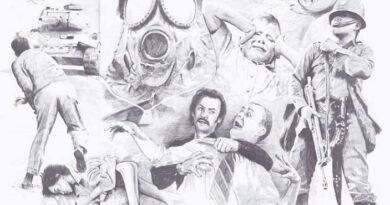“Afterlife” in Biblical View – Part 5
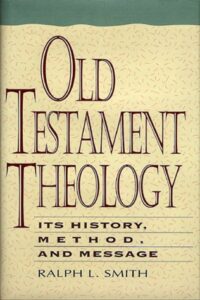
Smith, Ralph L. Old Testament Theology: Its History, Method, and Message. Broadman & Holman Publishers, Nashville, TN, USA, 1993.
Scholars often contrast the Hebrew view with the Greek view that divides human nature into a dichotomy (body/soul, spirit/flesh) or a trichotomy (body/soul/spirit) with each part in opposition to the other. The Greek view is actually Plato’s view that the human soul contains two parts: reason, the immortal part, and sensuality, the mortal part. The will, energy, or courage is the combination of the two parts and constitutes the soul. Between these two, reason and sensuality, is the forceful, energetic side of human nature that Plato calls “spirit.” Spirit is not in itself, ignoble, as are the sensations and appetites. However, in itself spirit is unitelligent, liable to turn into blind passion. It stands on a lower level than reason, although it is a servant of the mind, helping to tame the desires of the lower nature…
Plato’s view was not the same as Aristotle’s. Aristotle taught that the soul was the vital principle of the body, but neither the soul nor body could exist without the other. The body exists and lives only for the sake of the soul, but the soul is a reality only insofar as it animates something. According to Aristotle, it is “as impossible to feel, to desire, and to will, without the corporeal organs, as it is to walk without feet or to make a statue out of nothing (Weber and Perry, A History of Philosophy, 96, n. 1). Aristotle said that the soul is to the body what cutting is to the axe. Just as cutting is impossible without an axe, so, too, the constitutive function of the soul is inseparable from the body. So the “Greek” view of humans which separates and sets the various aspects of human nature in opposition to each other is really Plato’s view. The Old Testament view is radically different…
Is there life after death? From time immemorial people have buried their dead in ways which_suggest their belief in a con tinued existence after death. Many philosophers have sup ported the claim for a universal desire for an extension of life beyond the grave. Immanuel Kant said such hope “arises from the feeling, which exists in the breast of every man, that the temporal is inadequate to meet and satisfy the demands ofhis nature” (Critique of Pure Reason, 35).
Plato argued for the immortality of the soul on the basis that the true essence of the soul was the perceptive spirit of the person. The human spirit participated in the eternal archetypes of things or general concepts. These general concepts are not perishable. If a person’s spirit or soul participates in these concepts, the soul must be imperishable (see Pannenberg, What Is Man?, 46). Plato distinguished between the soul and body. Pannenberg said that modern anthropology has removed this common conception that soul and body represent two com pletely different realms of reality…
The Old Testament has no systematic or organized presentation of life after death. Bits and pieces or glimmers of truth on this subject must be gleaned from various parts of the Old Testament and studied together. By no means do all Old Testament scholars and readers agree on the interpretation of many passages that may relate to life after death.
It is generally agreed that the “doctrine” of life after death was very slow in developing in the Old Testament. F. B. Huey said, “A historical development of the doctrine of life after death can be justified on the basis that the doctrine of a resurrection of the body, the pinnacle of faith, was not fully delineated until New Testament times. The pagan accretions had to be shed by Israel in order to arrive at a resurrection doctrine, a process which took many years” (“The Hebrew Concept of Life After Death,” 55).
Several reasons may explain Israel’s slowness in developing a doctrine of life after death. The ideas of death and future life played a major role in the religions of Israel’s pagan neighbors: Egyptians, Canaanites, and Babylonians. Their Ideas concerning death and future life were false and misleading. They made death a god and deified some humans at death. The cult of the dead exerted great influence over the lives of many people in the Ancient Near East, and the idea of the dying and rising god was tied very closely to the fertility cult with its glorification of sex. Inquiry of the dead was prohibited in Israel (Lev 19:31; 20:6, 27; Deut. 18:10; 2 Kings 21:6; 23:24).The whole realm of death was unclean in the Old Testamente (Lev. 11:24; Num.19:11).
Israel’s slowness in developing a satisfactory view of life after death may have been due to her strong emphasis on “corporate personality” rather than on “pure individualism”; on the unitary view of humanity rather than the dichotomy of soul and body; or on the significance of life here and now rather than in the hereafter.
Bruce Vawter noted that because Israel excluded necromancy as a superstition and discouraged inquiry about the dead, they were compelled to examine the meaning of earthly existence to a depth and degree seemingly without parallel in the thinking of their contemporaries. Israel’s Wisdom Litera- ture stresses a high morality, a healthy materialism, and a reverence for the dignity of the body. Without a strong empha- sis on “this world,” it is unlikely that the prophetic doctrine of social justice would have been strong. “When life is valued so much, long life inevitably comes to be accounted the greatest of blessings (Ps. 21:4)” (“Intimations of Immortality and the Old Testament,” 170).
Where does the idea of a life after death begin in the Old Tes- tament? Some writers see the references to the “tree of life” and “the tree of the knowledge of good and evil” tGen. 2:46 — 3:24) as evidence of an idea of life after death. But there is certainly no reference to resurrection here. Rather than referring to life after death, the trees in the garden of Eden may represent a way to avoid dying. The “translation” of Enoch in Genesis 5:24 had a great influence on later parts of the Old Testament; however, no general doctrine of life after death can be based on Enoch’s translation. Again, there is no reference to resurrection here. When David said that at death he would go to be with his son who had died (2 Sam. 12:23), he may have been saying no more than what had already been said about being “gathered to one’s fathers” in the grave or in Sheol (Gen. 25:8,17; 35:29; 49:33; Num. 20:24; 27:13; Judg. 2:10)…
The Old Testament reports three cases of resuscitation. The first two were the raising of the widows’ sons by Elijah and Elisha, and the third was the resuscitation of an unnamed man whose dead body was thrown into Elisha’s grave and came into contact with Elisha’s body in his grave (1 Kings 17:17; 2 Kings 4:29; 18:21). All three of these people died again as far as we know.
Many scholars make the Babylonian exile a dividing line between earlier and more advanced religious concepts in the Old Testament. The collapse of the nation shifted the emphasis in Judah from the nation to the individual. Questions of suffering and justice became more intense. What had once been sporadic gleams in the darkness or a momentarily expressed hope of life after death now became “an unshakable conviction that whatever befell the righteous man in this life, the one thing that meant more to him, his fellowship with God, would never be taken from him in this life or in the life to come”…
Although these and other psalms (see 16:10-11) seem to anticipate the idea of the righteous spending eternity in heaven in the presence of the Lord, such an “other worldly” view never replaced the thought that the future was related to life on the earth. Eichrodt said, “The fundamental feature of the Old Testament hope, that history should issue in the con- summation of Clod’s sovereignty, and the establishment of his kingdom over Israel, has not been replaced by an other- worldly god of salvation for the righteous individual, divorced from all relation to things earthly” Theology of the Old Testament II, 514).
Wheeler Robinson said we must look elsewhere than to Sheol for the possibility of real advance in the idea of human destiny. The new hope springs from the belief in a continued life on the earth, “not a life beneath it, or even above it” (Inspiration and Revelation, 100). G. A. Cooke, in his commentary on E zekiel 37 and 47:1-12, said, “According to O.T, ideas of the blessed future, man is not translated to dwell with God, but God comes down to dwell with man, and His presence transforms earth into heaven”…
In the Old Testament, the final word on life after death is “resurrection.” The technical Hebrew term for resurrection, tehi yaw ha imefir , does not occur in biblical Hebrew, but is attested four times in the Mishnah and forty-one times in the Talmud. It is quite common in the Hebrew literature of the middle period and is listed in all of the dictionaries of modern Hebrew (Sawyer, “Hebrew Words for Resurrection,” 220). Although “resurrection” is not found in the Old Testament, the idea may be expressed with the use of eight verbs: pâyâ “to live”; qfim “to arise”; heqis “to awake”; lâqalt “to take”; °afd “to go up”; sub “to come back”; •fimad “to stand”; ne‘or “to arouse.”…
Almost twenty Old Testament passages may relate to resur- rection in the final form of the text (Deut. 32:39; 1 Sam. 2:6; 1 Kings 17:22; Job 14:12; 19:25-27; Pss. 1:6; 16:10; 17:15; 49:15; 71:20; 73:24; 88:10; Isa. 26:14,19; 53:11; 66:24; Ezek. 37:10; Dan. 12:2; Hos. 6:2). These passages do not prove an early belief in resurrection in Israel, according to Sawyer, but an Old Testament theology based on the final form of the text would have to include a substantial section on the subject. These passages are not just vague foreshadowings of the New Testament, but they are “clear expressions of belief in God’s power to create out of the dust and decay of the grave a new humanity where good lives do not end in suffering and justice prevails” (“Hebrew Words for Resurrection,” 230).
– pp. 251, 252, 385-394.
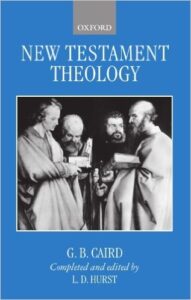
New Testament Theology , George Bradford Caird and L. D. Hurst (Ed.), New Testament Theology, 1994:
7.2. THE MEANING OF ‘ESCHATOLOGY’
‘Eschatology’ is a nineteenth-century German term which was introduced into English as early as 1845. Its classical definition is found in the Oxford English Dictionary (1891 and 1933): ‘The department of theological science concerned with the four last things, death, judgement, heaven and hell.’ In this sense ‘eschatology’ deals with the ultimate destiny of the individual. Since the beginning of this century, however, the word has been used in the sense we all now take for granted, to cover the biblical teaching about the destiny of the world and the working out of God’s purposes in and through his holy people. 16 These two distinct types of eschatology may be called ‘individual’ and ‘historical’…
The historic is almost the only kind of eschatology we find in the Old Testament — hardly surprising when it is remembered that almost all the books of the Old Testament were already written before the Jews achieved a belief in an afterlife (below). It is regrettable, however, that the one word ever came to be used to cover two such divergent forms of future hope, for its use has almost inevitably led to the quite baseless assumption that the finality which attaches to death, judgement, heaven, and hell must be characteristic also of national eschatology, and therefore to an intolerable kind of literalism in the interpretation of the imagery used by prophet and apocalyptist to describe the Day of the Lord. The complexity of the issue is exacerbated in the New Testament, since by this time both Jews and Christians hold a well-established belief in life after death. It is therefore not always easy to tell whether we are dealing with national or individual eschatology, and, as the Church moved more and more away from its original Palestinian setting into the Gentile world, there must have been a tendency to reinterpret the national in terms of the individual.
16 In I. Singer et al. (eds.), The Jewish Encyclopaedia (New York, 1901-6) v. 209, Kaufmann Kohler wrote: ‘Jewish Eschatology deals primarily and principally with the final destiny of the Jewish nation and the world in general, and only secondarily with the future of the individual: the main concern of Hebrew legislator, prophet, and apocalyptic writer being Israel as the people of God and the victory of His truth and justice.’
The distinction between the two senses is well illustrated by a passage in the Revelation of John:
When he broke the fifth seal, I saw underneath the altar the souls of these who had been slaughtered for God’s word and for holding to the testimony. They cried aloud, ‘How long, sovereign Lord, holy and true, is it to be before you pass sentence and avenge our blood on the inhabitants of earth?’ Then each of them was given a white robe, and they were told to wait patiently for a little while longer, until the roll of their brothers should be complete, those who were to be killed in Christ’s service as they had been ( Rev. 6:9-11).
The question ‘how long?’ takes us straight to the heart of all eschatology, whether personal or national; for, as we have seen, eschatology arises out of the clash between faith in a benevolent purpose of God and the harsh facts of a ruthless world. ‘If only we knew,’ say the martyrs, ‘where it is all going to end.’ But the point is that these martyrs are given a double answer to their question. First, ‘each of them was given a white robe’. These robes are unquestionably the symbol of eternal life; they have already been promised to the conqueror, along with other symbols of heavenly bliss, in the letters to the seven churches; and in the next chapter John is to see the white-robed throng of victorious martyrs led by the Good Shepherd into the green pastures beside the still waters of the spring of life. But the gift of immortality is not in itself an adequate answer to the cry of the martyrs. They have died for God’s word, and no theodicy can justify their death except the triumph of the cause for which they gave their lives. It is for the vindication of God’s justice within earthly history that they are ‘told to wait patiently a little while longer’. The initial victory of God over the powers of evil has been won by Christ on the Cross. But that victory must be repeated over and over again in the victory of the conquerors, and only when the full tally of martyrs is complete will the final victory be won.
That during the formative period of Jewish eschatology the Hebrew people had no belief in the afterlife is a fact which can hardly be overstressed. Sheol, like the Hades of the Greeks, was the land of the dead, the final dumping-ground, and was usually associated with such terms as death, oblivion, darkness, the grave, and the pit. Its inhabitants were shades, wraiths, pale photocopies relegated to the subterranean filing cabinet. 18 The individual only survives via a good name and progeny. It was national survival that counted; and as late as the second century BC Jesus ben Sira still understood the reward of pious Jews to be the continuance of their children ‘within the covenants, where their name lives for ever’ (Ecclus. 44:12-14).
When belief in an afterlife finally began to emerge, it was as a byproduct of a belief in a new age of world history dawning for the nation of Israel. The idea of resurrection, which we automatically associate with personal immortality, was first used by Hosea and Ezekiel figuratively of a national revival, and only four centuries later did it come to be used literally by Daniel of the resuscitation of the righteous dead, who would need their bodies to join in the glorious future of the nation, to which God had at last entrusted world dominion ( Dan. 12:2). Through the doctrine of the remnant another element of individualism was injected into the national hope, because it became a matter of individual faith and loyalty who did and who did not belong to the holy people of God. This dawning perception of the worth of the individual to God, often associated with Jeremiah, achieves full expression in some of the later psalms, the idea now being that the righteous have a communion with God that even death cannot destroy. When the author of the Wisdom of Solomon claims that ‘the souls of the just are in God’s hand . . . for though in the sight of men they are punished, they have a sure hope of immortality… because God tested them and found them worthy to be his’ (3:1-5), he may be using language borrowed from the Hellenistic world, 19 but his ideas are a bequest from his Jewish ancestors.
Yet in spite of a number of such points of contact, personal eschatology and national eschatology must remain distinct, and much of our difficulty with New Testament eschatology arises out of a confusion between the two. The situation is not helped by the fact that even within each of these two separate types, New Testament eschatology exhibits a bewildering variety. If we restrict ourselves to personal eschatology, what are we to make of the promise to the penitent thief, ‘Today you shall be with me in Paradise’ (Luke 23:43), which appears to conflict so strikingly with the doctrine that Jesus himself rose on the third day, and also with the widespread belief that the dead sleep until the resurrection at the last day? We cannot avoid the difficulty by demoting Paradise to the status of a waiting room, for then the promise would be less, not more, than the thief had asked. In any case we have the parable of Dives and Lazarus (Luke 16:19-31) to reckon with; for they appear to be already assigned at death to their respective destinations of torment and bliss. When we turn to the Epistles of Paul, we receive the general impression that the resurrection of the body is to take place only at the last trumpet. Yet in his first letter he can say that whether we wake or sleep we shall be alive with Christ (1 Thess. 5:10), and in his last letter he can speak of being ready to depart to be with Christ (Phil. 1:23; below). In the Revelation there is the passage already mentioned, in which the martyrs are given the white robes which equip them for eternal life in the celestial city. Yet at a later stage in the story, after they have waited the ‘little while longer’, they are said to be the only ones to participate in ‘the first resurrection’, which enables them to share the millennial reign of Christ (20:4-6).
18 According to Ezek. 32:22-30 the dead in Sheol are arranged in nations. Cf. also the beginning of Homer Iliad, which depicts the bodies of the soldiers littering the field of battle while their shades are in Hades.
19 The Greeks, no longer content with the drabness of the classical Hades, came under the influence of the philosophers to believe that the body is a tomb and the earth a prison house from which the pious soul must strive to escape at death.
This handful of examples will be amplified below, but at this point it may serve to illustrate the problem. In the past there has been a tendency to treat these varieties of eschatology as evidence either for a steady growth from primitive naïveté to ultimate sophistication, or for a decline from a hypothetical norm, the teaching of Jesus, which the early Church -whether from weakness of intellect or through a misguided zeal for applying that teaching to a new Sitz im Leben totally misunderstood.
– pp. 243-245.
7.4. INDIVIDUAL ESCHATOLOGY
7.4.1. The Redemption of the Body
We have allowed the New Testament authors to discuss the universal aspects of salvation, but this is not the whole story. Salvation must also extend to the individual. And for Paul, the earliest New Testament writer to discuss the resurrection of Jesus, the most obvious aspect of salvation which is still to come is the redemption of the body. Here we concentrate totally on Paul, for the simple reason that this is one of his unique contributions to the conference table.
After his conversion Paul accepted the early Church’s account of what happened to Jesus on Easter Sunday and rapidly built it into the structure of his theology. He believed that when Christ left the tomb his physical body was transformed into a spiritual or glorious body (Phil. 3:21), just as a seed when planted in the ground dies and is given a new body (1 Cor. 15:36-8). So too the Christian must undergo a future transformation. In 1 Corinthians this is envisaged as happening suddenly, ‘in a flash, in the twinkling of an eye’ ( 1 Cor. 15:52). A slightly different picture of the process emerges in the second letter, where Paul assures his readers that the Christian life is a steady transfiguration into the likeness of Christ. This metamorphosis goes on through a daily renewal of the inner nature, even as the outward appearance is decaying ( 2 Cor. 4:16). Some modern interpreters would have been happier if at this point Paul had said that the outer husk drops away and leaves the inner self unhampered by its weakness. But the Jew did not believe that human beings consist of an immortal soul entombed for a while in a mortal body. What happened to the body happened to the person. If there is to be eternal life, then this lowly body of humiliation must be changed even as Christ’s has been.
The New Testament writers have often been accused of treating human beings as brands plucked from the burning and the world in general as a grim vale of soul-making, with the brilliant achievements of human labour, skill, and thought as nothing more than the expendable backdrop for the drama of redemption. This was hardly the view of the Hebrews of the Old Testament. We have seen that most of the books of the Old Testament were written at a time when the Hebrew people had no belief in an afterlife for the individual. For them life meant this life. Like the God of the Creation story, they looked at the world, and behold, it was very good. Their eschatology was concerned with the vindication in history of the truth and justice of God and of His purpose for Israel and the world. The end they looked for might be described as a new heaven and a new earth, but this was figurative language, and what they meant was the present heaven and earth renewed by the transfiguring radiance of God. Their belief in an afterlife for the individual was grafted somewhat uneasily on to the older and more earthly hope. Paul’s views on this point were partly the result of this Jewish background, and partly the result of his own experience. We saw above how his critics at Corinth had tried to use his battered, unimpressive physical condition to undermine his authority, implying that if he were a real apostle God would take better care of him. Paul counters this charge by making capital of his weakness, notwithstanding his old horror of decay inherited from a Greek background. The critics, he claims, are basing their judgement on what is visible and transient (2 Cor. 4:18), just as he had once judged Christ by outward and worldly standards; but when on the Damascus Road he saw the glory of the Son of God revealed, he was never again able to view any human being on the same superficial basis ( 2 Cor. 5:16). The Christian life is therefore a steady process, the goal of which for the believer is to be transformed into the image of Christ from one stage of glory to another ( 2 Cor. 3:18); or, as he puts it elsewhere, ‘to experience the power of the resurrection, and to share his sufferings, in growing conformity with his death, if only I may finally arrive at the resurrection of the dead’ ( Phil. 3:10). In the latter passage resurrection, sufferings, and death are not seen as episodes in the story of Jesus, nor as future experiences in which Christians are one day to share, but as forces present in the Christian life now (otherwise Paul would hardly have put resurrection first). It is his belief in, and hope of, the resurrection which forms the starting point of all Christian experience. Such knowledge, on the other hand, might well lead to pride; thus to protect against it God has provided that the transformation be concealed within ‘an earthenware vessel’, a perishable body subject to pain and decay ( 2 Cor. 4:7, cf. 12:7-9); it is a treasure hid with God in Christ (Col. 3:2; cf. 2:3). Later God will clothe Christians with a new body, corresponding to the secret, inner life which God has built up within them and ready to be put on like a suit of clothes. This is so that when we appear before him we will not be ‘naked’ (gymnos), i.e. bodiless. While to the Greek this might be expected, to the Jew it is unthinkable.45
As to where this resurrection life is to be lived, Paul’s thinking may have undergone some development. When he wrote his earliest letter, he gave no hint concerning the question; believers, whether dead or alive at the coming of Christ, would be caught up to meet him in the air ( 1 Thess. 4:17). But years later in his letter to Rome he gives the impression that the life everlasting is to be lived on a transformed earth. It is likely that between the two writings he had wrestled with the question of the relation of the human physical body to the physical cosmos of which it is a part, and had concluded that the redemption of the body was unthinkable apart from the transformation of the universe as a whole (Rom. 8:18-25). Paul shared the commonly held view that the subhuman creation had been involved in the fall of the human race; the ground had been cursed for Adam’s sake, and, deprived of its proper control, nature had become red in tooth and claw. Thus for Paul the whole natural order is subject to the law of decay. The human body, which links the human race with animals that are perishing, must therefore be transformed ‘by the power which enables Him even to subject all things to himself’ ( Phil. 3:21). Paul here alludes to Psalm 8 ( Rom. 8:20 46 –cf. 1 Cor. 15:26; Eph. 1:22), where God’s purpose is that the universe should be subject to humanity. Paul’s whole doctrine of the End, and his vision of a universe redeemed, whatever minor factors may have contributed to it, is in the main a logical development of his belief that Christ is the second Adam, the one who truly reflects God’s rule over the cosmos (Col. 1: 15 ff.). Paul was certainly not dependent in this view on any literalistic interpretation of Genesis 1 and 2; there did not actually have to be a time when Adam exercised that dominion over all creation which he now attributes to Christ. All he needed to believe was that God had deliberately left creation incomplete, in order that it might be completed by the co-operation of the human race, His image in this world, and that with the coming of Christ this co-operation had become a genuine possibility. In this astonishingly modern view of the relation of human beings to their cosmic environment, they are part and parcel of the created order and must be saved in their integrity if they are to be saved at all.
45 On ‘naked’ in 2 Cor. 5:3 cf. Jean Héring, The Second Epistle of Saint Paul to the Corinthians (London, 1967), 37: ‘Never at any time did the Apostle envisage taking possession of the glory-body before the parousia. This is precisely why the state intermediate between death and resurrection is characterized as “nakedness”.’
46 At first blush Rom. 8:20 does not appear relevant to Ps. 8. Yet who is the ‘subjector’ (hypotaksanta)? Humankind, Satan, and God are possibilities (cf. W. Sanday and A. C. Headlam, A Critical and Exegetical Commentary on the Epistle to the Romans (Edinburgh, 1902), 208, and G. W. H. Lampe, “The New Testament Doctrine of Ktisis”, SJT 17 ( 1964), 458). But that the subjection is performed ‘in hope’ is decisive–God must be the subjector, which makes Rom. 8:20 almost certainly an echo of Ps. 8:6.
A large part of our difficulty with New Testament eschatology continues to be caused by our attempts to force it into an alien dogmatic mould. Along this line it may be surprising to note that there are few, if any, passages in the New Testament that promise that people will go to heaven when they die. It is true that their inheritance or treasure or new life is frequently said to be laid up for them in heaven; but those who inherit a fortune do not have to live in the vaults of their father’s bank in order to enjoy it.
For Paul the ‘down-payment’ (arrabōn) 47 of this future inheritance is the Spirit which God has given the Christian, a spirit not of slavery but of sonship, crying, ‘Abba, father’ ( Rom. 8:15; Gal. 4:6). This enables the Christian to enter into the relationship which Jesus has with God as Father: Jesus is leading many sons to His own glory ( Rom. 8:19), although we groan along with the rest of the universe waiting for it to happen. The truly surprising feature of Paul’s theology on this point is not the groaning of the universe 48 but the equation of sonship with the redemption of the body ( Rom. 8:23).
Elsewhere Paul relates the future redemption of the body to the resurrection of Christ by an appeal to the Jewish calendar: Jesus has been raised from the dead, the ‘firstfruits of them that sleep’ (1 Cor. 15:20). The imagery is drawn from the ecclesiastical year which began Nissan 1 (late March), with the first festival, Passover (Nissan 15) coinciding with the first of the eight days of Unleavened Bread. On the third day of the eight the priests offered a wave offering of the first sheaf of the harvest, and seven weeks later they celebrated the ingathering of the grain harvest at Pentecost. Paul’s vivid analogy, in which the Church is living between Passover and Pentecost, with the firstfruits already offered but the harvest yet to come, might naturally give rise to imminent expectations: Passover had happened, and now Pentecost is not far off. But in another sense Pentecost had happened.
The imagery was not intended to produce a logical conceptual unity such as we might insist upon today. The Spirit came, in accordance with the scriptures; and this was also an event of the last days (cf. Acts 2:16 ff.)
47 On this term see above, p. 128 n. 22.
48 See above, p. 105, for the Jewish view that the whole universe fell with Adam. This shows that on this point Paul was not innovating.
7.4.2. Death and Eternity
One of the great perplexities surrounding the future hope in the New Testament is the fact that alongside the traditional Jewish belief in the resurrection of the body at the Last Day lie statements which seem to imply that the future life begins immediately at death. In Mark 12: 18 ff. Abraham, Isaac, and Jacob already enjoy eternal life in the presence of God. According to Luke 16:19 ff. the future punishment and reward of the rich man and Lazarus, respectively, are experienced at a point when there is still the opportunity for messengers of warning to be sent to living relatives. As we have seen, the difficulty of harmonizing the promise to the penitent thief (‘Today you shall be with me in Paradise’, Luke 23:43) with the traditional Jewish expectation of ‘a resurrection of good and wicked alike’ (Acts 24:15) is not eased by demoting Paradise to the status of a waiting room. And when John of Patmos looks under the heavenly altar and sees the souls of those who have suffered for their testimony, and hears their plea for vindication, he gets a twofold response. All the martyrs are to be given a white robe, the token of eternal life, but the final triumph of the cause for which they died must be delayed until the filling up of the full tally of those who are to die in God’s cause. Here entry into the presence of God and the partaking of ‘the springs of the water of life’ (7:17) are not delayed until the final denouement of history.
The problem presents itself in its most acute form in Paul, who appears to speak in both ways, sometimes in the confines of a single letter. It has already been noted that in Philippians 3:20 f. Paul expresses belief in a future bodily transformation at the day of Christ.
But in the same letter his desire is ‘to depart and be with Christ; that is better by far; but for your sake there is greater need for me to stay on in the body’ (1:23). And in his second letter to the church at Corinth, in a discussion ringing with echoes of his earlier comments in 1 Corinthians 15 concerning the future resurrection, he says, ‘We know that as long as we are at home in the body we are exiles from the Lord … We are confident, I repeat, and would rather leave our home in the body and go to live with the Lord’ ( 2 Cor. 5:6-8).
This dilemma has led interpreters to extremely diverse solutions. Philippians 1:23, for instance, has been construed variously to mean:
(1) Paul thinks that he would experience a special bodily translation, as had happened in the case of Enoch and Elijah. (2) He is thinking of the particular reward reserved only for martyrs. (3) He is not thinking of life after death but of the identity with Christ in martyrdom. (4) He is thinking of a bodiless intermediate state in which the dead wait for the final resurrection. (5) In true Hebrew fashion he is using parataxis, in which mutually irreconcilable views are held without any attempt to reconcile them.Such views are obviously not of the same weight. With reference to (1), for instance, if Paul were thinking of a special case, whether himself alone or the category of martyrs, it is hardly likely that he would have addressed his comments to the entire Corinthian church in the first person plural (‘We are confident . . .’, 2 Cor. 5:6-8). 49 Nor does it make much sense that he would have viewed the sleep of death as far better, or that Christians who are slumbering in their tombs are ‘with Christ’, who has long since left the tomb.
There is one other option to consider before we dissolve into exegetical despair. Paul may have thought of death in a very real sense as sleep. When one is asleep time is, from our conscious perspective, suspended. The next thing one is consciously aware of is waking. Along the same lines after falling asleep in death the next thing the Christian is aware of is the Day of Christ. Thus it could be equally truethat one enters the presence of Christ at the moment of death and that this is experienced by everyone simultaneously.
Such a potentially ingenious solution to the problem of relating time and eternity should not be dismissed by twentieth-century sophisticates as too ‘modern’. If the apostolic conference finds itself at an impasse on this point, perhaps it should allow a voice from the gallery to enter the discussion. While younger than the New Testament writers and not in their canonical league, the writer of 2 Esdras has an interesting solution to the problem we are considering:
49 It also runs counter, incidentally, to Paul’s emphasis on salvation sola fide.
I said, ‘But surely, lord, your promise is to those who are alive at the end. What is to be the fate of those who lived before us, or of ourselves, or of those who come after us?’
He said to me, ‘I will compare the judgment to a circle: the latest will not be too late, nor the earliest too early.’ (2 Esd. 5:41 f.)
The idea is that in a circle all points on the circumference are equidistant from the centre. Could one ask for a better analogy to the problem of death and resurrection, in which every person’s death is equidistant from the Day of the Lord?
– pp. 266-272.
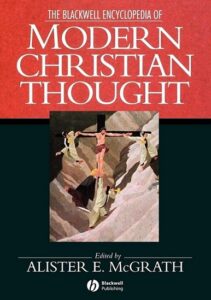
Alister E. McGrath (Ed.), The Blackwell Encyclopedia of Modern Christian Thought, Blackwell Publishing, Cambridge, England, 1995:
There is no concept of an immortal soul in the Old Testament, nor does the New Testament ever call the human soul immortal.
– p. 101.
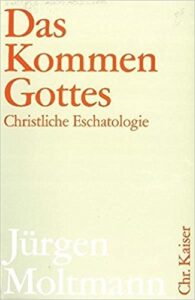
Jürgen Moltmann, Das Kommen Gottes: Christliche Eschatologie, Gütersloher Verlagshaus, Germany, 1995 (English: The Coming of God: Christian Eschatology, Fortress Press, Minneapolis, USA, 1996):
The immortality of the soul is an opinion – the resurrection of the dead is a hope. The first is a trust in something immortal in the human being, the second a trust in the God who calls into being the things that are not, and makes the dead live. In trust in the immortal soul we accept death, and in a sense anticipate it. In trust in the life-creating God we await the conquest of death – ‘death is swallowed up in victory’ (I Cor. 15.54) – and an eternal life in which ‘death shall be no more’ (Rev. 21.4). The immortal soul may welcome death as a friend, because death releases it from the earthly body; but for the resurrection hope, death is ‘the last enemy’ (I Cor. 15.26) of the living God and the creations of his love.
– pp. 65, 66.
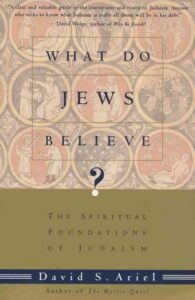
David S. Ariel, What Do Jews Believe? – The Spiritual Foundations of Judaism, 1995:
“In the Torah there is no idea of body and soul as two distinct and different aspects of a human being. A living man or woman is seen as a unified organic being, described in Hebrew as nefesh. Nefesh refers to human life in general and to human character in particular. According to the Bible, the first human, Adam, was created as a living being (nefesh chayah). Genesis describes the actual creation of Adam as the singular act of bringing all of him into existence at once: “And Jehovah God proceeded to form man out of dust from the ground and to blow into his nostrils the breath of life, and the man came to be a living soul.” (Genesis 2:7) The Hebrew word nefesh is also used to refer to human feelings and experiences. This is how it is used in the verse “You shall not oppress a stranger, for you know the feelings [nefesh] of the stranger” (Exodus 23:9).
The Bible also uses the term ruah (spirit) and neshamah (breath) to describe human life. Ruah refers to the spirit or breath, the power that comes from outside the body and causes life as its visible manifestation. In the Book of Job, God is described as the source of life and human vitality: “In whose [i.e., God’s] hand is the life [nefesh] of every living thing, and the breath [ruah] of all mankind” (Job 12:10). The Bible uses neshamah as a synonym for the living human organism: “And Jehovah God proceeded to form man out of dust from the ground and to blow into his nostrils the breath of life [nishmat chayim], and the man came to be a living soul.” (Genesis 2:7)
There is no differentiation, however, between the body, nefesh, ruah and neshamah in the Bible. They all refer to the living, breathing, feeling human being created by God. The human being is a monistic or unified being consisting of one integrated nature. There is no notion in the Bible of any dualism or dual nature – such as body and soul – in the human being. The Bible contains no mention of a separate soul.”
– pp. 53, 54.
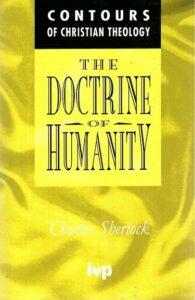
Charles Sherlock, The Doctrine of Humanity (Downers Grove, Illinois, USA: Intervarsity Press, 1996):
… the vocabulary here [in 1 Thessalonians 5:23] is certainly ‘tripartite’ – body, soul, spirit – but that the stress is on the sanctification of the whole person, and that in the future coming of Christ. In popular thought, the point of making a sharp distinction between body and soul is the assertion that the body does not survive death, and people sense that something else must do so. The text … teaches that every aspect of being human is to be kept for the coming of Christ, which contradicts the reason for dividing up human beings. Paul is free to speak of being human from different aspects, but avoids any obscuring of the unitary reality we find in Christ, seeing it as headed toward greater fulfillment in Christ, not division.
… the text [Hebrews 4:12] is even clearer about the issues: if a strict division between body and soul is held, so must a divide be made between joints and marrow! The obvious point is that the gospel of Christ finds its way to the very core of our being, our ‘heart.’ In order to speak of the gospel’s effective work in sinners the vocabulary of division is used. But there is no thought of it reflecting our actual nature. It is sin which divides us from God, and brings the sense of division within each one of us. It is thus not our material nature as such, but that nature as corrupted, which brings about the common distinction between body, soul, mind, or spirit.
– p. 218.
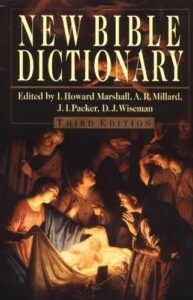
D. R. W. Wood, A. R. Millard, J. I. Packer, D. J. Wiseman, I. Howard Marshall (eds.), New Bible Dictionary, 3rd. ed. 1996:
“A particular instance of the Heb. avoidance of dualism is the biblical doctrine of man. Greek thought, and in consequence many Hellenizing Jewish and Christian sages, regarded the body as a prison-house of the soul: sōma sēma ‘the body is a tomb’. The aim of the sage was to achieve deliverance from all that is bodily and thus liberate the soul. But to the Bible man is not a soul in a body but a body/soul unity; so true is this that even in the resurrection, although flesh and blood cannot inherit the kingdom of God, we shall still have bodies (1 Cor. 15:35ff.).”
– p. 284.
“The Greeks thought of the body as a hindrance to true life and they looked for the time when the soul would be free from its shackles. They conceived of life after death in terms of the immortality of the soul.”
– p. 1010.
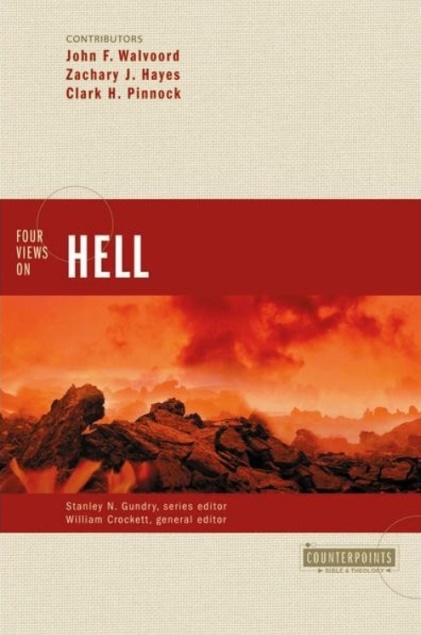
Clark Harold Pinnock (1937-2010), William Crockett and Stanley N. Gundry (Eds.), Four Views of Hell, Zondervan, Grand Rapids, MI, USA, 1996:
The Bible does not teach the natural immortality of the soul; it points instead to the resurrection of the body as God’s gift to believers. God alone has immortality (1 Tim. 6:16) but graciously grants embodied life to his people (1 Cor. 15:21, 50-54; 2 Tim. 1:10) God gives us life and God takes it away. There is nothing in the nature of the human soul that requires it to live forever. The Bible teaches conditionalism: God created humans mortal with a capacity for life everlasting, but it is not their inherent possession. Immortality is a gift God offers us in the gospel, not an inalienable possession. The soul is not an imortal substance that has to be placed somewhere if it rejects God. If a person does reject God finally, there is nothing in biblical anthropology to contradict what Jesus plainly taught – God will destroy the wicked, body and soul, in hell. Once this is seen, a person is free to read the Bible on hell naturally and straightforwardly.
The Greek doctrine of immortality has affected theology unduly on this point – a good example of the ocasional hellenization of Christian doctrine. The idea of souls being naturally imortal, however, distorts the interpretation of biblical texts about hell. It virtually requires a person to stretch the experience of destruction into endless conscious torment. Presumably the traditional view of the nature of hell was originally constructed in the following way: People mixed up their belief in divine judgment after death (which is scriptural) with their belief in the immortality of the soul (which is unscriptural) and concluded (incorrectly) that the nature of hell must be everlasting conscious torment. The logic would be impeccable if only the second premise were not false. Of course, it might be the case that God will still give immortality to the wicked and require them to experience it in everlasting fiery torment. My argument does not rule that out, though it would be a problem explaining why he would choose to do so.
These first two points (the exegeses of Scripture and the unbiblical doctrine of the immortality of all souls) belong together and mutually suggest that the wicked are not going to be tortured forever. The Bible warns against absolute loss in hell and has the anthropological assumption to support that possibility. Orthodoxy needs to straighten out its anthoropology.
– pp. 148, 149.
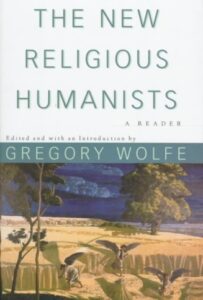
Berry, Wendell. “Christianity and The Survival of Creation”. Wolfe, Gregory. The New Religious Humanists. The Free Press, 1997:
“The crucial test is probably Genesis 2:7, which gives the process by which Adam was created: “the Lord God formed man of the dust of the ground, and breathed into his nostrils the breath of life: and man became a living soul.” My mind, like most people’s, has been deeply influenced by dualism, and I can see how dualistic minds deal with this verse. They conclude that the formula for man-making is: man = body + soul. But that conclusion cannot be derived, except by violence, from Genesis 2:7, which is not dualistic. The formula given in Genesis is not man = body + soul; the formula there is soul = dust + breath. According to this verse, God did not make a body and put a soul into it, like a letter into an envelope. He formed man of dust; by breathing his breath into it, he made the dust live. Insofar as it lived, it was a soul. The dust, formed as man and made to live, did not embody a soul; it became a soul. “Soul” here refers to the whole creature. Humanity is thus presented to us, in Adam, not as a creature of two discrete parts temporarily glued together, but as a single mystery.”
– p. 253.
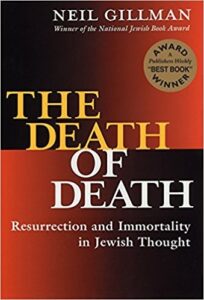
Neil Gillman, The Death of Death – Resurrection and Immortality in Jewish Thought, Jewish Lights Publishing, USA, 1997 (This cover is from 2000 edition.):
WHAT HAPPENS UPON DEATH?
For much of the past two millennia, the Western world, Jews included, has characterized death as the soul’s separation from the body. This view stems originally from Greek philosophy, certainly from Plato and possibly from the earlier mid-sixth century Orphic religion. In Plato’s dialogue, Phaedo, set in the hours before Socrates’ suicide, Socrates characterizes death as “the separation of soul and body,” and continues
And to be dead is the completion of this [separation]; When the soul exists in herself, and is released from the body and the body is released from the soul, what is this but death?
However much this notion of separation of soul from body became part of Judaism’s understanding of the afterlife, it is not at all the biblical view.
Biblical anthropology knows nothing of this dualistic picture of the human person which claims that the human person is a composite of two entities, a material body and a spiritual or non-material soul. In Greek thought, the soul is a distinctive entity which preexists the life of the person, enters the body at birth, separates from the body at death and continues to exist in some supernal realm.
The Bible, in contrast, portrays each human as a single entity, clothed in clay-like flesh which is animated or vivified by a life-giving spark or impulse variously called ruah, nefesh, neshamah or nishmat hayyim.
In the later tradition, these terms came to be understood as synonymous with the Greek “soul.” But this identification is not in the Bible. The term “nefesh” signifies the neck or the throat (as in Job 41:13), or the life-blood (as in Leviticus 17:10-11). By extension, it signifies a living human being since it refers to the two characteristics that make a person alive: Breath and blood. When Exodus 1:5 numbers Jacob’s progeny as “seventy nefesh,” it means simply seventy persons, not seventy disembodied “souls”.
In the Bible, the term neshamah also means breath (as in I Kings 17:17) and, again by extension, a living person. The last verse of Psalm 150 does not mean that all disembodied souls will praise the Lord, but rather that “all that breathes” – all living beings – will do so. Job 34:14, 15 further identifies neshamah with ruah. Ruah can mean “wind” or “breath.”
His breath [ruah] departs;
He returns to the dust;
On that day his plans come to nothing. (Psalm 146:4)Death is understood as the “going out” of the ruah, or of the similar “going out” of the nefesh (as in Genesis 35:18), or of God’s “taking away” the nefesh (as in 1 Kings 19:4) or the neshamah (as in Job 34:14).
It is precisely this notion that something “goes out” of the body at death that enabled the later tradition to identify this “something” with Plato’s soul. But in the biblical context, what leaves the person is not a distinct entity but rather that vivifying spark which had initially given life to the clay-like flesh in the first place. Key to understanding all these passages is the Genesis 2:7 account of the creation of the human person:
[T]he Lord god formed man from the dust of the earth. He blew into his nostrils the breath of life [nishmat hayyim], and man became a living being [nefesh hayyah].
If at creation, the clod of dust became a living being when God breathed the breath of life “into” his nostrils, then death occurs when that same breath of life “goes out” of the body. Identifying this breath of life with what was later called a “soul” would attribute to it a distinct identity which would include self-consciousness. But it simply does not have any of this in the biblical texts. Here, the reference is rather to an impersonal spark that, eventually, simply dissipates.
The only significant biblical anticipation of that later doctrine may be found in Ecclesiastes, which is commonly understood to reflect a Hellenistic world view. In Ecclesiastes 12:7, the typical “going out” of the ruah becomes a “return to God”:
And the dust returns to the ground
As it was,
And the lifebreath [ruah] returns to God
Who bestowed it.This text is clearly an extension of Genesis 2:7. It distinguishes between the dust of the ground and the lifebreath. Each returns to where it came from: The dust (or body) to the ground and the lifebreath to God. This reference, unusual in the Bible, to the ruah’s “return to God” may echo the Greek notion that the ruah is an entity which comes from God and at death “returns” to some “place.” If this interpretation is accurate, Ecclesiastes represents a way-station between the characteristic biblical view and the more dualistic anthropology of the later tradition. But it is equally likely that the text simply recapitulates the view in Genesis that the lifebreath was breathed into the dust by God, and that at death, it simply returns to God.
In the Bible, then, death occurs when the lifebreath that originally made the person alive, leaves the body and dissipates. It has no distinct identity, nor does it go nor returns to any specific place…
That the death of each human being is final, that God has no power over our destiny after death, is the overwhelming testimony of the Bible. But as the biblical age drew to a close, two doctrines entered into Jewish writings which overturned that belief. One of these – that at some point in the future, God will raise at least some human bodies from their graves – is enunciated in three brief but stricking biblical passages. The second – that the human body is mortal, but that every human possesses a soul which separates from the body at death and enjoys a continued existence with God – is not in the Bible. But it is explicit in a number of books written by Jews roughly between the second century BCE and the second century CE, commonly referred to as the intertestamental period.
These two doctrines eventually merge and form the core of a Jewish doctrine of the afterlife which becomes canonical in Judaism from the age of the Talmud to the dawn fo modernity.
Only three biblical passages explicitly affirm that God will return at least some dead to life. Two of these are in Isaiah and the third is in Daniel…
CULTURAL BORROWING OR INTERNAL DEVELOPMENT
But inquiring into the sources from which the author of Daniel drew [the idea of resurrection] must involve going beyond discovering earlier or contemporaneous biblical texts which he might have read. It is to ask an even more basic question: Where did the idea of resurrection come from? How did it get into the heads of these authors in the first place? What is its provenance?
An almost intuitive approach to these questions is to look at the literature of the cultures surrounding biblical Israel for some hint of the presence of this notion, and then to assume that it was later transmitted to Israel. On the afterlife, two ancient near-eastern cultures might qualify as the source for biblical thinking: Egypt and Persia. Ancient Egypt, which believed that the dead live on in the realm of Osiris, developed elaborate funerary rites to prepare the dead for the voyage to this realm. The problem here is that these Egyptian texts are significantly older (dating from the third millennium BCE) than the biblical material, that none of their details corresponds to the biblical account, and that there is no clear way to trace the process of transmission. Finally, and most important, these texts do not speak of a resurrection: They simply claim that the dead continue to enjoy a form of existence in the netherworld.
A Persian influence is more likely. Zoroastrian texts are closer in time to the Bible (from the ninth to the second century BCE), they speak of resurrection and, as in the Bible, their broader setting is one of judgement. Further, from the middle of the fifth century BCE on, Jews lived among Persians. If this is a case of cultural borrowing, the likely candidate would be Zoroastrianism.
But it is equally conceivable that there was no cultural borrowing here at all, that the idea of resurrection evolved within Israel as a thoroughly natural development of ideas deeply planted in biblical religion from the outset. If, in fact, God created the world and humanity in the first place, if God is the ultimate force Whose power extends over all of nature and history, if God can send Israel into exile and then redeem it once again (from Egyptian slavery and in the time of Cyrus), if God can renew the natural cycle each year, if God can, as Isaiah 66 promises, create “a new heaven and a new earth,” then why cannot God raise human beings from the grave? Why cannot God, in the words of Isaiah 25:8, “destroy death forever”? Why should God’s power one’s fate end with death? Why is death more powerful than God?
– pp. 75-77, 83, 84, 96, 97.
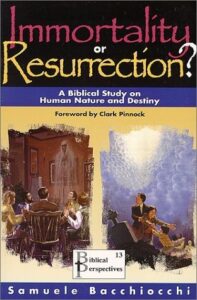
Samuelle Bacchiocchi, Immortality or Resurrection? – A Biblical Study on Human Nature and Destiny, Biblical Perspectives, USA, 1997:
“To Depart and Be With Christ.” In writing to the Philippians, Paul says: “My desire is to depart and be with Christ, for that is far better. But to remain in the flesh is more necessary on your account” (Phil 1:22-23). Dualists consider this text one of the strongest proofs that at death the soul of the saved immediately goes into the presence of Christ. For example, Robert Morey states: “This is the clearest passage in the New Testament which speaks of the believer going to be with Christ in heaven after death. This context deals with Paul’s desire to depart this earthly life for a heavenly life with Christ. There is no mention or allusion to the resurrection in this passage.”
The fundamental problem with this interpretation is the failure to recognize that Paul’s statement, “My desire is to depart and be with Christ” is a relational and not an anthropological statement. By this I mean, it is a statement of the relation that exists and continues between the believer and Christ through death, not a statement of the “state” of the body and soul between death and the resurrection.
Helmut Thielicke correctly points out that the New Testament is not concerned about a ‘state’ which exists between death and resurrection, but for a relation that exists between the believer and Christ through death. This relationship of being with Christ is not interrupted by death because the believer who sleeps in Christ has no awareness of the passing of time. As Thielicke puts it, “The removal of a sense of time means for those who are awakened that the long night of death is reduced to a mathematical point, and they are thus summoned out of completed life.”
The attempts to extract from Paul’s statement support for the belief in the transit of the soul to heaven at death are unwarranted because, as Ray Anderson rightly observes, “Paul did not think the question of the status of the person between death and resurrection was a question that needed to be considered.” The reason is that for Paul those who “die in Christ” are “sleeping in Christ” (1 Cor 15:18; 1 Thess 4:14). Their relation with Christ is one of immediacy, because they have no awareness of the passing of time between their death and resurrection. They experience what may be called “eternal time.” But for those who go on living on earth-bound temporal time there is an interval between death and resurrection. The problem is that we cannot synchronize the clock of eternal time with that of our temporal time. It is the attempt to do this that has led to unfortunate speculations and controversies over the so-called intermediate state.
By expressing his desire “to depart and be with Christ,” Paul was not giving a doctrinal exposition of what happens at death. He is simply expressing his longing to see an end to his troubled existence and to be with Christ. Throughout the centuries, earnest Christians have expressed the same longing, without necessarily expecting to be ushered into Christ’s presence at the moment of their death. Paul’s statement must be interpreted on the basis of his clear teachings regarding the time when believers will be united with Christ.
With Christ at His Coming. Paul addresses this question in his letter to the Thessalonians where he explains that both the sleeping and living believers will be united with Christ, not at death, but at His coming. “The dead in Christ will rise first; then we who are alive, who are left, shall be caught up together with them in the clouds to meet the Lord in the air; and so we shall always be with the Lord” (1 Thess 4:17). The “so” (houtos) refers to the manner or way in which believers will be with Christ, namely, not by dying, but by being resurrected or translated at His coming. Basil Atkinson notes that the word “so” in Greek houtos “means ‘in this way.’ Its place here at the beginning of the sentence makes it emphatic, so that the meaning of the sentence becomes: ‘And this is the way that we shall be for ever with the Lord,’ implying that there is no other way and leading us to conclude that we shall not be with the Lord till the day of the resurrection.”
It should be noted that in describing the union with Christ which believers will experience at His coming, Paul never speaks of disembodied souls being reunited with resurrected bodies. Rather, he speaks of “the dead in Christ” being risen (1 Thess 4:16). Obviously, what is risen at Christ’s coming is not just dead bodies but dead people. It is the whole person who will be resurrected and reunited with Christ. Note that the living saints will meet Christ at the same time “together with” the resurrected saints (1 Thess 4:17). Sleeping and living saints meet Christ “together” at His coming, not at death.
The total absence of any Pauline allusion to an alleged reunion of the body with the soul at the time of the resurrection constitutes, in my view, the most formidable challenge to the notion of the conscious survival of the soul. If Paul knew anything about this, he would surely have alluded to it, especially in his detailed discussion of what will happen to sleeping and living believers at Christ’s coming (1 Thess 4:13-18; 1 Cor 15:42-58). The fact that Paul never alluded to the conscious survival of the soul and its reattachment to the body at the resurrection clearly shows that such a notion was totally foreign to him and to Scripture as a whole.
G. C. Berkouwer correctly observes that “New Testament believers are not oriented towards their ‘private bliss’ so that they forget the coming Kingdom, but they do indeed await being ‘with Christ,’ for in Him they acquired a new future.” The eschatological hope of being with Christ is not an individualistic hope realized at death by disembodied souls, but a corporate hope realized at Christ’s coming through the resurrection, or translation, of the whole person and of all the believers.
Paul’s desire “‘to depart and be with Christ’ does not reflect a wish for an intimate ‘entre nous [between us experience]’ in heaven, because the phrase is integrally related to cosmic redemption at the end of time.”57 The cosmic, corporate dimension of the “with Christ” experience is clearly evident in the same epistle to the Philippians, where Paul speaks repeatedly of the consummation of the Christian hope on the day of Christ’s coming. He reassures the Philippians that “he who began a good work in you will bring it to completion at the day of Christ’s coming” (Phil 1:6). The completion and consummation of redemption takes place not by going to be with Christ at death, but by meeting with Christ on the glorious day of His coming.
It is Paul’s prayer that the Philippians “may be pure and blameless for the day of Christ” (Phil 1:10). On that day, Christ “will change our lowly body to be like his glorious body, by the power which enables him even to subject all things to himself” (Phil 3:21). It is this change from mortality to immortality that makes it possible for believers to be with Christ. This is why in the same epistle Paul tells that he was “straining forward” toward that day because he knew that he would receive “the prize of the upward call of God in Christ Jesus” (Phil 3:13-14), not at death, but at the glorious day of Christ’s coming.
“At Home With the Lord.” In 2 Corinthians 5:1-10, Paul expresses again the hope of being with Christ by using several striking metaphors. This passage is rightly regarded as the “crux interpretum,” primarily because the figurative language is cryptic and open to different interpretations. Unfortunately, many interpreters are eager to derive from this passage, as from Philippians 1:22-23, precise anthropological, chronological, or cosmological definitions of life after death. Such concerns, however, are far removed from Paul, who is using the poetic language of faith to express his hopes and fears regarding the present and future life, rather than the logical language of science to explain the afterlife. All of this should put the interpreter on guard against reading into the passage what Paul never intended to express.
The passage opens with the preposition “for – gar,” thus indicating that Paul picks up from chapter 4:16-18, where he contrasts the temporal, mortal nature of the present life which is “wasting away” (2 Cor 4:16) with the eternal, glorious nature of the future life, whose “eternal weight of glory [is] beyond all comparison” (2 Cor 4:17). Paul continues in chapter 5 developing the contrast between temporality and eternity by using the imagery of two dwelling places representative of these characteristics.
“For we know that if the earthly tent we live in is destroyed, we have a building from God, a house not made with hands, eternal in the heavens.
Here indeed we groan, and long to put on our heavenly dwelling, so that by putting it on we may not be found naked. For while we are still in this tent, we sigh with anxiety; not that we would be unclothed, but that we would be further clothed, so that what is mortal may be swallowed up by life. He who has prepared for us this very thing is God, who has given us the Spirit as a guarantee” (2 Cor 5:1-5).
In this first section of the passage, Paul uses two sets of contrasting metaphors. First, he contrasts “the earthly tent,” which is subject to destruction, with the “building from God, a house not made with hands,” which is “eternal in the heavens.” Then Paul highlights this contrast by differentiating between the state of being clothed with the heavenly dwelling and that of being found naked.
The second section, verses 6 to 10, is more straightforward and contrasts being in the body and therefore away from the Lord, with being away from the body and at home with the Lord. The key statement occurs in verse 8 where Paul says: “We are of good courage, and we would rather be away from the body and at home with the Lord.”
The enormous variety of interpretations of this passage can be grouped into three main views, each the direct result of some presuppositions.
The history of interpretation of 2 Corinthians 5:1-10 clearly shows how much exegesis and interpretation are influenced by presuppositions. We briefly state and evaluate each of the three main views which may be called: (1) the intermediate state, (2) the resurrection of the body after death, and (3) the resurrection of the body at Christ’s coming.
The Intermediate State. Most past and present scholars maintain that in this passage Paul describes the existence of the believer in heaven with Christ during the intermediate state between death and resurrection.58 Briefly stated, this interpretation runs as follows: The tent and the present clothing are the earthly existence. Being unclothed represents dying and the resulting state of nakedness signifies the disembodied existence of the soul during the intermediate state. The building we have in heaven represents, for some, the body that will be reattached to the soul at the resurrection, while for others, it is the soul itself that dwells in heaven.
Robert Morey defends the latter view, saying: “Where in Scripture are we told that our resurrection body is already created and waiting in heaven for us? The only rational answer is that Paul is speaking of the soul’s dwelling in heaven.” 59 On the basis of these verses, Morey argues that “The place of dwelling [of the soul] while [the person is] alive is on earth, while the place of dwelling after death is in heaven.”60
Three major problems exists with the intermediate-state interpretation of this passage. First of all, it ignores that the contrast between the heavenly building and the earthly tent is spatial and not temporal. By this we mean that Paul is contrasting the heavenly mode of existence with the earthly mode of existence. He is not discussing the disembodied state of the soul between death and resurrection. Now, if the apostle had expected to be with Christ at death in his disembodied soul, would he not have alluded to it in this context? Would he not have said, “For we know that if the earthly tent we live in is destroyed . . .” we shall be with our souls in the presence of God in heaven. But, in all of his writings, Paul never alludes to the survival and existence of the soul in the presence of Christ. Why? Simply because such a notion was foreign to Paul and to Scripture.
Second, if the state of nakedness is the disembodied existence of the soul in the presence of Christ during the intermediate state, why does Paul shrink back at the thought of being “found naked” (2 Cor 5:3)? After all, this would have fulfilled his earnest desire to be “at home with the Lord” (2 Cor 5:8). The fact is the notion of nakedness as the state of the soul stripped from the body is found in the writings of Plato and Philo, but not in Paul’s writings.
Third, if the heavenly building is “the soul’s dwelling in heaven,” then believers must have two souls, one on earth and the other in heaven because Paul says that “we have a building from God.” The present tense indicates a present possession. How can the believer’s soul be in heaven with Christ and on earth with the body at the same time?
A Resurrection Body After Death. A number of scholars argue that the heavenly building is the resurrected body, which believers receive immediately at death. Allegedly, Paul teaches that life in the earthly body, which is represented by the “earthly tent” (2 Cor 5:1, 4), is followed immediately by the acquisition of the resurrection body, represented by “the building from God, eternal in the heavens” (2 Cor 5:1). Thus, Paul is supposed to reject altogether an intermediate disembodied condition of “being naked” or “unclothed” (2 Cor 5:3-4). This view rests on the premise that during the interval between the writing of 1 and 2 Corinthians, Paul had some close brushes with death that caused him to give up his earlier hope of surviving the Parousia and came to believe, instead, that believers receive their resurrection bodies at the moment of their death.
A fundamental problem with this interpretation is the assumption that Paul in later years abandoned the hope of the resurrection at the Parousia in favor of an immediate resurrection at death. If that were true, Christians would face the dilemma of not knowing which Paul to believe: the earlier or the later Paul? Fortunately, such a dilemma does not exist because Paul never changed his view on the time of the resurrection. This is indicated by the immediate context of the passage under consideration, which specifically mentions the resurrection at the Parousia: “Knowing that he who raised the Lord Jesus will raise us also with Jesus and bring us into his presence” (2 Cor 4:14). Paul could hardly have stated it more clearly that Christ will raise us and bring us into His presence at His coming and not at death.
If Paul had modified his views of the resurrection time since he wrote 1 Corinthians 15, it is doubtful whether he would have said, “we know” (2 Cor 5:1), which implies a known teaching. Furthermore, even in his later writings, Paul explicitly links the resurrection with the glorious return of Christ (Rom 8:22-25; Phil 3:20-21). It is hard to believe that Paul would have altered his eschatology twice.
Resurrection Body at the Parousia. In recent years, a number of scholars have defended the view that the heavenly building is the “spiritual body” given to believers at the time of Christ’s coming.64 There are, indeed, elements in this passage which support this view. For example, the idea of putting on the heavenly dwelling (2 Cor 5:2) and the statement that when we are further clothed, the mortal will be swallowed up with life (2 Cor 5:4).
These statements are strikingly similar to the imagery found in 1 Corinthians 15:53, where Paul discusses the change that believers will experience at Christ’s coming: “For this perishable nature must put on the imperishable, and this mortal nature must put on immortality.”
The proponents of this view rightly protest against an eschatology of heaven which focuses on the individual bliss experienced immediately after death. Their strongest argument is that “if Paul expected to receive the spiritual body at once [at death] then a resurrection at the Last Day would no longer be necessary.”
Tostate it simply, the proponents of this view interpret Paul’s metaphors as follows: While living on this earth we are clothed with the “earthly tent” of our mortal body. At death we are “unclothed” when our bodies are “destroyed” in the grave. At Christ’s coming, we will “put on the heavenly dwelling” by exchanging our mortal bodies for the glorious immortal bodies.
Overall, we lean toward this interpretation. Yet there is a major weakness in all three interpretations, namely, they interpret the passage by focusing primarily on the body, whether it be the “spiritual body” given to individual believers at death, or to all the believers together at Christ’s coming. But Paul here is not trying to define the state of the body before death, at death, or at Christ’s coming, but two different modes of existence.
Heavenly and Earthly Modes of Existence. After rereading the passage countless times, I sense that Paul’s primary concern is not to define the state of the body before and after death, but rather to contrast two modes of existence. One is the heavenly mode of existence which is represented by the “building from God, a house not made with hands, eternal in the heavens” (2 Cor 5:1). The other is the earthly mode of existence which is typified by “the earthly tent” which is “destroyed” at death.
The meaning of the imagery of “putting on” or “being clothed” with “our heavenly dwelling” may have more to do with accepting Christ’s provision of salvation than with “the spiritual body” given to believers at the Parousia. We find support for this conclusion in the figurative use of “heavenly dwelling” with reference to God and of “being clothed” with reference to the believer’s acceptance of Christ.
Paul’s assurance that “we have a building from God” (2 Cor 5:1) reminds us of such verses as “God is our refuge and strength” (Ps 46:1), or “Lord, Thou hast been our dwelling place” (Ps 90:1). Christ referred to Himself as a temple in a way that is strikingly similar to Paul’s imagery of the heavenly dwelling “not made with hands.” He is reported to have said: “I will destroy this temple that is made with hands, and in three days I will build another, not made with hands” (Mark 14:58). If Paul was thinking along these lines, then the heavenly dwelling place is Christ Himself and the gift of eternal life He provides to believers.
How, then, does a believer put on “the heavenly dwelling”? A look at Paul’s use of the metaphor of clothing may provide an answer. “As many as were baptized into Christ were clothed with Christ” (Gal 3:27). In this text, the clothing is associated with the acceptance of Christ at baptism. Paul also says: “This perishable being must be clothed with the imperishable, and what is mortal must be clothed with immortality” (1 Cor 15:53, NEB). Here the clothing represents the reception of immortality at Christ’s coming. These two references suggest that the “clothing” can refer to the new life in Christ, which is accepted at baptism, renewed every day, and consummated at the Parousia, when the final clothing will take place by means of the change from mortality to immortality.
In the light of the above interpretation, to “be found naked” or “unclothed” (2 Cor 5:3-4) may stand in contrast with being clothed with Christ and His Spirit. Most likely “naked” for Paul stands not for the soul stripped from the body, but for guilt and sin which results in death. When Adam sinned, he discovered that he was “naked” (Gen 3:10). Ezekiel allegorically describes how God clothed Israel with rich garments but then exposed her nakedness because of her disobedience (Ez 16:8-14). One may also think of the man without “the wedding garment” at the marriage feast (Matt 22:11). It is possible, then, that being “naked” for Paul meant to be in a mortal, sinful condition, bereft of Christ’s righteousness.
Paul clarifies what he meant by being “unclothed” or “naked” versus being “clothed” when he says: “So that what is mortal may be swallowed up by life” (2 Cor 5:4). This statement is interpreted in the light of 1 Corinthians 15:53 to mean that our mortal bodies will be changed into spiritual bodies. But is Paul in 1 Corinthians 15:53 primarily concerned with the body as such? A careful reading of 1 Corinthians 15 suggests that Paul addresses the question of the body parenthetically, merely to answer the question, “How are the dead raised? With what kind of body?” (1 Cor 15:35). After showing the continuity between the present and the future body, Paul moves to the larger question of the transformation that human nature as a whole will experience at Christ’s coming: “For this perishable nature must put on the imperishable, and this mortal nature must put on immortality” (1 Cor 15:53).
The same holds true of 2 Corinthians 5. Paul is not concerned with the state of the body or the soul as such before or after death. Incidentally, he never speaks of the soul nor of the “spiritual body” in 1 Corinthians 5. Instead, Paul’s concern is to show the contrast between the earthly mode of existence, represented by “earthly tent,” and the heavenly mode of existence, represented by the “heavenly dwelling”. The former is “mortal” and the latter is immortal (“swallowed up by life;” 2 Cor 5:4). The former is experienced “at home in the body” and “away from the Lord” (2 Cor 5:6). The latter is experienced “away from the body” and “at home with the Lord” (2 Cor 5:8).
The failure to recognize that Paul is speaking about two different modes of existence and not about the state of the body or soul after death, has led to unneccesary, misguided speculations about the afterlife. A good example is Robert Peterson’s statement: “Paul confirms Jesus’ teaching when he contrasts being ‘at home in the body’ and ‘away from the Lord’ with being ‘away from the body and at home with the Lord’ (2 Cor 5:6, 8). He presupposes that human nature is composed of material and immaterial aspects.”
This interpretation is gratuitous, because neither Jesus or Paul are concerned with defining human nature ontologically, that is, in terms of its material or immaterial components. Instead, their concern is to define human nature ethically and relationally, in terms of disobedience and obedience, sin and righteousness, mortality and immortality. This is Paul’s concern in 2 Corinthians 5:1-9, where he speaks of the earthly and heavenly modes of existence in relationship to God, and not of the material or immaterial composition of human nature before and after death.
The Souls Under the Altar. The last passage we examine is Revelation 6:9-11, which reads: “When he opened the fifth seal, I saw under the altar the souls of those who had been slain for the word of God and the witness they had borne; they cried out with a loud voice, ‘O Sovereign Lord, holy and true, how long before thou wilt judge and avenge our blood on those who dwell upon the earth?’ Then they each were given a white robe and told to rest a little longer, until the number of their fellow servants and their brethren should be complete, who were to be killed as they themselves had been.”
This passage is often cited to support the notion that the “souls” of the saints exist after death in heaven as disembodied, conscious spirits. For example, Robert Morey emphatically states:
“The souls are the disembodied spirits of the martyrs who cry out to God for vengeance on their enemies…. This passage has always proven a great difficulty to those who deny that believers ascend to heaven at death. But John’s language is clear that these souls were conscious and active in heaven.”
This interpretation ignores that apocalyptic pictures are not meant to be photographs of actual realities, but symbolic representations of almost unimaginable spiritual realities. John was not given a view of what heaven is actually like. It is evident that there are no white, red, black, and pale horses in heaven with warlike riders. Christ does not appear in heaven in the form of a lamb with a bleeding knife wound (Rev 5:6). Likewise, there are no “souls” of martyrs in heaven squeezed at the base of an altar. The whole scene is simply a symbolic representation designed to reassure those facing martyrdom and death that ultimately they would be vindicated by God. Such a reassurance would be particularly heartening for those who, like John, were facing terrible persecution for refusing to participate in the emperor’s cult.
The use of the word “souls – psychas” in this passage is unique for the New Testament, because it is never used to refer to humans in the intermediate state. The reason for its use here is suggested by the unnatural death of the martyrs whose blood was shed for the cause of Christ. In the Old Testament sacrificial system, the blood of animals was poured out at the base of the altar of burnt offerings (Lev 4:7, 18, 25, 30). The blood contained the soul (Lev 17:11) of the innocent victim that was offered as an atoning sacrifice to God on behalf of penitent sinners. Thus, the souls of the martyrs are seen under the altar to signify that symbolically they had been sacrificed upon the altar and their blood has been poured at the base. In chapter 2 we noted that in the Old Testament the soul is in the blood. In this instance, the souls of the martyrs are under the altar because their blood had been symbolically poured at the base of the altar.
The language of sacrificial death is used elsewhere in the New Testament to denote martyrdom. Facing death, Paul wrote: “For I am already on the point of being sacrificed” (2 Tim 4:6). The apostle also says that he was glad “to be poured out as a libation” for Christ (Phil 2:17). Thus, Christian martyrs were viewed as sacrifices offered to God. Their blood shed on earth was poured symbolically at the heavenly altar. Thus their souls are seen under the altar because that is where symbolically the blood of the martyrs flowed.
No Representation of Intermediate State. The symbolic representation of the martyrs as sacrifices offered at the heavenly altar can hardly be used to argue for their conscious disembodied existence in heaven. George Eldon Ladd, a respected evangelical scholar, rightly states: “The fact that John saw the souls of the martyrs under the altar has nothing to do with the state of the dead or their situation in the intermediate state; it is merely a vivid way of picturing the fact that they had been martyred in the name of God.”
Some interpret the “white robe” given to the martyrs as representing the intermediate body given to them at death.70 But in Revelation, the “white robe” represents not the intermediate body, but the purity and victory of the redeemed through Christ’s sacrifice. The redeemed who come out of the great tribulation “have washed their robes and made them white in the blood of the Lamb” (Rev 7:14). “The church at Laodicea is counseled to buy gold, white robes, and eyesalve (Rev 3:18), a strange suggestion if white robes are glorified bodies.”71 The “souls” being clothed with white robes most likely represent God’s recognition of their purity and victory through “the blood of the Lamb” in spite of their ignominious deaths.
The souls of the martyrs are seen as resting beneath the altar, not because they are in a disembodied state, but because they are awaiting the completion of redemption (“until the number of their fellow servants and their brethren should be complete” Rev 6:11) and their resurrection at Christ’s coming. John describes this event later on, saying: “I saw the souls of those who had been beheaded for their testimony to Jesus and for the word of God, and who had not worshipped the beast or its image and had not received its mark on their foreheads or their hands. They came to life, and reigned with Christ a thousand years…. This is the first resurrection” (Rev 20:4). This description of the martyrs as “beheaded for their testimony to Jesus and for the word of God” is very much like that of Revelation 6:9. The only difference is that in chapter 6 the deceased martyrs are told to rest, while in chapter 20 they are brought to life. It is evident that if the martyrs are brought to life at the beginning of the millennium in conjunction with Christ’s coming, they can hardly be living in heaven in a disembodied state while resting in the grave.
To sum up, the function of the vision of the martyrs under the heavenly altar is not to inform us on the intermediate state of the dead, but to reassure believers, especially the martyrs who in John’s time and later centuries gave their lives for the cause of Christ, that God ultimately would vindicate them.
Conclusion. Our study of the state of the dead during the interim period between death and resurrection has shown that both the Old and New Testaments consistently teach that death represents the cessation of life for the whole person. Thus, the state of the dead is one of unconsciousness, inactivity, and sleep that will continue until the day of the resurrection.
Our analysis of the usage of the word sheol in the Old Testament and of hades in the New Testament has shown that both terms denote the grave or the realm of the dead and not the place of punishment for the ungodly. There is no bliss or punishment immediately after death, but an unconscious rest until resurrection morning.
The notion of hades as the place of torment for the wicked derives from Greek mythology, not Scripture. In mythology hades was the underworld where the conscious souls of the dead are divided in two major regions, one a place of torment and the other of blessedness. This Greek conception of hades influenced some Jews during the intertestamental period to adopt the belief that immediately after death the souls of the righteous proceed to heavenly felicity, while the souls of the godless go to a place of torment in hades. This popular scenario is reflected in the Parable of the Rich Man and Lazarus.
The popular view of hades as a place of torment for the wicked crept into the Christian Church and eventually even influenced Bible translators. In the KJV, for example, hades is translated “hell” instead of “grave” in 10 of the 11 occurrences of the term. This inaccurate translation has misled many uninformed Christians into believing that at death the souls of the wicked are thrown into hellfire, where they await the resurrection of their bodies which will only serve to intensify their agony in hell.
Our study of all the relevant Biblical passages has shown that the notion of the intermediate state in which the souls of the saved enjoy the bliss of Paradise, while those of the unsaved suffer the torments of hell derives not from Scripture, but from Greek dualism. It is most unfortunatethat during much of its history, Christianity by and large has been influenced by the Greek dualistic view of human nature, according to which the body is mortal and the soul immortal. The acceptance of this deadly heresy has conditioned the interpretation of Scripture and given rise to a host of other heresies such as Purgatory, eternal torment in hell, prayer for the dead, intercession of the saints, indulgences, and etherial view of paradise.
It is encouraging to know that today many scholars of all religious persuasions are launching a massive attack against the traditional dualistic view of human nature and some of its related heresies. We can only hope that these endeavors will contribute to recovering the Biblical wholistic view of human nature and destiny, and thus dispel the spiritual darkness perpetrated by centuries of superstitious beliefs.
– pp. 179-190 (footnotes ommited).
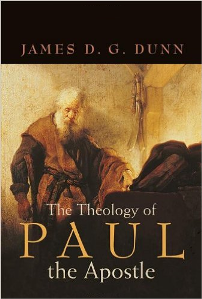
James D. G. Dunn, The Theology of Paul The Apostle, W. B. Eerdmans Publishing Co., Grand Rapids, MI, USA and Cambridge, UK, 1998:
Psyche and Pneuma
The only other pairing which calls for some attention is psyche, “soul,” and pneuma in the sense of “(human) spirit.” Both terms are little used by Paul, but their usage has some significance for our appreciation of his anthropology and of how Paul conceived of the interface between the divine and the human.
Paul uses psyche just 13 times, 4 of them in Romans. This itself is in striking contrast to the regular use of the term in classical Greek and of nephesh in the OT (756 times). The difference between Hebraic and Greek anthropology becomes as clear here as anywhere. For in classical Greek usage the psyche is “the essential core of man which can be separated from his body and which does not share in the body’s dissolution.” Here is the origin of the concept of “the immortality of the soul,” as the continuing existence of an inner, hidden part of the human person after death. In contrast, in Hebrew thought, nephesh denotes the whole person, the “living nephesh” of Gen. 2.7.*
* [NOTE] BDB, nephesh 4. Striking here is the fact that nephesh can be used of the dead person shortly after death, while the corpse still has the person’s distinguishing features (see Jacob, TDNT 9.620-21).
Paul’s usage clearly echoes the typical Hebraic mind-set. Psyche denoting the person is clear in several passages. Elsewhere the sense slides into “life,” or psyche as the focus of human vitality.
The number of uses of pneuma denoting human spirit in Paul is uncertain, since it is unclear in several passages whether the divine Spirit or the human spirit is referred to. In any case, it will be significant that the number of references to the (Holy) Spirit far outweigh those to the (human) spirit. The immediate inference which can fairly be drawn is that for Paul the gospel is not about an innate spirituality awaiting release, but about the divine Spirit acting upon and in a person from without. More to the point here, the spirit is evidently that dimension of the human person by means of which the person relates most directly to God. Hence passages like Rom. 1.9 (“I serve God with my spirit”) and 8.16 (“the Spirit bears witness with our spirit”), the analogy between the Spirit of God and the human spirit in 1 Cor. 2;11, and the idea that the person “who is united with the Lord is one spirit” (1 Cor. 6.17), not to mention the ambiguous references noted above. Indeed there has been a persistent view that for Paul the human spirit is but a manifestation of the divine Spirit. This could well reflect the influence of Hebraic thought. And though it would not be inconsistent with Stoic (and subsequently Gnostic) anthropology in particular, it marks a further difference between characteristic Hebraic and Hellenistic thought in that it is the pneuma which is the highest (or deepest) dimension of the person rather than the nous.
As with the two previous anthropological pairs there is evidendy an overlap of meaning in the respective usage ranges of psyche and pneuma. This reflects the origins of both terms in Greek and Hebrew usage, but in Paul’s developed usage the influence is predominantly from Hebrew anthropology. For both terms (psyche/nephesh and pneuma/ruach) express an original identification of “breath” as the life force. In the Hebrew scriptures the overlap is evident in a number of texts. Most striking is Gen. 2.7 — “God breathed into his nostrils the breath (nesamah) of life; and man became a living nephesh” — since wsamah and ruach are close synonyms (e.g., Job 27.3; Isa. 57.16). But in the interval between that earlier usage and Paul a distinction becomes clearer — pneuma denoting more the Godward dimension of the human being, psyche limited more to the vital force itself. We need not attempt to trace the development. Its outcome is clear enough in Paul’s own usage, which is all that need concern us here. I refer once again to 1 Cor. 15.44-46, but also 2.13-15. For in 15.44-46 psyche and psychikos clearly denote the living person, but one limited to the present bodily existence (in contrast to the soma pneumatikon, the “spiritual body”). And in 2.14 the psychikos person is by definition one who is unable to receive or appreciate the things of the pneuma.
Where this observation may be of wider relevance is in the insight that for Paul the human being is more than “soul.” Psyche is not sufficient to describe the depths of the individual. Persons exist on and are related to fuller dimensions of reality than just the psychical. At the end of a century which has grown to appreciate the insights of Freud and Jung, then, Paul’s anthropology may carry a salutary lesson for us. That lesson would be to warn against thinking that the psyche can reveal everything of importance about the inner life of a person. Paul, once again in line with his Jewish heritage, also speaks of the human spirit, a still deeper depth or higher reality of the person. Moreover, he both implies and teaches that it is only by functioning at that level and by opening the human spirit to the divine Spirit that the human being can be whole. At least, that is an important feature of his theology and gospel — as we shall see…
The process of salvation has a goal and an end. Paul had no thought of existence as a repeating cycle of birth and rebirth. Human life climaxed in death, either as the victory of sin and death or as their defeat and destruction. Except for the favoured few (only Enoch and Elijah come to mind), the process had to be worked right through. The fact of Jesus’ own death made that clear: if that one died, then none could escape death. The resurrection of Jesus was so central to the gospel because the good news included the fact and promise of triumph over death. So too with the principal aspects of salvation’s beginnings in human life. Justification would only be complete in the final vindication. Participation in Christ would achieve its goal in the complete transformation of believers into the image of God in Christ. The work of the Spirit would be finished when the glory lost and the image disfigured by human disobedience were wholly renewed (2 Cor. 3.18; 4.4, 6). Salvation was not, could not be, complete within this life. The realization of hope lies beyond the confines of present existence: “If we have hoped in Christ only in this life, we are of all people the most pitiable” (1 Cor. 15.19); the Christian hope focuses on what cannot yet be seen (Rom. 8.25); it is “laid up for you in the heavens” (Col. 1.5).
All this we have picked out and highlighted at various points in the preceding pages. But we could hardly end this section without gathering together the various aspects and emphases of Paul’s hope of complete salvation. As with his parousia hope (§12), the individual elements are clear enough. How they hang together is less clear.
The most obvious element is what follows from § 18.5 — the resurrection of the body. The importance of that hope lay not least in the fact that so many aspects of Paul’s theology come together in it. It is the immediate consequence of cross and resurrection (1 Corinthians 15), is integral to the gospel (15.12-19), and confirm that victory over death is central to the gospel (15.21-22, 26, 54-57). It resolves forever the tension between flesh and body (15.42-54). It completes God’s purpose in creating humanity by renewing the image of God in resurrected humanity (15.45-49). It is the final outworking of the process of inner renewal and outward decay (2 Cor. 4.16-5.5). It includes the renewal of creation as a whole (Rom. 8.19-23). And all was made possible by Christ’s resurrection as the “firstborn” and prototype — resurrection “with Christ” (2 Cor. 4.14), resurrection body conformed to his glorious body — and by the activity of God’s Spirit, the firstfruits of the Spirit as only the beginning of the harvest of resurrected bodies (Rom. 8.23).
On this subject the most intriguing paragraph composed by Paul must be 2 Cor. 5.1-5:
‘For we know that if the earthly tent we live in is destroyed, we have a building from God, an eternal house in the heavens, not made with hands. For in this one we groan, longing to be overclothed with our heavenly dwelling, so that having stripped off [or having put it on] we will not be found naked. For while we are in this tent, we groan, being burdened, in that we do not wish to be unclothed, but to be overclothed, in order that what is mortal may be swallowed up by life. And he who has made us for this purpose is God, who has given to us the first instalment of the Spirit.
The passage is evidently the climax of a larger unit of exposition (2 Cor. 4.16-5.5). It contains a number of unresolved issues of exegesis, particularly in 5.2-4. But its most obvious function is to express Paul’s confidence (4.16) that the present process of wasting away (“outer nature”) and renewal (“inner nature”) will climax in the transformation into the resurrection body (4.17-5.4), of which the Spirit is already the first instalment and guarantee (5.5). In its basic affirmation, then, the expectation is the same as in 1 Cor. 15.53-54, though here the hope of resurrection is imaged as putting on a further garment (2 Cor. 5.2, 4).*
*[NOTE:] Despite N. Walter, “Hellenistische Eschatologie bei Paulus?Zu 2 Kor. 5.1-10,” ThQ 176 (1996) 53-64, the absence of soma (“body”) in 2Cor. 5.1-5 (contrast 1 Cor. 15.35-44) has no significance, as the later Rom. 8.11, 23 confirms. See also Penna, “The Apostle’s Suffering: Anthropology and Eschatology in 2 Corinthians 4.7-5.10,” Paul 1.232-58 (particularly 246-54), who notes the absence of any reference to “soul,” indicating that any echo of a more dualistic Hellenistic conceptuality is hardly more than that; and above §3.2.
Whether we should talk of a development in Paul’s thought — Paul now envisaging an “intermediate state” (between death and parousia), where previously he expected to be alive at the parousia (1 Cor. 15.51-52) — is a moot question. All we need note is the possibility that Paul envisaged an intermediate state (“naked,” “unclothed” — 5.3-4) in which the groaning caused by the already-not yet tension (Rom. 8.23) might continue beyond death and up to the parousia (2 Cor. 5.2, 4). Either way, however, Paul envisages an incompleteness in the process of salvation which can only be resolved by the new body of resurrection.*
*[NOTE:] Hence the impossibility of translating Paul’s hope into a belief in “the immortality of the soul”; see also O. Cullmann, Immortality of the Soul or Resurrection of the Dead? The Witness of the New Testament (London: Epworth, 1958).
The other most clearly set out feature of Paul’s eschatological expectation is the final judgment. We have already noted that this conviction was part of Paul’s Jewish inheritance. Also that Paul’s christology of exaltation fully embraced the thought of Christ fulfilling God’s role (acting as his representative?) in that final judgment. Here we need simply to observe that Paul did not envisage believers as exempt from that final judgment. “All of us must appear before the judgment seat of Christ, in order that each might receive the things done through the body, with reference to what each has done, whether good or bad” (2 Cor. 5.10).
– pp. 76-78, 487-490.
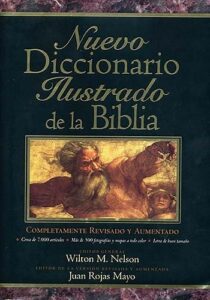
Nuevo Diccionario Ilustrado de la Biblia, Nelson, Wilton M. (Nashville, TN, EE.UU: Editorial Caribe), 1998:
ALMA Termino que en el Antiguo Testamento es traduccion comun del sustantivo hebreo nefesh, que a su vez se deriva del verbo nafash (respirar, rehacerse). Aparece unas 755 veces en el Antiguo Testamento con significados muy variados.
Talvez el sentido original de nefesh haya sido “garganta” (canal de la respiracion) o “cuello”, como el acadio napishtu, pues este sentido se conserva en el Antiguo Testamento en textos como Sal 69.1 y Jon 2.7. De alli viene el sentido de “soplo” de vida (→ ESPIRITU), como en Job 41.21 (“aliento”, RV). Asi, en hebreo, morir se expresa muchas veces por “exhalar la nefesh” (Jer 15.9, BJ). Puesto que la respiracion es senal de vida, el alma (“soplo”) se considera como el principio de la vida (Gn 35.18). Ademas, “hacer volver la nefesh” significa hacer revivir (1 R 17.21s); salvar la nefesh de una persona es salvar su vida (Sal 72.13s).
La nefesh (“vida”) de la carne esta en la → SANGRE (Lv 17.11). En un sentido mas amplio, nefesh puede definir a un ser vivo en la totalidad de su existencia, sea animal (Gn 1.20, 21, 24; “seres”) o ser humano (Ex 1.5; “personas”). En este sentido nefesh se utiliza tambien para denotar la accion de amarse a si mismo: amar como a su nefesh significa “como a si mismo” (1 S 18.1). A veces nefesh tambien designa a un cadaver, quizas por eufemismo (Lv 21.1; “muerto”).
En contraste con el pensamiento filosofico griego (p. ej., Platon), es notable que el Antiguo Testamento jamas habla de la inmortalidad del alma. Al contrario, se dice que la nefesh muere (Nm 23.10; Jue 16.30, donde nefesh se traduce “yo”). La nefesh no es algo distinto del cuerpo que baja al → SEOL, sino el ser humano total (Sal 16.10; 30.3). A los habitantes del Seol no se les llama “almas” ni espiritus, sino “muertos” (refaim en Sal 88.10; metim en Is 26.14, 19). Hoy dia es comun reconocer muchas pruebas en el Antiguo Testamento para una doctrina de la supervivencia del ser humano despues de la muerte, pero estas pruebas llevan mas bien a una ensenanza acerca de la persona total y no del alma en el sentido platonico.
Es notable que ademas de la vida fisica, se atribuyen a la nefesh todas las funciones psiquicas. Por ejemplo, los pensamientos se atribuyen a la nefesh (Est 4.13, VM), como tambien al → CORAZON y al → ESPIRITU. En 2 R 9.15 se traduce por “voluntad”. La nefesh es la sede del amor (Gn 34.3) y el odio (Sal 11.5), de la tristeza (Sal 42.6) y la alegria (Sal 86.4). Siente hambre (Sal 107.9) y sed (Pr 25.25), pero tambien busca a Dios y suspira por El (Sal 42.1, 2; 103.1s).
Asi, en la psicologia del Antiguo Testamento la nefesh tiene una funcion muy semejante a la del → ESPIRITU. Sin embargo, nefesh significa sobre todo, la vida, mientras que “espiritu” indica fuerza o poder.
En el Nuevo Testamento “alma” es la traduccion comun del griego psyje que a su vez deriva del verbo psyjo (“soplar”), y aparece mas o menos cien veces.
Psyje (como nefesh) significa a veces “ser viviente”, y puede referirse a un animal (Ap 16.3, “ser vivo”) o a una persona (Ro 13.1, “persona”; cf. la forma plural en Hch 7.14; 27.37). Con el pronombre posesivo, psyje puede significar tambien “yo mismo” (Mt 12.18; Jn 12.27, “mi alma”).
Psyje muchas veces denota la vida fisica (Mt 6.25), y es virtualmente sinonimo de “cuerpo vivo” (p. ej. en Mc 8.35–37 donde “alma” tiene el sentido de “vida”). Quizas sea la connotacion “fisico-animal” del sustantivo psyje lo que determina en ocasiones el uso del adjetivo psyjikos (1 Co 15.44, “animal”; cf. v. 46 con 2.24, “natural”).
Tambien psyje puede indicar el principio de la vida, el cual, vinculado con el cuerpo, es un aspecto del ser humano total (Mt 10.28; Hch 20.10, BJ: “su alma esta en el”). Como principio de vida, la psyje es el asiento de los pensamientos (Hch 4.32; Flp 1.27), las emociones (Mc 14.34; Jn 12.27) y los actos de la voluntad (Ef 6.6, BC y Taize; cf. Col 3.23).
Finalmente, como principio de vida, psyje indica en algunos textos el asiento de una vida que trasciende la vida terrenal. Este uso, muy parecido al de algunos filosofos griegos (p. ej., Platon), tiene cierta base en algunos dichos de Jesus (Mt 10.28, 39; Mc 8.35–37), pero se desarrolla en los escritos posteriores (Heb 6.19; 10.39; 13.17; 1 P 1.9, 22; 2.11, 25 ). “Alma” llega incluso a significar algo inmortal, distinto del cuerpo (Ap 6.9; 20.4). Sin embargo, no se niega la necesidad de la → RESURRECCION corporal (Ap 20.4s).
Sería muy aventurado interpretar 1 Ts 5.23 como una enseñanza de la tricotomía griega (cf. Heb 4.12); es más bien una manera de subrayar la totalidad de la persona (“todo vuestro ser”) como objeto de la santificación (cf. Dt 6.4; Mc 12.30).
Bibliografia:
P. Van Imschoot, Teologia del Antiguo Testamento, Ediciones Fax, Madrid, 1969, pp. 351-378, 386ss.
INMORTALIDAD (en griego, athanası́a). Termino usado en la literatura y mitologia griegas y hecho popular en tiempos de Socrates (470–399 a.C.) y Platon (427–347 a.C.). Se aplico a los dioses griegos, a quienes se atribuia la cualidad de ser inmortales. Para los griegos este concepto no solamente tenia una connotacion temporal, sino implicaba especialmente la participacion del individuo en la gloria de los dioses. Por tal razon todo griego buscaba la divinizacion como meta de su vida.
Originalmente este termino nunca se refirio a lo que ahora se entiende por la inmortalidad del → ALMA. Fue con el surgimiento de la escuela platonica que este concepto se convirtio en dogma.
En el Antiguo Testamento no encontramos un termino equivalente a inmortalidad; sin embargo, el concepto de la supervivencia despues de la → MUERTE es claro. La idea de inmortalidad en el pensamiento hebreo surge a partir del conocimiento de Jehova, el Dios viviente de los hebreos, y de su relacion con los hombres y por ende con la muerte. El hombre afirma su supervivencia post mortem por la garantia de la eternidad de Dios. El Antiguo Testamento no cesa de recalcar esta cualidad de Dios frente a los otros dioses (Sal 18.46; 42.2; 84.2; 96.5s; 106.28ss; 115.3–8; Jer 10.11; 23.36; Os 1.10). El senorio de Dios sobre la muerte se muestra claramente en la vida de Enoc (Gn 5.24) y Elias (2 R 2.10, 11), a quienes Dios los arrebato sin experimentar la muerte. Segun todo lo anterior, es evidente que el Antiguo Testamento manifiesta un desarrollo paulatino, dentro del pensamiento hebreo, del concepto de la inmortalidad. En los periodos intertestamentario y novotestamentario, existian tres corrientes:
En la literatura mas antigua (Gn 15.15; 25.8; 37.35; 49.29) aparece la idea de una supervivencia parcial (una proyeccion o sombra vaga). La personalidad humana no perecia del todo sino que continuaba existiendo en forma pasiva en una region tenebrosa denominada → SEOL. Carecia del “aliento de vida” (Gn 2.7) y permanecia en una soledad existencial sin relacion con Dios y los demas hombres (Job 3.13; 10.21s; 17.11–16; 26.5s; Sal 88.11s; 94.17; 115.17). Todavia no habia surgido la idea de una retribucion en ultratumba; los premios y castigos se reciben en esta vida (Dt 7.12, 13).
En la literatura sapiencial (Job, Salmos, Eclesiastes) surge el clamor de justicia de los justos que sentian cerca la muerte y no habian experimentado la alegria de la bendicion divina. Se pone de manifiesto que la vida terrena es insuficiente para premiar al justo y castigar al malo, y entonces aparece la idea de una interrelacion Dios-justo. El justo no se preocupa por lo que le sucedera despues de la muerte, sino por su comunion con Dios; esta seguro de que la muerte no podra destruirlo. Mas aun, se origina la idea de un regreso a la vida, de una → RESURRECCION (Job 19.26; Sal 17.15; 36.8ss; 73.24). El injusto, por otra parte, esta condenado a una muerte eterna (Sal 49 y 73).
Estas ideas se agudizaron mas despues de la catastrofe politica del pueblo judio durante el cautiverio, cuando el concepto individualista de retribuciones y castigos se hizo mas popular y los conceptos de inmortalidad y resurreccion llegaron a su madurez (Is 24.21; 25.8; 26.19; 27.13; 53.8, 10; Ez 37; Dn 12.2; Os 6.1ss). Este nuevo enfasis se encuentra mas extendido en los libros extracanonicos (cf. 2 Mac 7.9ss; Las parabolas de Enoc; Baruc y el Testamento de los doce patriarcas). En esta linea continuaron los que permanecieron en el pensamiento tradicional judaico, segun el cual no era posible dividir la personalidad humana en cuerpo y alma. Nunca → ALMA ( nefes ) ni → ESPIRITU (ruah ) significaron entidades capaces de existir aisladas del cuerpo despues de la muerte. El Antiguo Testamento resistio la influencia de la religion cananea que celebraba ritualmente la constante vuelta a la vida de un dios que simbolizaba la naturaleza. Con todo, recientes estudios en la literatura de → UGARIT revelan fascinantes similitudes linguisticas y literarias con nuestros Salmos, sobre todo en torno a los conceptos de inmortalidad, paraiso, resurreccion y ascension (cf. Sal 1; 17; 23; 30; 49; 73; 91).
Por otro lado, aparece el pensamiento judaico-alejandrino, cargado de la filosofia greco-platonica, y el concepto de inmortalidad se desarrolla permeado de la idea dualista de la persona (cuerpo y alma). Por ser el alma inmaterial, invisible y eterna (ya que existe antes del cuerpo), no puede experimentar la destruccion. El cuerpo, por ser visible, material y finito, esta destinado a la destruccion. Esta linea de pensamiento se manifiesta sobre todo en la literatura apocrifa (Sabiduria de Salomon 3.1ss; 9.15; y 4 Mac), donde el concepto de la inmortalidad del alma aparece como dogma.
La otra linea de pensamiento, sustentada por los → SADUCEOS, fue mas radical y terminante: no existe la inmortalidad por cuanto el hombre no sobrevive mas alla de la muerte (Mc 12.18).
El Nuevo Testamento reafirma la inmortalidad de Dios (1 Ti 6.16). En cuanto al hombre, tanto la ensenanza de Jesus ( Mt 7.14; 18.8s; 19.17; 22.23ss; Lc 16.24; Jn 11.23ss) como la de Pablo (Ro 6.22; 2 Co 5.4) recalcan la → VIDA de ultratumba, en especial para los que creen en Cristo. Sin embargo, esta vida no se atribuye a la inmortalidad del hombre sino a la → RESURRECCION del cuerpo, la cual Dios operara en virtud de la resurreccion de Jesucristo (1 Co 15, passim). La palabra athanası́a aparece dos veces en 1 Co 15.53s, pero solo como sinonimo de incorruptibilidad (→ MUERTE).
Bibliografia:
M. Garcia Cordero, Teologia de la Biblia I, BAC, Madrid, 1970, pp. 288s, 479, 510–524, 528. P. van Imschoot, Teologia del Antiguo Testamento, Fax, Madrid, 1969, pp. 386–424.
– Entradas “Alma” y “Inmortalidad”.
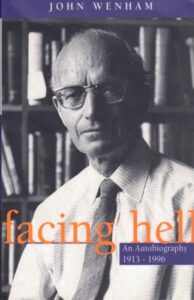
John William Wenham (1913-1996), Facing Hell: The Story of a Nobody, An Autobiography, Carlisle, England: Paternoster Press, 1998:
Immortality of the Soul
There is thus a great weight of material which prima facie suggests destruction as the final end of the lost. The traditional view gains most of its plausibility from a belief that our Lord’s teaching about Gehenna has to be wedded to a belief in the immortality of the soul. A fierce fire will destroy any living creature, unless that creature happens to be immortal. If man is made immortal, all our exegesis must change. But is he? From Genesis 3 onwards man looks mortal indeed; we are clearly told that God alone has immortality (1 Tim. 6:16); immortality is something that well-doers seek (Rom. 2:7); immortality for the believer has been brought to light by the gospel (2 Tim. 1:10) – he gains immortality (it would appear) when he gains eternal life and becomes partaker of the divine nature; immortality is finally put on at the last trump (1 Cor. 15:53). No, say the traditionalists, God in making man made him immortal, so that he must live on, not only beyond death but also beyond the second death, for ever and ever. The fires of hell will continue to inflict pain on persons they cannot consume.
Some acknowledge that only God is inherently immortal and that he could if he wished annihilate anything that he has made, including human beings. But he has willed both that all who believe should become partakers of the divine nature and so become immortal he has also willed that those who refuse the gospel invitation should not die but should remain alive suffering the unending torment which they deserve. So we are not immortal by nature but by divine decree, which in practical terms seems to come to the same thing.
Now the curious thing is that when asked for biblical proof of the immortality of the soul, the answer usually given is that it is nowhere explicitly taught, but that (as we have already quoted from Shedd) ‘it is everywhere assumed’. Goulburn similarly says that the doctrine of man’s immortality ‘seems to be graven on man’s heart almost as indelibly as the doctrine of God’s existence (p. 68)’. The great Dutch theologian Hermann Bavinck defends it as a biblical doctrine but says that it is better demonstrated by reason than by revelation. That life beyond death is repeatedly taught in Scripture and is instinctively believed by everyone, I readily agree, but of its nature and endurance we know nothing except by revelation. If anything has become pellucidly clear to me over the years it is this: philosophizings about the after-life are worthless; we must stick to Scripture and Scripture alone. Certainly something as important as the immortality of the soul and the endless pain of the lost cannot be assumed!
– excerpt from Chap. 27, “The Case For Conditional Immortality”, pp. 229-257.
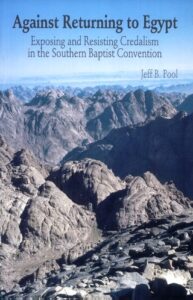
Jeff B. Pool, Against Returning to Egypt: Exposing and Resisting Credalism in the Southern Baptist Convention, Mercer University Press, Macon, GA, USA, 1998:
For example, on the basis of carefully developed biblical studies, the evangelical John Stott offers a nicely measured statement. “I do not dogmatise about the position to which I have come. I hold it tentatively. But I do plead for frank dialogue among Evangelicals on the basis of Scripture. I also believe that the ultimate annihilation of the wicked should at least be accepted as a legitimate, biblically founded alternative to their eternal conscious torment.” (John Stott, “John Stott’s Response to Chapter 6,” in Evangelical Essentials: A Liberal-Evangelical Dialogue, by David L. Edwards and John Stott [Downers Grove IL: Intervarsity Press, 1988] 320; similarly, see Edward Fudge, “The Final End of the Wicked,” Journal of the Evangelical Theological Society 27 [September 1984]: 325-34). More accurately, many Christians understand their own viewpoints as “conditional immortality” and not under the often pejorative designation of “annihilationism” (e.g., John Wenham, The Goodness of God [Downers Grove IL: Intervarsity Press, 1974] 34-41). Contemporary Baptist theologians also develop similar viewpoints (Clark Pinock, “Fire, Then Nothing,” Christianity Today 31 [20 March 1987]: 40-41 idem. “The Destruction of the Finally Impenitent.” Criswell Theological Review 4 [Spring 1990]: 243-59; idem, “The Conditional View,” in Four Views on Hell, ed. William Crockett [Grand Rapids: Zondervan Publishing House, 1992] 135-178; Dale Moody, Apostasy: A Study in the Epistle to the Hebrews and in Baptist History [Greenville SC: Smyth & Helwys, 1991] 67-73; idem, Hope of Glory [Grand Rapids: Eerdmans, 1964] 94-112).
Various concepts of conditional immortality or annihilationism have appeared earlier in Baptist history as well. Several examples illustrate this claim. General as well as particular Baptists developed versions of annihilationism or conditional immortality. Among particular Baptists, see the work of Samuel Richardson, one of the signatories to the “First London Confession” (1644, 1646): Richardson, Of the Torments of Hell, with the Foundations and Pillars Thereof Discovered, Shaken, and Removed (London: 1658) 135-36. Even one early General Baptist statement of beliefs may have accommodated this viewpoint (“The Standard Confession of 1660,” in Baptist Confessions of Faith, ed. W. J. McGlothlin [Philadelphia: American Baptist Publication Society, 1911] 118-19 [article 22]). Also, see the works of William Whiston (1667-1752) and Richard Wright (1764-1836), both of whom also were General Baptists who shared this perspective (Whiston, The Eternity of Hell-Torments [1740]; Wright, An Essay on Future Punishment [1846]). In 1878, some English Baptists formed the Conditionalist Association. George A. Brown, an English Baptist pastor, hosted this conference and later edited the journal of this association, entitled Bible Standard. Other Baptist ministers from this period held this viewpoint as well: Henry Hamlet Dobney, an English Baptist (Dobney, The Scripture Doctrine of Future Punishment [1846]; and Henry Grew, an English immigrant to the United States and pastor of First Baptist Church in Hartford, Connecticut (Grew, The Intermediate State [1835]; idem, Future Punishment, Not Eternal Life of Misery [1844]). I especially thank Rick Willis, recent graduate from SWBTS, for much of this information from his dissertation (Willis, “‘Torments of Hell’: Conditional Immortality and the Doctrine of Final Punishment among Seventeenth-Century English Baptists” [Ph.D. diss., SWBTS, 1995]).
– pp. 133, 134 (Note 35).
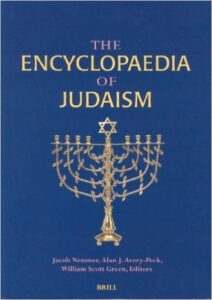
Neusner, Jacob, Avery-Peck, Alan J., Green & William Scott (eds.), The Encyclopaedia of Judaism, Brill Academic Publishers (Leiden, Boston and Tokyo), 1999
“A second doctrine of the afterlife enters Judaism not in the Bible itself but in the intertestamental period, i.e., the first century B.C.E.-first century C.E. This doctrine teaches that every human being is a composite of two entities, a material body and a non-material soul; that the soul pre-exists the body and departs from the body at death; that, though the body disintegrates in the grave, the soul, by its very nature, is indestructible; and that it continues to exist for eternity. Not even a hint of this dualistic view of the human being appears in the Bible.”
– Volume 1, pp. 200, 201.
“Even as we are conscious of the broad and very common biblical usage of the term “soul,” we must be clear that Scripture does not present even a rudimentarily developed theology of the soul. The creation narrative is clear that all life originates with God. Yet the Hebrew Scripture offers no specific understanding of the origin of individual souls, of when and how they become attached to specific bodies, or of their potential existence, apart from the body, after death. The reason for this is that, as we noted at the beginning, the Hebrew Bible does not present a theory of the soul developed much beyond the simple concept of a force associated with respiration, hence, a life-force.”
– Volume 3, p. 1343.
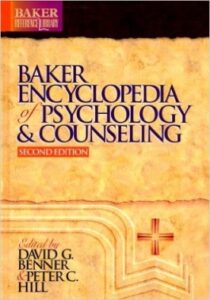
David G. Benner & Peter C. Hill (eds.), Baker Encyclopedia of Psychology and Counseling, 2nd ed., 1999:
“Modern scholarship has underscored the fact that Hebrew and Greek concepts of soul were not synonymous. While the Hebrew thought world distinguished soul from body (as material basis of life), there was no question of two separate, independent entities. A person did not have a body but was an animated body, a unit of life manifesting itself in fleshly form — a psychophysical organism (Buttrick, 1962). Although Greek concepts of the soul varied widely according to the particular era and philosophical school, Greek thought often presented a view of the soul as a separate entity from body. Until recent decades Christian theology of the soul has been more reflective of Greek (compartmentalized) than Hebrew (unitive) ideas.”
– p. 1148.
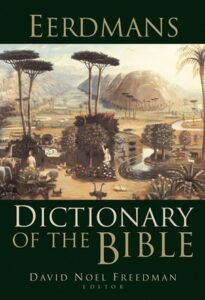
David Noel Freedman, Astrid B. Beck & Allen C. Myers (Eds.), Eerdmans Dictionary of the Bible, 2000:
“Far from referring simply to one aspect of a person, “soul” refers to the whole person. Thus, a corpse is referred to as a “dead soul,” even though the word is usually translated “dead body” (Lev. 21:11; Num. 6:6). “Soul” can also refer to a person’s very life itself (1 Kgs. 19:4; Ezek. 32:10). “Soul” often refers by extension to the whole person.”
– p. 1245.
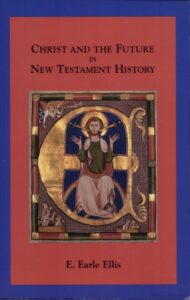
Edward Earle Ellis, Christ and the Future in New Testament History (Brill Academic Publishers Inc., Boston , MA, USA, 2000):
The Platonic view that the essential person (soul/spirit) survives physical death has serious implications for Luke’s Christology and for his theology of salvation in history. For christology it finds its logical outcome, for example, in a Gnostic exegesis of Lk 23:46: The earthly man died, ‘but [Jesus] himself, yielding the spirit into the hands of the Father, ascended to the Good One’. For eschatology it represents a Platonizing of the Christian hope, a redemption from time and matter. Luke, on the contrary, places individual salvation (and loss) at the resurrection in time and matter at the last day. He underscores that Jesus was resurrected in ‘the flesh’ and makes him ‘the first to rise from the dead,’ the model on which all ‘entering into glory’ is to be understood.
An anthropological dualism did enter the thought of the Patristic church, chiefly, I suppose, with the grandiose synthesis of Christianity and Greek philosophymade by Clement and Origen. It brought into eclipse the early Christian hope of the return of Christ and the resurrection of the dead. But it did not characterize the Christianity of the New Testament, and can be found in Luke only if one reads the texts, as those Christian fathers did, with lenses ground in Athens.
…while death is not an individual fulfillment of salvation, during death one remains under Christ’s Lordship and in his care…(but) while the Christian dead remain in time, they do not count time. The hiatus in their individual being between their death and their resurrection at the last day of this age is, in their consciousness, a tick of the clock. For them the great and glorious day of Christ’s Parousia is only a moment into the future. The ‘intermediate state’ is something that the living experience with respect to the dead, not something the dead experience with respect to the living or to Christ.
Those with lenses ground in Athens, numerous in Christian tradition, see a quite different picture. They posit that a part of the person, the soul, is not subject to a cessation of being (and thus is not an element of the natural world) but that at the death of the body it is ‘separated’ to bodiless bliss or, in a variation on the theme, that there is a resurrection at death in which the physical body is exchanged for a spirit body already being formed within [this would destroy the program given in 1 Cor. 15 and many times elsewhere].
Although they have many traditional roots and attachments, such theologies have, I think, seriously misunderstood Paul’s salvation-in history eschatology. It is because Paul regards the body as the person and the person as the physical body that he insists on the resurrection of the body, placing it at the Parousia of Christ in which personal redemption is coupled to and is part of the redemption-by transfiguration of the whole physical cosmos. The transformed physical body of the believer will be called forth from the earth by God’s almighty creative word [at the Parousia], no less than were the transformed physical body of Christ and the originally lifeless body of the Genesis creation.
– pp. 127, 177, 178.
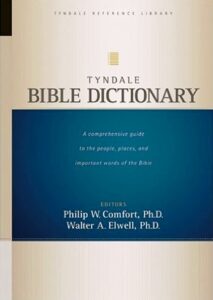
Philip W. Comfort e Walter A. Elwell, Tyndale Bible Dictionary, 2001:
“There is no suggestion in the OT of the transmigration of the soul as an immaterial, immortal entity. Man is a unity of body and soul — terms that describe not so much two separate entities in a person as much as one person from different standpoints. Hence, in the description of man’s creation in Genesis 2:7, the phrase “a living soul” (kjv) is better translated as “a living being.”’
– p. 1216.
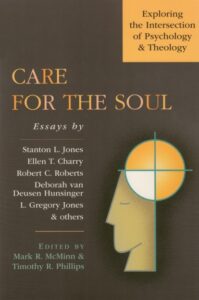
Mark R. McMinn & Timothy R. Phillips (Eds.) Care for the Soul: Exploring the Intersection of Psychology & Theology, 2001:
“A broad consensus emerged among biblical and theological scholars that soul-body dualism is a Platonic, Hellenistic idea that is not found anywhere in the Bible. The Bible, from cover to cover, promotes what they call the “Hebrew concept of the whole person.” G. C. Berkouwer writes that the biblical view is always holistic, that in the Bible the soul is never ascribed any special religious significance. Werner Jaeger writes that soul-body dualism is a bizarre idea that has been read into the Bible by misguided church fathers such as Augustine. Rudolf Bultmann writes that Paul uses the word soma (body) to refer to the whole person, the self, so that there is not a soul and body, but rather the body is the whole thing. This interpretation of Pauline anthropology has been a theme in much subsequent Pauline scholarship.”
– pp. 107, 108.
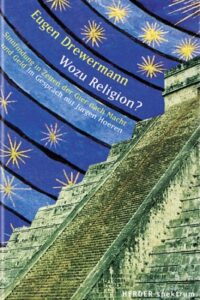
Eugen Drewermann, Wozu Religion? – Sinnfindung in Zeiten der Gier nach Macht und Geld, Herder, Freiburg, Deutschland, 2001.
Wir sind bei all den Fragen an demselben Problem: Die abendländische Theologie, ob von Aristoteles oder Platon her, von den griechischen Naturphilosophen oder den Metaphysikern her, hat versucht, Erklärungen zu geben, die sie auf Gott als die oberste Ursache zurückführte. Auf die Frage, wie Leben sein kann, lautete die Antwort der Griechen: Die Pflanze lebt durch eine Pflanzenseele, das Tier lebt durch eine Tierseele, der Mensch ist teilhaftig einer Vernunftseele. Und so hat man auch schon eine Abstufung über die Werte, die dem einzelnen Lebewesen zuzuordnen sind, vorweggenommen. Im Sinne des Aristoteles ist die Materie zunächst unbelebt, aber wenn sie sich mit einer Substanz verbindet, die Leben setzt, mit der Seele eben, entsteht ein lebendiger Körper. So war die Vorstellung.
Diese Anschauung spielt vor allem in der katholischen Theologie bis heute noch eine große Rolle. Ich glaube, die meisten Katholiken stehen unter dieser dogmatischen Doktrin, dass sie an eine unsterbliche Seele glauben sollen, in dem Sinne, dass es eine Substanz im Menschen gibt, die in sich selber unzerstörbar ist und auch vom Tode nicht affiziert wird. Da ist sozusagen etwas im Menschen wie ein Edelmetall oder ein Edelgas, das durch keinerlei Veränderungen tangiert wird und das sich im Grunde im Tode freisetzt. Wenn der Körper zerfällt, ist dies um so einfacher. Es muss die Seele, so betrachtet, eine Art Gas sein, damit sie sich im Tod zum Himmel erhebt – sehr leichtförmig.
Ich karikiere diese Vorstellung etwas, weil sie naturwissenschaftlich und auch naturphilosophisch in Absurditäten hineinführt – nicht viel anders als die Theorien von einer Wärmesubstanz oder Lichtsubstanz in der Physikgeschichte. Sinn macht die Vorstellung von der Unsterblichkeit der Seele eigentlich nur in der mythischsymbolischen Form, in welcher wieder die alten Ägypter sie formuliert haben: Für sie erhob sich im Tode die Ba-Seele als goldener Vogel und flog zurück zu ihrer Heimat unter die Sterne. Das ist ein wunderbares Bild, das man aber nicht in metaphysische Kategorien übersetzen kann, wie die katholische Kirche es versucht hat.
Geahnt hat das, ohne dass es in den ökumenischen Diskussionen bis heute eine große Rolle gespielt hätte, die protestantische Theologie schon lange. Die protestantische Theologie hat zunächst einmal mit Sorgfalt die Bibel gelesen und dabei heraus gefunden, dass es die platonische Seelenlehre in der Bibel nicht gibt. Wenn Jesus im Neuen Testament von „Seele“ redet, verwendete er hebräisch das Wort „näphäsch“. Wenn man so will, ist das parallel sogar dem deutschen Wort „Schnauf“. Da schnauft etwas, da atmet etwas, da zeigt sich Leben. Das ist für den Hebräer „Seele“. Man kann auch sagen: Es ist das Selbst des Menschen. Wenn Jesus den vorhin erwähnten Psalm zitiert: „In deine Hände gebe ich meinen Geist, meine Seele“, heißt das so viel wie: mich selber. Wenn er sagt: „Was nützt es dem Menschen, wenn er die ganze Welt gewinnt, aber Schaden leidet an seiner Seele“ (Mt 16,26), ist das nicht spiritualisiert zu verstehen, sondern Jesus will sagen: Was soll denn das, dass Menschen die ganze Welt erobern wie Alexander der Große und sich selber dabei verlieren, sie werden am Ende wahnsinnig, wie Alexander wirklich wurde – er war ein gewaltiger Paranoiker.
Genau betrachtet, kennt die Bibel das also überhaupt nicht, was wir im platonischen Erbe und dann im Gefüge der katholischen Theologie im Abendland als Seele kennen gelernt haben. Trotzdem zeigt sich, dass die Bibel Hoffnung hat gegen den Tod. Sie glaubt dabei allerdings nicht daran, dass es etwas im Menschen gibt, das sich über den Tod hinaus durchhält. Die Vorstellung, die die Pharisäer entwickelt haben, die auch für Jesus und für Paulus eine große Rolle gespielt hat, läuft vielmehr darauf hinaus, dass Gott mächtiger ist als der Tod. Man glaubt an die Auferstehung. Das soll heißen: Gott wird das, was er gemacht hat, den einzelnen Menschen, nicht vergessen, sondern es bleibt in Gottes Händen. Und so wie es aus Gottes Händen hervorgeht und in den Händen Gottes steht, ist es unvergänglich. Das heißt, die Unvergänglichkeit ist Teil Gottes, sie gehört zu seiner Schöpfermacht.
Der Glaube an die Unsterblichkeit der Seele ist also nicht biblisch. Das Vertrauen der biblischen Frömmigkeit liegt darin, dass Gott Gott ist und dass er nicht etwas macht, das er sich dann vom Tod sozusagen aus den Händen stehlen lässt. Die ganze Hoffnung, welche die biblische Frömmigkeit gegen den Tod setzt, richtet sich auf Gott. Sie richtet sich nicht auf ein metaphysisches Prinzip im Menschen.
Genauso wie wir in der Kosmologie oder Kosmotheologie eine dramatische Wandlung der Perspektive vorgenommen haben, müssen wir das jetzt konsequenterweise also auch in der Anthropologie tun. Wir können die Hoffnung der Menschen angesichts des Todes nicht auf ein metaphysisches Prinzip stützen, das wir zur Begründung der Tatsache, dass es menschliches Bewusstsein und menschliches Leben gibt, einführen durften, sondern unsere Hoffnung ergibt sich aus dem Verhältnis zu Gott. Wir trauen Gott zu, dass er uns im Tode nicht im Stich lässt.
– pp. 120-122.
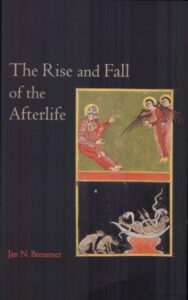
Jan Nicolaas Bremmer, The Rise and Fall of the Afterlife: The 1995 Read-Tuckwell Lectures at the University of Bristol, Routledge, New York, USA, 2002.
We are much less informed about Israelite ideas concerning the soul and the underworld than about Greek views, since our only source is the Old Testament. Moreover, the texts of those books of the Old Testament which describe the earliest period of the Israelites have been revised at a relatively late stage in Israel’s history, probably after the Babylonian exile, in the so-called Deuteronomist revision. Consequently, studies of Israelite concepts customarily limit themselves to a synchronic description for the time covered by the Old Testament. It is only in the intertestamentary, Hellenistic period that we start to find Greek influence.
There is in ancient Hebrew no term equivalent to our ‘soul’. From the various words which together correspond to our notion of the soul, the most important one is næpæš, which seems to have combined the functions of the thymos and psychê of the living. It is probably connected with a root meaning ‘breath’ (Exodus 23.12, 31.17; 2 Samuel 16.14) and can often be translated ‘life‘ or ‘life-force‘. For example, when Rachel was dying, her næpæš left her (Genesis 35.18) and when the prophet Eliah resurrected the son of a widow, he prayed for the return of his næpæš (1 Kings 17.21–2). At the same time, the term can also signify the seat of emotions, such as the inclination to evil (Proverbs 21.10) or the desire for God (Psalm 42.2). Unlike psychê, though, it never means the soul of the dead and is not contrasted with the body. Israelite anthropology was strictly Unitarian and remained so until the first century A. D.when the Greek belief in an immortal soul started to gain ground in Palestine and the Diaspora. It cannot be chance that we find the first examples of this development among those Jews, who had been thoroughly influenced by Hellenistic culture, such as Josephus (Bell. Jud. 2.154-65, Ant. 18.14-8) and Philo (De mundi opificio 135).
In historical times the hereafter is called Sheol, which in the Septuagint normally is translated ‘Hades’, but in the oldest Israelite ideas the grave must have played an important role, since ‘to go down int the grave’ (Psalm 16.10, 28.1 etc.) is equivalent to ‘to go downs into Sheol’ (Genesis 37.35, 42.38, etc.) (Psalm 63.10), filled with worms and dust (Isaiah, 14.11) and impossible to escape from (Job 7.9f). Its shadow-like (Isaiah 14.9) inhabitants no longer thought of the living (Job 21.21) or even of God himself (Psalm 88.13). Good and bad – Sheol received them all (Psalm 89.49).
It was only in the post-exilic period that new ideas came to the fore. Good and bad now started to be thought living in different compartments of Sheol (1 Enoch 22). As the earliest strata of the Book of Enoch must go back to the third century BC, it is attractive to connect this development with Jewish presence in Alexandria, where early second-century Jewish historians already made Orpheus a witness to the truth of the Mosaic law (Artapanus FGrH 726 F 3), and adapted Orphic literature in the so-called Testament of Orpheus. Moreover, in the second century BC Sheol started to be complemented by Gehenna. This valley south of Jerusalem, where tradition located the sacrifice of children to Moloch during the time of the kings, now first became thought of as the place where punishments would be dealt out after the Last Judgement, but soon became the name for the fiery hell destined for the impious straight after their death and after the Last Judgement.
However, as in Greece, old and new continued to co-exist. Josephus relates that the Pharisees located the souls of the righteous and the unjust in the underworld (Bell. Jud. 2.163, Ant. 18.14), but mentions that he himself, despite being a Pharisee, believed that only the souls of the bad went to Hades, whereas the souls of the righteous remained in heaven until the final resurrection (Bell. Jud. 3.375). In fact, Jewish inscriptions and literature show that old ideas about the lack of a real afterlife would still have a long and persistent life (Ch. 3.2).
– pp. 8, 9.
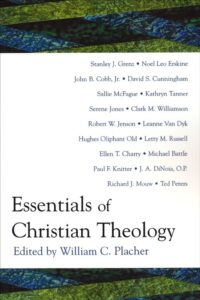
Essentials of Christian Theology, William C. Placher (Ed.), Westminster John Knox Press, Louisville, KY, USA, 2003:
Death as the Destruction of Evil
What about death? Is death just a blemish on God’s otherwise good creation? Or does death have positive theological significance?
The biblical story of the garden of Eden in Genesis 2-3 introduces us to the tension between knowing that we must die yet imagining life without dying. The fall into sin that subjects us to mortality was precipitaded by the violation of God’s command to avoid the knowledge of good and evil. Reacting to this disobedience, God threw Adam and Eve out of the garden and placed the cherubim at the gate with a flaming sword, preventing the man and woman from returning. Why did God react with such force? Was it due to a divine temper tantrum? Could God plead temporary insanity, claiming that it was blind rage that drove him to pull the trigger that led to the death of Adam and Eve? No, the expulsion from the garden expresses the same abiding love of God that leads to redemption and salvation.
The reason for the expulsion from the garden of Eden has to do with the second special tree. Although Adam and Eve had eaten the fruit from the tree of the knowledge of good and evil, they had not yet tasted fruit from the tree of life. This is theologically important. Had they eaten fruit form the tree of life, then they would “live forever” (Gen. 3:22). What we now call the fall introduced into God’s otherwise good creation such things as enmity between humans and wild beasts, the sweat of the brow by which a living must be wrested from nature, pain in childbirth, and all manner of suffering. None of us, not even God, wants the items on this list to continue forever. It is redemptive love, then, that motivates God to separate Adam and Eve from the tree of life. In its own way death becomes a gift of divine grace; it marks the point at which the consequences for sin come to an end. There is no suffering in the grave. Death is the door that God slams shut on evil and suffering within his creation.
“The wages of sin is death,” writes Paul (Rom. 6:23). What does this mean? We may interpret this negatively to mean that death is the appropriate penalty for disobedience. Yet we might consider another interpretation as well. Might we say, in light of Genesis 3 and in light of Easter, that death plays an important role in the divine plane of salvation? Could we think of death as a necessary step down the path toward resurrection to new life, to a new life immune from the sufferings of this fallen world?
If this interpretation holds, then we need to emphasize the totality of death. The Bible severely affirms that we humans are mortal. We really do die and cease to exist. There is no salvation by heroic soulechtomy. The understanding of sin with which we work is that sin is a virus which eats away at the totality of human existence, leaving no organ, whether physical or spiritual, uninfected. The resulting death means full extinction.
Curiously, this appears to come close to the model of scientific naturalism. Death, theologically understood, puts an end to all that we are and have on this side of mortality. It puts an end to all evil. It also puts an end to all that is good, mortally good. We do not possess an intrinsically good, immortal soul that is somehow exempt from the disease of sin so that it can simply shed the body like a shelled oyster and go on to a heavenly plane of disembodied souls. And certainly there is no room for an evil, immortal soul that similarly sheds the body so that its evil existence will continue on everlastingly. Whoever and whatever we are dies totally and completely. Death symbolizes that end, the termination.
The Death and Resurrection of Jesus
The result of the Adam and Eve story applies to Jesus. The messiah is born a mortal and dies a mortal, and he knows it. Death for Jesus is the end. In Gethsemane he is “greatly distressed and troubled,” saying to his disciples, “my soul is sorrowful, even to death” (Mark 14:33-34). In agony Jesus prays “with loud cries and tears” (Heb. 5:7), and his sweat becomes like great drops of blood falling down upon the ground” (Luke 22:44). Jesus petitions God, “Remove this cup from me” (Mark 14:36). “Jesus is afraid,” writes Oscar Cullmann. “He is afraid in the face of death itself. Death for him is not something divine; it is something dreadful.” Jesus cries from the cross, “My God, my God, why have you forsaken me?” (Mark 15:34). This is death in all its frightfull horror. It is what Paul calls the “last enemy” of God (1 Cor. 15:26).
Does this suggest that Jesus is cowardly? By no means. His courage is stalwart. Despite his petition in the Gethsemane prayer that he not have to drink the cup of death, he still concludes his prayers, “Yet not what I want, but what you want” (Mark 14:36). And despite his agonizing sense of abandonment on the cross, he still cries out, “Father, into your hands I commend my spirit” (Luke 23:46). Death is terrible, but Jesus’ faith is strong.
The death Jesus dies on Good Friday is the death of Adam, the death of us all. Yet this is not the end of the story. On Easter, God raises the dead Jesus to new and everlasting life. Jesus dies a mortal, but God the creator of the old creation acts with the power of the new creation. God bestows new life.
This new life – the life of the new creation – is different from the old life which Jesus gave up. The new life is no longer subject to sin, suffering, or death. It is this that makes Jesus’ resurrection salvific. In this regard we see a contrast between Jesus’ Easter resurrection and other resurrection miracles, such as the widow’s son at Nain (Luke 7:11-17), Jairus’s daughter (Mark 5:21-43), and Lazarus (John 11:38-44). In these miracles we find the resuscitation of a corpse. Three persons were raised, but they were not raised to immortality. They were simply returned to mortal life. They would all have to face death again just like the rest of us. But Jesus’ corpse was not merely resuscitated, not merely restored to ordinary life. No one expected Jesus to return to Nazareth to resume his duties as a carpenter. Jesus’s resurrected existence had become eschatological. Jesus will not have to die again. When those who enjoyed fellowship with the risen Jesus reported what they saw, they did not say, “Wow, the Nazarene is back!” Rather, they reported that they had seen “the Lord” (Luke 24:34; John 20:18).
Easter opens the gate so that as we share in Jesus’ resurrection we pass through to a new and everlasting life. Jesus is the “first fruits” of those who have fallen “asleep” in their graves (1 Cor. 15:20). Jesus is the anticipation, the prefiguration, the prolepsis of what we will become in our resurrection. As he rose on Easter, so will we rise into the new creation. As we turn and look backward, we see Jesus’ death standing like the angel with the fiery sword at the garden of Eden, preventing suffering and death from following us into the new creation.
The Spiritual Body
At this point we will turn to more detail regarding the nature of the resurrected body. As we proceed, it will become clear that we are working with a new model, on quite different form those discussed earlier.
The image Paul employs is that of a seed planted in the ground. The flower or tree that grows up looks quite different from what had been planted. However, in order to guard against any possible misinterpretation in terms of soulechtomy, he explits the deadlike appearance of the typical seed to say, “What you sow does not come to life unles it dies” (1 Cor. 15:36). This analogy is delicate. Paul wishes to affirm continuity and discontinuity between the present and future realities. Resurrection is not exactly creation out of nothing, but creation of something out of something else. In contrast to the creation of the world out of nothing, creatio ex nihilo, resurrection is transformation or creatio ex vetera (“creation out of something old”); yet the power of God’s creation is at work in both instances. This is the point Paul is making: A dead seed is sown, but what is harvested is new life.
Paul describes this eschatological harvest in terms of four complementary contrasts:
So it is with the resurrection of the dead. What is sown is perishable [corrupt, phthora], what is raised is imperishable. [incorrupt, aphtharsia]. It is sown in dishonor [atimia], it is raised in glory [doxa]. It is sown in weakness [astheneia], it is raised in power [dynamei]. It is sown a physical body [soma psychikon], it is raised a spiritual body [soma pneumatikon]. (1 Cor. 15:42-44)
To be raised “imperishable,” whether applicable to Jesus or to us, is to be raised to everlasting life. One’s body would not be resuscitated for the purpose of simply returning to one’s daily toil. Doxa, which in reference to the heavenly bodies usually means “luster,” here means we are raised in “honor.” The “power” into which we will be raised, dynamis, is the same power by which miracles of healing are performed (1 Cor. 12:28).
It is theologically important, I thinik, to give special attention to the contrast between the earthly and the spiritual bodies. Paul does not describe the dead earthly body as a “body of flesh” (soma sarkikon). Literally, this is the ensouled body which we would associate with the Greek philosophical tradition. This notion of a human being was commonly known among Greek-speaking Jews such as Paul. The important is this: For Paul, the soul dies. As as if to rub it in, Paul says it is not the psyche which we find in the resurrection, it is the soma. The resurrected body is a “spiritual body” that rises into the new creation, into God’s kingdom.
The Coming New Creation: Cosmic Eschatology
As I have been suggesting, human destiny is inseparable from cosmic destiny. One element in common among the various models of immortality – scientific naturalism, immortality of the soul, reincarnation with absorption into the infinite, astral projection, ancestral presence, and life after life – is this: They all deal with the question of human destiny in isolation from that of cosmic destiny. All assume the natural world will remain basically what it is. Not so with the Christian vision. What happens to us depends on what happens to the universe. The resurrection to a spiritual body can only occur at the advent of the eschaton, the “end time.” If there is no cosmic transformation, then there is no resurrection, and if there is no resurrection, then our faith is in vain and we of all people are most to be pitied (1 Cor. 15:14, 19).
This means that your resurrection and my resurrection are indispensably tied to the eschatological parousia, the second coming of Christ. Paul suggests an order of things. First comes Christ, the first fruits (1 Cor. 15:23). This probably refers to Easter. Then at his coming, “the dead in Christ will rise first, then we who are alive” (1 Thess. 4:16-17). He “will transform the body of our humiliation that it may be conformed to the body of his glory” (Phil. 3:21; see Rom. 8:29). “Then comes the end, when he hands over the kingdom to God the Father, after he has destroyed every ruler and every authority and power… The last enemy to be destroyed is death” (1 Cor. 15:24-26). To understand the resurrected body, we need to place it within the broader horizon of God’s promised new creation. As the creation is transformed, so are we.
The Conflict between Entropy and Eschatology
Yet contemporary theologians are confronted with an immense challenge at this point, a challenge coming form physical cosmology in the natural sciences. The reigning theory of the origin of the universe it the big bang theory. According to this theory, the universe is drenched in temporality; it has a finite past with a beginning perhaps 13.7 billion years ago. At the beginning point, an unfathomably dense singularity exploded. The big bang sent matter and energy hurling outward, and we on earth now find ourselves flying outward and away from the original cosmic bang. This scientific theory looks consonant with the fundamental biblical commitments to a divine creation out of nothing. It appears that science provides an indirect testimony to what Christians claim to be the character of God’s creation.
Theologians may cheer about what science tells us about the past. Not so about the future, however. The second law of thermodynamics, otherwise known as entropy, raises questions for Christian eschatology. This law states that energy flows in only one direction, from hot to cold, not the reverse. Entropy is the level of disorder in the universe, and the second law declares that entropy, overall, is always increasing. If the big bang back at the beginning was the hottest moment in the history of the cosmos, then the future we look forward to is one of increased entropy, of dissipation into equilibrium. What this means it that the universe is destined to freeze itself out of existence. Even if along the way gravity causes it to colapse into another dense fireball and explode again, the present cosmos will still come to an end. Whether freeze or fry, the future of life in our world is not endless. Like individuals, the cosmos as a whole is destined for death. At least, this is the scientific prophecy of physical cosmologists.
Does this prophecy look like the one announced by Christians eschatology? No. Entropy and eschatology appear to be locked in conflict. Christian eschatology does not prophesy a far future at equilibrium whict has forgotten its past. Rather, it looks now through a mirror dimly at a bright shining future, the future of the new creation promised by God in the Easter resurrection of Jesus. The present creation is marked for transformation, and Jesus’ Easter resurrection is the microcosm of the promised macrocosmic transformation. “But in fact Christ has been raised from the dead,” writes Paul, “the first fruits of those who have died” (1 Cor. 15:20). As he rose, so will we. And what we rise into is the new creation.
We would like to see consonance, but, instead we see dissonance between physical cosmology and Christian eschatology. In principle, then, physical cosmology as scientists pursue it has the potential for falsifying Christian belief in the resurrection. For Christians, the very notion of the Easter resurrection implies the divine promise for the renewal of the whole of creation. The failure of the creation to undergo transformation would invalidade the Christian claim. If scientific naturalism wins – meaning that Jesus remained dead and so will we – then the Christian faith is in vain.
Theologians need not rush to the unemployment window. Even though we may say that the Christian claim is falsifiable in principle, this is not empirically achievable. Any final disproof of the Christian claim would require observing the actual dissipation of the universe in 65 billion years or so in the far distant future. No laboratory of the present generation is expected to last that long, and no scientist will live long enough to see it.
Nevertheless, this challenge has a message for theological methodology. Eschatological forecasting, so it appears, ought not rely upon the present state of natural science for conceptual support. If a future new creation actually arrives as God has promised, then its arrival will have to be due to a divine intervention. God will have to act. The natural world will not evolve into a new creation on its own. If such a transformation is to take place, it will have to come as a gift from our creative God. No one can predict a creative act of God; hence, it will remain unforeseeable by scientific investigation.
– pp. 350-355.
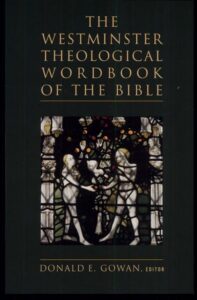
The Westminster Theological Wordbook of the Bible, Donald E. Gowan (Ed.), Westminster John Knox Press, Louisville, Kentucky, USA, 2003:
Immortality, Immortal (see also Resurrection) “Immortality” is the translation of two nouns that appear ten times in the New Testament: athanasia (“deathlessness”), which occurs three times and denotes the immunity from death enjoyed by God (1 Tim 6:16) and resurrected believers (1 Cor 15:53-54); and aphtharsia (“incorruptibility” or “imperishability”), which occurs seven times and signifies the immunity from decay that characterizes the divine state (1 Cor 15:42, 50, 53-54). The adjective aphthartos (“immortal,” “incorruptible,” or “imperishable”) occurs four times and describes the quality of the divine nature (Rom 1:23; 1 Tim 1:17), the Christian’s reward (1 Cor 9:25), and the future state of resurrected believers (1 Cor 15:52). All these terms occur only in the Pauline letters – mostly in 1 Cor 15.
Inherent human immortality, however, is an idea alien to Jewish Scriptures, and there is no equivalent term in the OT to athanasia (“deathlessness”). Only God is “living” (Deut 5:26; Josh 3:10; Pss 42:2; 84:2; Jer 10:10) and the possessor of “life” (Ps 36:9). In fact, in the OT, as in all ancient Near East literature, it is the mortality of humans that separates them from deity or the gods. Though some mortals have been thought to have crossed that boundary, and so admitted directly into the divine world (e.g., Utnapishtim in the Gilgamesh Epic; apparently also Enoch of Gen 5:24 and Elijah of 2 Kgs 2:3-12), such instances were considered exceptions and the intrinsic immortality of humans rejected.
It was only during the period of Second Temple Judaism (ca. 200 B.C. – A. D. 120), when the Greek concept of immortality was fused with the Hebrew concept of humans having been created int “the image of God” (Gen 1:27), that Jews began to distinguish between body and soul (1 En. 22:7; 102:5; Wis 9:15; 2 Macc 7:37; 14:38; Let. Aris. 139; 236; Josephus, Contra Apionem 2.203) and to regard the soul as inherently immortal (Josephus, Jewish War 1.84; 2.154-55, 163; 6.46; 7.341-48; Jewish Antiquities 17.354; 18.14, 18). Some of these Jewish immortality concepts were clothed in resurrection language, others in astral imagery, others in terminology drawn from ideas about reincarnation and the transmigration of souls, and still others in distinctly Grecian anthropological forms of expression.
Likewise, a Greek understanding of the immortality of the soul is alien to the NT. It is only God who possesses life in himself (John 5:26; 6:57) and is inherently immortal (1 Tim 6:16). He makes alive through his spirit, and so his spirit is called “life giving” (John 6:63; 1 Cor 15:45). It was Christian writers of the late first and second centuries who, attempting to make the gospel palatable to the Greek mind and defend it against false accusations, took up again the thesis that the human soul (psyche) is inherently immortal (athanatos, “deathless”), comparing it, for example, to the mythological phoenix, a bird that every five hundred years died but reconstituted itself from its decomposed material remains to continue for another five-hundred-year period, ad infinitum (1 Clement 24-27; Justin Martyr, First Apology 44:9; Dialogue with Trypho 4:5; 124:4; Tatian, Addres to the Greeks 13:1; 15:4; and the anonymous Epistle to Diognetus 6). And though these early apologist used such analogies to support a Christian doctrine of resurrection, they failed to distinguish between Christian teaching on immortality, which is given to believers by God at their resurrection, and Greco-Roman beliefs in the natural immortality of the soul.
Immortality and resurrection. The terms for immortality in the NT – whether athanasia (“deathlesnness”), aphtharsia (“incorruptibility” or “imperishability”), or aphthartos (“immortal,” “incorruptible,” or “imperishable”) – are never used in connection with the word “soul” (psyche), but always associated only with the resurrection and transformation of persons (eight times, all in 1 Cor 15). And never do we find Paul (or any other NT writer) using the noun athanatos (“immortal”) or the verb athanatizo (“I make immortal” or, in the passive voice, “I become immortal”), which were the common terms for immortality in the Greek world – even though the verb would have been suitable in such passages as Rom 8:11 and 2 Cor 5:4. It may plausibly be argued that these latter terms were avoided by Paul and other NT writers because they could so easily have been misunderstood as implying that immortality was natural to the human condition and existed apart from resurrection.
In speaking of the uniqueness of God, 1 Tim 6:16 states, “It is he alone who has immortality.” The corollary of God being the only one inherently immortal is that any immortality ascribed to humans must be seen as a gracious gift of the divine will (Rom 2:7; 6:23). Humans can be immortal only derivatively. Their immortality is not essential or intrinsic, but derived or extrinsic.
First Corinthians 15 clearly places the reception of immortality at the time of the resurrection, for it juxtaposes resurrection and immortality in such phrases as “what is raised is imperishable” (v. 42) and “the dead will be raised imperishable” (v. 52). This does not mean that the dead will be raised and thus be seen to be already immortal, but that the dead will be raised and thus become immortal. Far from already possessing immortality, believers in Christ Jesus are described as those who “seek” for immortality (Rom 2:7) and receive it at the time of their resurrection (1 Cor 15:20-23, 42-53).
From a Christian perspective, the doctrines of “immortality” and “resurrection” stand or fall together. It is a case of “resurrection to immortality” and “immortality through resurrection” – or, as expressed by Paul and rephrased by Murray Harris, “raised immortal.” To deny resurrection is to deny immortality, since the embodiment involved in the event of resurrection is necessary for the enjoyment of the meaningful existence implied by immortality. On the other hand, to deny immortality is to deny resurrection, since the permanent supply of the divine life pledged by immortality is necessary to sustain the resurrection life of transformed persons. Each involves the other, so that choosing between them is not only unnecessary but also impossible.
– pp. 225-227.

Richard T. Ritenbaugh, The Fifth Seal (Part One), Forerunner, September/October 2004:
The word “souls” (psuchás, plural of psuché) also requires explanation, as the Greek word is far too complex in meaning to define facilely as a person’s immortal essence, as most Catholics and Protestants are wont to do. Its basic meaning is “breath,” and is thus equivalent to the Hebrew nephesh and Latin anima (as in English “animal” and “animate”). One of its uses is as the New Testament version of what Genesis 2:7 calls “the breath of life,” that is, the vital force that makes a body live: “And the Lord God formed man of the dust of the ground, and breathed into his nostrils the breath of life; and man became a living being [nephesh].” Luke 12:20 and Acts 20:10 use psuché in this manner.
From this basic meaning derives its extensions: as “life” (see Matthew 6:25; John 10:11; Philippians 2:30; Revelation 12:11) and “living being” (see I Corinthians 15:45; Revelation 16:3). In addition, psuché can refer to the seat of emotion, will, and desire, whereas we would use the terms “heart,” “mind,” “personality,” or “being” today (see Luke 1:46; Acts 14:2, 22; Hebrews 6:19; II Peter 2:14). In a similar sense, it can also identify man’s moral and spiritual life (see Hebrews 13:17; I Peter 1:22; 2:11, 25; 4:19; III John 2).
Some try to read immortality into certain biblical uses of psuché (for instance, Acts 2:27, 31; II Corinthians 1:23; Revelation 20:4), but the Bible does not support such an interpretation. In fact, in one of these, Matthew 10:28, Jesus confirms that souls can indeed be destroyed (also supported by the Old Testament in Job 33:22; Ezekiel 18:4, 20)! One must consult extrabiblical sources (such as Plato, Xenophon, Herodotus, and other Greek writers) to find usages of psuché that define “the soul as an essence which differs from the body and is not dissolved by death” (Thayer’s Lexicon).
How then is this word used in Revelation 6:9? We must remember that John is viewing a vision (Revelation 1:10), a symbolic representation for mortal eyes and minds of future events, not reality. One cannot see a person’s actual soul, that is, his being, his life, so what John saw were representations of those who had been martyred. He probably literally saw bodies (Greek soma) under the altar but chose to identify them as psuchás, “lives” or “persons,” because, as the next verses show, the vision depicts them speaking and receiving clothing, things a person can do only while alive.
The important point to remember is that John specifically identifies them as having been “slain”—they are dead—and the Bible elsewhere shows that “the dead know nothing” (Ecclesiastes 9:5) and cannot work, plan, learn, or pursue any activity in the grave (verse 10). Thus, John, a Hebrew, is using psuché in the same sense as Old Testament writers sometimes use nephesh, as “dead body,” a being that once had life (see Leviticus 21:11; Numbers 6:6; 9:6-7, 10; 19:11, 13; Haggai 2:13).
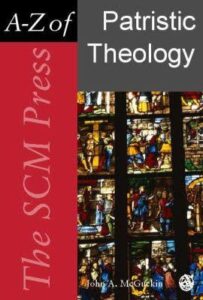
John Anthony McGuckin, The SCM Press A-Z of Patristic Theology, SCM Press, England, 2004:
Soul – The soul (Latin: anima; Greek: psyche) was a fundamental concept for patristic thought, foundational, in a sense, for its mystical, anthropological, and soteriological schemas, but one where a number of unresolved issues can be witnessed in most of the writers. This is partly because in this aspect the Christian intellectual tradition involved a very mixed prior heritage. The biblical data on soul, and that of the various Greek philosophical schools, accumulated to a very disparate body of teaching. The earliest centuries of the patristic era were spent trying to synthesize much of this body of evidences. In the Old Testament the concept of soul is broached in a variety of ways. The texts often use the word nephesh to describe the breath of life in a human being, as that distinctive life force which God inspirated into clay to make a living creature (Gen. 2:7). But most commonly, Christian writers wished to use the term spirit (Greek: pneuma) to connote this aspect of the divinely graced life force within, that element which distinguished a living human being from, say, animals. This aspect is not apparent in much of early Hebraic theology, necessarily, or in the majority of New Testament references to “soul,” which simply use it in biblical fashion to refer to the creature, but it became a notable aspect of later Christian reflections that were being articulated in a context of Greek thought, which had long speculated on the inner makeup of human consciousness. The distinction of soul and spirit remained always a tenuous one in Christian reflection. In regard to the influence of Hellenism, three great schools had, long before Christianity’s appearance, elevated a distinct rivalry in regard to the question fo the human soul. Plato taught that the psyche tragically fell into a material embodied existence from a previous spiritual life, where it was able, with unwavering clarity, to behold the Ideal Forms. Trapped in a body (“the body a prison” was the Platonic motto), the soul suffered all manner of ills, not least the inability to perceive truth with any surety. Its basic task was to transcend material illusion and return to its former dignity by asserting control through its rational power (soul as to logistikon) over the “lower soul,” which was the aesthetic center of life. The soul, for Plato, was eternal and self-moving (at least in its superior aspects as to logistikon). Aristotelianism had, in distinction, argued strongly that the soul was a fundamental part of the inner entelechy of the human nature, not a separate alien spark trapped within a material form. It was born along with the body and was the life force that made the whole organism grow to its determined end. As an acorn has an inner force to drive it to its natural telos (the oak tree), so did the human soul serve to guide the development of a human through the stages of embryo to that of thinking, rational being. Stoicism, in turn, argued that the soul was the life principle (comparable to the “directive” aspect of Platonism: to hegemonikon), which originated from the reconstitution of cosmic elements after great cyclical conflagrations. The soul was the locus of the divine spark of Logos, which permeated each living being endowed with reason. It was thus the principle of reason within a human and the seat of divinity within the mortal form. It was material in nature, as Aristotle had said, but not material in the sense that base matter was, insofar as the soul had a special “fiery nature,” which was refined and subtle. Each approach to soul from the various schools held attractions for different patristic theologians. Plato gave a strong focus on the inherent immortality of the soul. At first this was resisted by many Christians as incompatible with the gospel message, and the concept of the “conditional immortality” of the soul was preferred: namely, that God would elevate the human being into immortal life (and not merely the soul but the body too), if (and only if) the creature was obedient to the covenant. Only after the third century did the presupposition of the soul’s immortality became more commonly accepted in the Christian world.The dominant figures of Augustine and Origen were very influential for this development. In its turn, Stoicism gave to the church an attractive basis for refleting on the manner in which the soul was the inner locus of the divinity: the place where the spark of Logos resided. It was not a far step to connect this with the vibrant New Testament image of the soul as the temple of the Holy Spirit, the place within where God indwelt the creature. Paul himself had seen the connection, and many of his own reflections on the psyche and the soul were influenced by that same mix of philosophical ideas current at the time, which would be available to the patristic theologians after him. For their part, they were the additional heirs of that Pauline synthetic language of soul-spirit-body (cf. 1 Cor. 6:20; 7:34; 1 Thess. 5:23), and even thought it may have been a somewhat naive attempt by Paul to reconcile some of the fluid ideas of his time on spiritual anthoropology, nevertheless, because it was from an apostle it immediately became authoritative to the patristic tradition and shaped it to a degree. For its part, Aristotelianism gave to the church a strong sense of the soul as dynamic life force, directing the development of a whole organism, that is, its physical and emotional as well as its intellective and moral progress. The soul as an integrative center of moral awareness and choice was thus taken in form Aristotelianism and heavily used in Christian ethics, as well as in the later monastic writings on ascetical purification of the heart as a primary preparation for mystical apprehension of God. All of this Christian articulation of a doctrine of soul was a vast philosophical and religious synthesis. It did not happen consciously, or with refined systematical coherence, perhaps, but nevertheless evolved over several centuries as significant Christians intellectuals tried to make interventions in the great disputes about the origin and nature of the soul as they were playing out in the ancient world. Justin Martyr was one of the first of the Fathers to take up specific interest in question. He criticized Platonic immortality theory by arguing that God created souls, they did not eternally preexist, and that the soul would be immortal only by God’s gift, not because of its own life force (Dialogue with Trypho 4-5). Ireaneus, noting this, underlined the theology as a sharp characteristic dividing the biblical sense of creaturehood from the Platonic sense of the soul’s self-subsistence (Haer. 2.19, 29, 33-34). Irenaeus also made moves to synthesize aspect of Stoicism, by arguing that the soul is the directive force (hegemonikon) in a human life, but not as Plato thought, for it is an integral function of the entire soul to be directed to God, not a separate aspect of a mere part of the soul (Plato’s to logistikon). The Ireanean exegesis of the Pauline tripartite psychology of soul, body, and spirit interpreted it emphatically that spirit in this instance (1 Thess. 5:23) means the indwelling divine Spirit, not a separate humano-divine spirit as the Stoics (and perhaps some of his contemporary Christians gnostics) had suggested (Haer. 5.6.9). Tertulian was soon to put most of this Christian theology together in a compact treatise entitled On the Soul. He thought, from biblical premises, that the soul did not preexist at all but was transmitted to the child through the semen of the father in the act of conception, a view (Traducianism) that thereafter fought with the alternative Christian belief that it was directly created by God at conception (Creationism) and put into the conceived embryo as God’s direct consecration of each life. It was this Creationist presupposition that made abortion so evil an act in the mind of the early church. Tertullian also thought that the Stoics were probably right that this human soul was a very refined and ethereal substance, but not wholly “spirit” (that is, immaterial). It was the work of Origen that dramatically challenged Tertullian’s view. He was vividly aware that the soul was one of the great philosophical problems of the age, and outlined the varieties of belief on the subject in his Commentary on the Canticle of Canticles 1.8, and also in the preface to his De principiis. Origen taught that the soul was wholly incorporeal in its nature, had preexisted the material world, and was sent to earth, embodied, to fulfill its punishment for earlier sins in the heavenly domain. As such, it had the task of disciplining the body and thereby fixing its own reorientation to the divine. The soul was the seat and center of the creature as a spiritual entity, and was itself the locus of the image of God within mankind. After Origen the idea that the soul was a refined material substance more or less evaporated from Christian theology (cf. Origen, Dialogue with Heracleides). His ideas on the soul preexistence were rejected soon after his time, but his thesis that the soul was the inner icon fo God, immortal and ascentive, became the substrate for all later reflections, as it was perceived to be a brilliant synthesis, not only of the best of the various Greek schools themselves, but also a reconciliation of the philosophical problem of the soul with the overall thrust of the biblical account of the creature under God.
– pp 316-318.
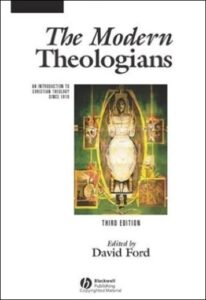
The Modern Theologians: An Introduction to Christian Theology Since 1918 – Edited by David F. Ford with Rachel Muers (3rd ed.), Malden, Massachusetts: Blackwell Publishing, 2005:
De Silva’s engagement with Buddhism focused on the “problem of the self.” According to him, the Buddhist doctrine of “non-self” (Pali anatta; Sanskrit anātman) enshrines an essential truth about human existence, which is in accord with not only contemporary science, but also the Hebrew Bible and the New Testament. While the idea of an immortal soul is an established belief for most Christians, it cannot be supported by biblical texts. Furthermore, biblical images of selfhood are corroborated by the Buddhist doctrine of non-self. It other words, the Buddhist doctrine of non-self reveals the meaning of selfhood in the biblical texts — meanings that are lost when biblical texts are read through the lenses of Greek philosophical notions about the soul. In the biblical tradition, the self is an interdependente psycho-physical unity of “soul” (psychē), “flesh” (sarx), and “spirit” (pneuma) that bears close resemblance to the Buddhist analysis of the self by means of the Five Skandhas or constituents of existence (form, feeling, perception, impulses, and consciousness). Consequently, Buddhist and biblical views of the self agree that there exists no immortal soul that remains self-identically permanent through time.
Not only does the Buddhist notion of non-self clarify biblical notions of selfhood, it also clarifies the doctrine of the resurrection. For if persons are constituted by non-self, the question remains: what continues after death? In contrast to the Buddhist doctrine of reincarnation, the biblical answer is the doctrine of resurrection. Resurrection does not mean the survival of an immortal soul or a reconstituted corpse. For if the doctrine of non-self corresponds to reality, transience and mortality are cosmic facts and death is the end of existence. There cannot be survival after death unless, and only if, God re-creates a new being. This, according to de Silva, is the truth of the biblical teaching of resurrection interpreted through the lenses of the doctrine of nonself. Resurrection is an act of God by which he creates what St. Paul called a “spiritual body.” To explain the meaning of “spiritual body” de Silva employed a “replica theory,” according to which at the moment of death, God creates an “exact psycho-physical replica of the deceased person.” It is a new creation. But because it is a re-creation, the spiritual body is not identical with the self that existed in an earthly body. It is an exact psychophysical replica. The doctrine of the resurrection as a “replication” is, he believed, a way of meaningfully reconceiving “the hereafter while accepting the fact of anātta.”
– p. 693.
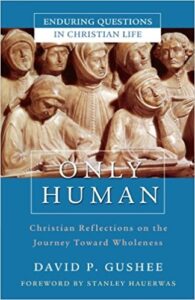
David P. Gushee, Only Human: Christian Reflections on the Journey Toward Wholeness (San Francisco, USA: Jossey-Bass, 2005):
Many elements of the biblical account also seem to point in the direction of a single unified self. In the creation story, for example, we are told that “the Lord God formed man from the dust of the ground, and breathed into his nostrils the breath of life, and the man became a living being” (Genesis 2:7). The man (Hebrew, adam) is formed out of the ground (Hebrew, adamah), establishing the intimate connection between hamanity and the earthly materials from which we come. We are flesh, we emerge from flesh, we live enfleshed, we die as flesh, and we are returned to the ground from which we came. God gives life to us by breathing life into us – the soil-creature, one might say, is animated by the breath of God, and so we live until that animation ceases and we return to the soil. But this does not make us dualistic selves. A living human being is a physical-spiritual creature in a single self – a psychosomatic (soul-body) unity, as it is sometimes put.
But if this is the case, what happens when we die? Unlike the Greek notion that the body decays while the self floats off to heaven, a biblical (especially a Jewish) understanding seems to envision no such separable existence between body and soul or spirit. When we die, all of us dies. If there is to be any continued existence after death, it will have to be in a reanimated or re-created body that God simply chooses to make live again. This is how Paul put it in 1 Thessalonians 4:14-16: “Since we believe that Jesus died and rose again, even so, through Jesus, God will bring with him those who have died [Greek, koimenthentas, literally ‘fallen asleep’]. For this we declare to you by the word of the Lord, that we who are alive, who are left behind until the coming of the Lord, will by no means precede those who have died. For the Lord himself… will descend from heaven, and the dead in Christ will rise first.”
The nature of this resurrected body is very difficult for us to understand or describe. Paul depicts it as a spiritual body, an imperishable kind of body that will never taste death again (1 Corinthians 15:35-53). And yet it is a body, and it maintains continuity with the earthly body that was either buried in the ground when we died or, if we are alive when Jesus comes, will be transformed in the process of the ultimate transfiguration of all things (15:52-54). The historic Christian creeds all envision the “resurrection of the body, and the life everlasting,” but this is a belief that has subtly faded in the past few centuries in the direction of a body-soul dualism in which the immortal soul goes to heaven and the body is left entirely behind.
This leaves a final problem for a unified view of the self, at least from a biblical perspective. What are we to make of the various labels given in the Bible to the spiritual part of the self? As we have seen in the sketch of other views, there certainly are biblical references to the soul or spirit, not to mention the mind, heart, emotions, will, and so on. These references cannot merely be dismissed.
Biblical vocabulary for the spirit or soul denotes aspects, dimensions, or facets of the one self, rather than fundamental distinctions within a multipart self. The Bible knows and communicates that there is a spiritual dimension to human persons and in various contexts labels these dimensions in various ways. For example, Jesus calls his listeners to love God with all their heart, soul, mind, and strenght (Mark 12:30). Just as no one seriously suggests that the self be divided into these four elements, so we should not subdivide the human self using any other scheme (even those devised from various biblical accounts). We are one self, with various facets almost too mysterious to name, and with the whole of this one self we are to worship and serve the one God.
– pp. 49-51.
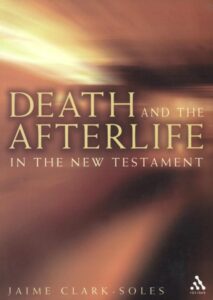
Jaime Clark-Soles, Death and the Afterlife in the New Testament, T&T Clark, New York and London, 2006:
Our only source for Israelite anthropology pertinent to life and death is the OT. Greek thought does not heavily influence Hebrew or Jewish thinking until the Hellenistic period. For ancient Israel, nepes seems to combine functions of the Greek thymos (intense feeling) and psyche (inner self) of the living. Nep̄es never means the soul. Israelite anthropology, according to Jan Bremmer, was “strictly unitarian and remained so until the first century AD, when the Greek belief in an immortal soul started to gain ground in Palestine and the Diaspora.” Not surprinsingly, two Hellenized Jews, Josephus and Philo, are the first to demonstrate this transition.
– p. 14.
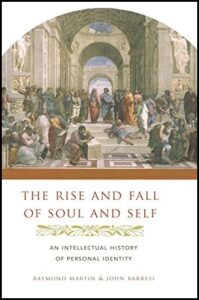
Raymond Martin and John Barresi, The Rise and Fall of Soul and Self: An Intellectual History of Personal Identity, Columbia University Press New York, USA, 2006.
In Homer, people had psyches, which survived their bodily deaths. But the survival of a psyche was not the survival of a person. Before bodily death, peoples’ psyches, or life principles, were associated with their breath (pneuma) and movement. Other faculties, most of them associated with bodily organs or bodily activities other than breath and movement, were responsible for specific mental and emotional tasks. Nous, for instance, was associated with seeing and was responsible for reasoning; thymos was associated with the organism’s immediate mental and physical response to an external threat and was responsible for courage; phrenes was associated with the midriff and responsible for strength; kardia was associated with the heart and responsible for passion, including fear.
In the case of ordinary people, each of these mental faculties ceased at bodily death, at which time their psyches, in the form of breath, left their bodies to go to Hades, where they existed as shades or shadows. To ninth-century- B.C.E. Greeks, it seems to have been little consolation to know that one’s psyche would survive one’s bodily death as a shade. The life of a shade was not a life worth living. Heroes, on the other hand, survived bodily death in a more robust way, by becoming like gods. But the survival of heroes, it seems, was more for the community of living Greeks than for the heroes themselves. No one was encouraged to become a hero simply in order to survive. Honor, rather, was the objective. Whatever value mere survival may have had for the heroes themselves, Homer portrayed their godlike survival as a reward to the community for having produced heroes. Postmortem heroes provided the community with moral exemplars.
In later Greek literary works, such as in the poems of Pindar and the plays of Sophocles, there is a gradual movement away from Homer’s merely imaginative conception of psyches in Hades, where the souls of everyone are treated more or less the same, to more moral conceptions, in which departed souls are more closely affected by how well they had lived. In Homer, living people are rarely if at all concerned with the fates of their psyches. The people portrayed in later literary works, whose accounts of postmortem existence tend to be more nuanced, show more concern.
In the early fifth century B.C.E., progressive Greek thinkers began to replace all such myths with science. So far as the self is concerned, their interest centered on the word psyche, which meant different things to different thinkers. Sometimes it meant person or life, sometimes personality, sometimes that part of one that could experience. In each case, psyche tended to be understood as a bodily function that has emotion and appetite. But under the influence of Orphism and perhaps also Greek shamanism, later thinkers began to think of the psyche in more spiritual terms.
Pythagoras (fl. 530 B.C.E.) and Empedocles (fl. 450 B.C.E.), two of the earliest philosophers to have been concerned with the self, may have been shamans. Both of them combined what today we would call science with an Orphic-style mysticism. Pythagoras inspired legends but wrote nothing, so it is hard to speak with confi dence about his views. Originally from Samos, he was an astronomer and mathematician who was said to have originated the doctrine of the tripartite soul, which resurfaced in the philosophy of Plato. Pythagoras also espoused rebirth, or transmigration, and was said to have been able to remember what happened in many of his previous incarnations. Empedocles, on the other hand, was preoccupied with medicine rather than mathematics. Admired widely as a miracle worker, he was said to have cured illness by the power of music. He was also said to have restored the dead to life.
According to the Orphism with which Pythagoras and Empedocles may both have been associated, when a human dies his or her soul (or psyche) persists. Those persisting souls that were pure remained permanently with the gods. Those that were impure remained in the company of the gods while they awaited incarnation again as humans, animals, or worse (Empedocles apparently believed that he had once been incarnated as a bush). The process of incarnation “soils” souls, augmenting their impurity. Their subsequent fates depend on the behavior of their new hosts, especially upon whether the hosts, if human, observe certain dietary restrictions and religious rituals. Pythagoras, for instance, prohibited his disciples from sacrifi cing animals and from consuming flesh or beans and encouraged them to participate in rituals that celebrated the superiority of the intellect over the senses. Orphism taught that ultimately all souls reunite with the universal deity. In sum, what Pythagoras and Empedocles seem to have shared, and what they encouraged in thinkers who would come later, was belief in a soul, or self, that existed prior to the body, that could be induced to leave the body even while the body remained alive, and that would outlast the body.
These ideas were extremely consequential. Directly or indirectly, they seem to have powerfully infl uenced Plato and, through Plato, various church fathers, including Augustine and, through Augustine, Christian theology and, through Christianity, the entire mindset of Western civilization, secular as well as religious. It is ironic, perhaps, that ideas that eventually acquired such an impressive rational pedigree may have originated in the dark heart of shamanism, with its commitment to magic and the occult.
– pp. 9-11. Footnotes omitted.
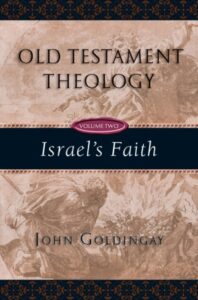
John Goldingay, Old Testament Theology, Volume 2 – Israel’s Faith, 2006:
What is death? Death is the end of life. It has no positive nature; is is simply the absence of something. When people die, they do not cease to exist. We can see them on their deathbed after their life has gone, but they have ceased to have life. At death “the dust returns to the ground as it was, and the breath returns to God who gave it” (Eccles 12:7; cf. Job 34:14, 15; Ps 146:4).
The body of a human being (‘adam) came from the ground (‘adamâ), and anyone can see that it dissolves back into the ground after death. There is a relationship between my mother’s womb and the earth itself: hence Qohelet’s words about the person who does well in life but then has to die like everyone else, “As he came out of his mother’s womb, naked he will return, going as he came.” He can take nothing with him (Eccles 5:15 [MT 14]; cf. Job 1:21). Death does not mean returning to my mother’s actual womb, but it means returning to the source of my being that is associated with my mother’s womb, the origin of the raw material that grows into in a person in the womb. I came from the Earth; I return to the earth.
The life of a human being came more directly from God, and it is also evident that when someone dies, the breath (rûah, e.g., Ps 104:29) or the life (nepeš, e.g., Gen 35:18) disappears and returns to the God who is rûah. And whereas the living may hope that the absence of God may give way again to God’s presence, the dead are forever cut off from God’s presence. Death means an end to fellowship with God and to fellowship with other people. It means an end to the activity of God and the activity of other people.
Even more obviously, it means an end to my own activity. It means an end to awareness. “There is a confidence for the person who is joined to all the living, because things are better for a living dog than a dead lion, because the living know that they will die, but the dead know nothing. And there is no more reward for them, because their renown is forgotten. Both their acts of love and hate and their passions have long since perished. They have no more share forever in all that is done under the sun” (Eccles 9:4-6).
– pp. 639, 640.
“Who knows whether the breath of human beings rises up and the breath of an animal sinks down to the earth?” (Eccles 3:21). In Qohelet’s day there were perhaps people who were speculating that human beings would enjoy a positive afterlife, as animals would not. Qohelet points out that there is no evidence for this.
– p. 644.
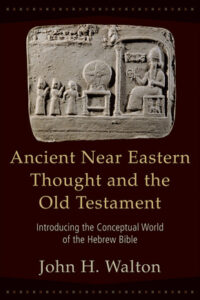
John H. Walton, Ancient Near Eastern Thought and the Old Testament: Introducing the Conceptual World of the Hebrew Bible, Baker Academic, Grand Rapids, MI, USA, 2006
What Is a Human? (Body, Soul, Spirit)
Even modern theologians argue whether the human person is best understood by trichotomy (body/soul/spirit), dichotomy (body/soul-spirit), or unity. The ancient world shared some of our concern for understanding the human person, but it viewed the person quite differently than we do.
In Mesopotamia the clearest information comes in the Epic of Atrahasis, where the various ingredients used to create humankind appear to correspond to the various aspects of human nature. According to the interpretation of T. Abusch, the human ghost (eṭemmu) derives from the flesh of the god, while the blood (damu) of the god provides the human intellect (temu), self, or soul. “The blood is the dynamic quality of intelligence, and the flesh is the form of the body that is imposed on the clay.”
Egyptian and Israelite literatures portray the deity giving the breath of life to mundane materials, invigorating them to serve in the role of divine images. In Egyptian thinking human nature was composed of the body (djet-body as well as the ha’u-body), the akh, the ka, and the ba, and designations such as heart, belly, shadow, and name. The terms ka and ba are impossible to translate adequately into English (or to Greek or Latin) because they do not have equivalente ideas in Western culture.
Ka
A distinction must be drawn between an internal ka and an external one. The internal ka reflected that aspect of human nature that had ties to the supernatural and, at least in some vague way, ties to future generations.
Ka could designate human individuality as a whole, and in different contexts it could be translated as “character,” “nature,” “temperament,” or “disposition. Since character to a great extent preordains the life of an individual, ka also means “destiny” or “providence”. This use of the word engendered a tradition of interpretin the ka as a kind of universal vital force, but this idea is too abstract since it loses its associatin with personality.
The external ka was like na invisible twin born with the person and associated with the placenta. The ka continued to live into the afterlife and received offerings on the individual’s behalf.
Ba
The ba is connected to cognition and other mental capacities. It is often translated “soul” despite the inaccuracies of the identification. The ba is the aspect of a person reflected to the world around him or her. One’s reputation and public persona project one’s ba. One’s ba exists independently of one’s body in what one accomplishes and how one is thought about and spoken of. The ba leaves the body at death and continues to exist after death. The ba of a deity is what enters the image to make it usable and living in the cult. This might approximate the Akkadian temu. Perhaps it overlaps most with the modern concept of personality.
Akh
The akh is often translated “spirit,” and also survives after death, somewhat like a ghost. The akh of a person, in either life or death, was capable of effecting either good or ill. If “ghost” goes in the right direction, there would be some overlap between akh and the Akkadian eṭemmu.
Hebrew terminology does not correspond with Egyptian or Mesopotamian terminology any better than it corresponds with modern English. The Egyptian akh may bring to mind the way the ruah-yhwh came upon individuals to make them effective either for good (in most cases, e.g., the judges) or for ill (e.g., Saul). Yet some have made a case for Hebrew nephesh as being equivalent to Akkadian eṭemmu. The Israelite concepts of basar (“flesh”), nephesh (often translated “soul” or “self”), and ruah (usually translated “spirit”) do not overlay transparently on either Mesopotamian or Egyptian models. At the most basic level, this could be explained by the facts that the Egyptian concepts are largely developed in relationship to what they believed about death and afterlife (i.e., in light of teleology). Concepts conveyed in the Hebrew Bible, in contrast to the ancient Near East, are consciously linked not to protology or teleology, but to theology — the relationship to God.
Nephesh
Hebrew nephesh, despite its traditional translation “soul,” never refers to that which continues to exist after death, though nephesh departs when one dies (Gen. 35:18). In this connection, H. W. Wolff observes “man does not have [nephesh], he is [nephesh], he lives as [nephesh].” God also is characterized by nephesh (e.g., Isa. 1:14). Though it was granted to Adam when God breathed into him (Gen. 2:7), it is not a “piece” of the divine, but only finds its source there. As the part of the body that receives food and breathes, the nephesh is connected to the throat. In the metaphysical realm, the nephesh is that which experiences life and represents living (notice that the life, nephesh, is in the blood, Lev. 17:11, and the blood is the nephesh, Deut. 12:23). In the plural it can refer to persons, and is often related to the “self.”
Ruah
Where the nephesh feels and senses the ruah acts. Where the nephesh is related to awareness and perception, the ruah is not understood as continuing to exist once the person dies. Indeed, it is difficult to demonstrate that a person has his/her own ruah. Rather each person has God’s ruah. God also has a ruah and his ruah sustains human life. (Job 34:14; Ps. 104:29). The ruah of all creatures returns to God because it is his. Israel’s ideas of human composition express most centrally the individual’s relationship to God in life. What continues to exist in Sheol after death is neither nephesh nor ruah.
What then is the impact of comparative studies on the understanding of the metaphysics of anthropology? On the basis of this brief study, we have seen that there are some overlapping categories, but that is difficult to establish any one-to-one correspondences. The comparative data may, as always, urge restraint on our inclination to impose modern categories on the ancient texts, but they do not give us any greater understanding of Israelite metaphysical anthropology. Concerning the cognitive environment, we can see that the ancient views tended to focus more on theological and functional categories than on psychological (e.g., Freudian) or philosophical (e.g. Platonic) ones.
– pp. 210-214.
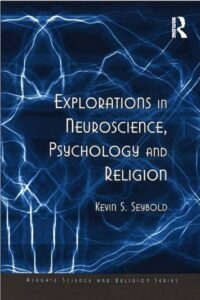
Explorations in Neuroscience, Psychology and Religion, Kevin S. Seybold, Ashgate Publishing Limited, England, 2007.
Obviously, the words used in a particular language are crucial in conveying the message the writer or speaker wishes to send. As the message is translated from one language to another, it can be altered because of the choice of words used in the translation. When we read the Bible, we must keep in mind that the original language of scripture was not what we read today. The writers of the New Testament used Greek when they wrote; the writers of the Old Testament used Hebrew. Much of the Old Testament, however, comes to us in written form after being conveyed verbally from one generation to the next. So, in order to begin to determine what the Old Testament or the New Testament has to say about human nature, we need to look at what the significant Hebrew and Greek words are and how they were understood by the writers and readers (or hearers) of the original culture.
In the Old Testament, there are a number of words that are used when making reference to human nature. For example, the word nephesh (meaning ‘throat’ or ‘neck’) is often translated as ‘soul’ or ‘life’. Another word used in this context is basar, which means ‘flesh’ and ‘embodiedness’, and is sometimes used to refer to kinship relationships (for example, Genesis 37:27). The Hebrew word leb means ‘heart’ or the ‘center of activity of the self’, and ruach is often translated as ‘person’, ‘breath’ or ‘spirit’. Each of these words can be used to refer to that aspect of our existence we call soul, self or spirit, and suggests the notion of the unity of the person. Each term indicates wholeness, not division, and implies that we are not bodies with souls (or bodies with souls and spirits), but are unified persons. We are, in other words, embodied souls. A key scripture passage in this regard is Genesis 2:7, which reads (in the Revised Standard Version): ‘then the Lord God formed man of dust from the ground, and breathed into his nostrils the breath of life; and man became a living being [nephesh]’. Here, the word nephesh is translated as ‘soul’ in the King James Version of the Bible, as being in the RSV, and as ‘person’ in the New Living Translation (Stone, 2004, p. 53).
In the New Testament, Greek words for heart, spirit, body, soul are all used to refer to the whole person (Shults, 2003, p. 175). Pneuma means ‘spirit’ in Greek, and psychē is translated as ‘soul’, but these words are used in ways that, like the Hebrew Old Testament words, suggests a unity and holism. Other Greek words typically used in the context of the person are kardia (2 Corinthians 3:14–16, 2:4, 7:3) and nous (Romans 12:1), which also refer to the whole person. Soma (which means ‘body’ in Greek) is used to refer to humans as embodied persons. The body is the person, and Paul in 1 Corinthians emphasizes the resurrection of the body, the whole being or person. In Romans 8:19–23, the terms ‘flesh’ (sarx) and ‘spirit’ (pneuma) do not suggest a dualism of substances. Living in the spirit suggests a person whose whole being is oriented toward the spirit; the fleshly person one whose whole being is oriented toward earthly, fleshly desires (Shults, 2003, p. 178).
The scriptures, these biblical scholars tell us, depict the human person as a whole, a unity, not as a material body with an immaterial soul or spirit. These various terms (such as body, soul, spirit, heart, mind) are different perspectives one can bring when looking at the individual, not different substances. As Shults puts it, the Bible is concerned with the whole person, particularly the salvation of the whole person (p. 178). Dualism, these scholars suggest, comes not from the Bible, but from Greek philosophers such as Plato, whose influence on the early Church contributed to a mistranslation of the original New Testament manuscripts. Instead of understanding psychē, for example, as a holistic term for ‘personhood’, the term was misinterpreted (under the influence of Plato’s philosophy) to mean a ‘disembodied, immaterial and immortal soul’. This understanding was consistent with Greek philosophy (for example, Platonism), but not with the intended meaning of the original scriptural passage.
– pp. 49, 50.
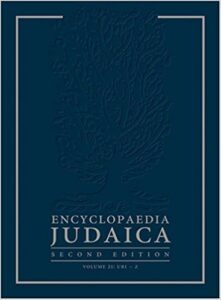
Encyclopaedia Judaica – Second Edition, Thompson Corporation, USA, in association with Keter Publishing House, Jerusalem, Israel, 2007:
AFTERLIFE. Judaism has always maintained a belief in an afterlife, but the forms which this belief has assumed and the modes in which it has been expressed have varied greatly and differed from period to period. Thus even today several distinct conceptions about the fate of man after death, relating to the immortality of the soul, the resurrection of the dead, and the nature of the world to come after the messianic redemption, exist side by side within Judaism. Though these conceptions are interwoven no generally accepted theological system exists concerning their interrelationship.
In the Bible
The Bible is comparatively inexplicit on the fate of the individual after death. It would seem that the dead go down to *Sheol, a kind of Hades, where they live an ethereal, shadowy existence (Num. 16:33; Ps. 6:6; Isa. 38:18). It is also said that Enoch “walked with God, and he was not; for God took him” (Gen. 5:24); and that Elijah is carried heavenward in a chariot of fire (ii Kings 2:11). Even the fullest passage on the subject, the necromantic incident concerning the dead prophet Samuel at En-Dor, where his spirit is raised from the dead by a witch at the behest of Saul, does little to throw light on the matter (1 Sam. 28:8 ff.). The one point which does emerge clearly from the above passages is that there existed a belief in an afterlife of one form or another. (For a full discussion see Pedersen, Israel, 1–2 (1926), 460 ff. A more critical view may be found in G. von Rad, Old Testament Theology, 2 vols., 1962.) Though the talmudic rabbis claimed there were many allusions to the subject in the Bible (cf. Sanh. 90b–91a), the first explicit biblical formulation of the doctrine of the resurrection of the dead occurs in the book of Daniel, in the following passage:
“Many of them that sleep in the dust of the earth shall awake, some to everlasting life, and some to reproaches and everlasting abhorrence” (Dan. 12:2; see also Isa. 26:19; Ezek. 37:1 ff.).
– Vol. 1, p. 441.
RESURRECTION (Heb. תְּחִַיּת הַמֵּתִים), the belief that ultimately the dead will be revived in their bodies and live again on earth. Resurrection is to be distinguished from the belief in some sort of personal existence in another realm after death (see Afterlife) or in the immortality of the soul. A major tenet of Jewish eschatology alongside the Messiah, belief in resurrection is firmly attested from Maccabean times, enjoined as an article of faith in the Mishnah (Sanh. 10:1), and included as the second benediction of the Amidah and as the last of Maimonides’13 principles of faith.
In the Bible
The standard biblical view of death took it as man’s final state (cf. II Sam. 14:14). Aside from such anomalies as Enoch and Elijah who were “taken” by God (Gen. 5:24; II Kings 2:1), the common lot of all men, as it was then conceived, is aptly described in Job 7:7–9:
Remember that my life is a breath;
My eye will not again see good…
A cloud dissolves and it is gone;
So is one who descends to Sheol;
He will not ascend.Rabbah correctly inferred that the author of this passage left no room for resurrection (BB 16a). This accords with the biblical doctrine of reward and punishment which satisfies the demands of justice during the (first) lifetime of men. When in Hellenistic times the doctrine proved inadequate, “the extension of divine retribution beyond the tomb came as a necessary corollary to the idea of God’s justice and the assurance of his faithfulness in fulfilling his promise to the righteous”(G.F. Moore, Judaism, 2 (1950), 319).
The components of the idea of resurrection were present in biblical thought from early times. That God can revive the dead is one of His praises: “I slay and revive; I wounded and I will heal” (Deut. 32:39; cf. Pes. 68a for the argument that death and life of the same person is meant); “YHWH slays and revives; He brings down to Sheol and raises up”(I Sam. 2:6; cf. II Kings 5:7). His power to do so was exhibited through the acts of Elijah and Elisha (I Kings 17:17ff.; II Kings 4:18ff.).
… Later Jewish exegesis, influenced by the Jewish doctrine of resurrection (see below), read it back into many of the above-cited passages, and others as well. Thus, e.g., the “waking” in which the beatific vision of Psalms 17:15 occurs was explained by Rashi as the resurrection (for the plain sense – a cultic experience – cf. Ps. 27:4; 63:3; and esp. Ex. 24:11). Often enough, however, medieval exegetes give the plain (figurative) sense in addition and prior to the resurrectional one: see Ibn Ezra to Deuteronomy 32:39; David Kimḥi to I Samuel 2:6 and Ezekiel 37:1. Their reserve and sobriety contrasts with M. Dahood’s wholesale adoption of the resurrectional interpretation in most of the above-cited Psalm passages, in addition to many others in which “long enduring life” of royal prayers (e.g., Ps. 21:5; cf. the royal prayers in Pritchard, Texts, 383d, 394a, 397c) and the “future” of the righteous (often meaning progeny as in Ps. 109:13) are whimsically and uncritically combined and offered as evidence of an early Israelite belief in resurrection and immortality (M. Dahood fails to distinguish between the two; Psalms, 3 (1970), xli–lii).
– Vol. 17, pp. 240, 241.
SOUL, IMMORTALITY OF.
In the Bible
Unlike the gods of Mesopotamia and Canaan, e.g., Apsu, Tiamat, Baal, and Mot, who, while they could not die a natural death, could incur a violent one, the God of Israel is the living God (Hos. 2:1; Ps. 18:47). His lordship extends from heaven to Sheol (Ps. 139:8; Job 26:6); He puts to death and brings to life (I Sam. 2:6; I Kings 17:17–22; II Kings 4:18–37); and He can preserve His faithful from Sheol (Ps. 16:10).
… In the Bible two persons are said to have left this world in a special way: Enoch “was taken by God” (Gen. 5:24) and Elijah “was taken up to heaven in a whirlwind” (II Kings 2; cf. Ps. 49:16). The exact implication of these traditions is not clear.
The crucial passage of Proverbs 12:28 has been translated differently through the centuries. Saadiah Gaon already understood it as immortality, as did F. Delitzsch many centuries later. M. Dahood (in: Biblica, 41 (1960), 176–81) related the Hebrew אַל מֶָות ʿal mawet) in this verse to the Ugaritic blmt, “not dying.”
It is also possible [not probable] that the Masoretic Text of Proverbs 14:3 contains the hope of a better life than that in Sheol (cf. Ps. 16:9–11; 73:24; A.W. van der Weiden, in: VT, 20 (1970), 339–50).
However in Daniel 12:2 the resurrection to eternal life for some is unequivocally predicted. Only in the post-biblical period did a clear and firm belief in the immortality of the soul take hold (e.g., Wisd. 3) and become one of the cornerstones of the Jewish and Christian faiths.”
– Vol. 19, p. 35.
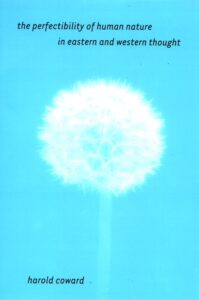
Harold Coward, The Perfectibility of Human Nature in Eastern and Western Thought, Albany: State University of New York Press, USA, 2008:
The biblical period in Hebrew thought runs from the exodus of the Jews from Egypt and God’s establishing of a covenant with Moses in 1447 BCE to the destruction of Jerusalem and the Second Temple by the Romans in 70 CE. In biblical thought scholars identify four basic notions about human nature. First, a person is regarded as a living body with various qualities, but with no sharp distinction between body and soul. The Hebrew word meaning “flesh” is often used for humankind in general or human nature in particular. For example, in Genesis the idea of all humankind as a collective is expressed by “all flesh” an by the word adam (man). Second, consciousness was not centralized in the brain, as it is in modern thought. For the Hebrews, human consciousness, with its ethical qualities, was thought to be diffused through the whole body, so that the flesh and bones, as well as the mouth, eye, ear, hand, and so on, had a quasiconsciousness of their own. Third, these “separate consciousnesses” are thought of as being easily accesible to all kinds of outside influences, from possession by demons (as in the case of a toothache) to invasion and control by God’s Spirit (as in the case of the prophets). Fourth, there is also the idea of a ghost or double (not necessarily to be identified with the soul) – a faint and shadowy replica fo the self, such as the ghost of Samuel described by the “witch of Endor” (1 Sam 28:14) as “an old man,” wrapped in the ghostly counterpart of the familiar cloak of life. This fainter self or “shade,” as in Hebrew called it, can be detached even from the living and is seen by others in theirs dreams, while after death it passes to the cave of Sheol under the earth.
In addition to these four basic notions, biblical Hebrew uses certain key terms to describe human nature. The Hebrew word nephesh is usually translated into English as “soul” but this is inadequate and misleading. Literary analysis of the usage of nephesh in the Hebrew Bible shows three distinct meanings. First, nephesh is commonly the principle of life, with breath as the underlying meaning – for example, in 2 Kings 1:13 the Israelite captain, threatened with death, says to the prophet Elijah, “Let my nephesh and the nephesh of these fifty servants be precious in thy sight.” Here the best translation is simply “life.” Second, nephesh is “self” or “person,” as in Psalm 3:2 “Many are saying of my nephesh [self], there is no deliverance for him in God.” Here there is no reference to the psalmist’s inner life as distinct from his outer body, and therefore “soul” is a wrong translation. Third, nephesh is also used to denote “human consciousness” in its full extent, as in Job 16:4; “I could speak like you if your nephesh were instead of my nephesh.” Here Job is speaking to God. Of these three usages, the most common would seem to have been nephesh as “breath-soul” or the “life principle.” This “breath-soul” is considered to be the animating principle of human life and its essential constituent. Death is understood as the departure of nephesh or breath-soul from the body. Momentary unconsciousness is described in the same way, as a brief loss of nephesh. And life is described as being returned to someone thought dead by breathing in nephesh. For example, in 2 Kings 4:34 we are told that Elisha stretches himself over a dead boy’s body and places his mouth to the boy’s mouth to breath life into it. Throughout the biblical usage nephesh is strongly identified with the body, its organs, especially the heart, and its blood as the animating principle of life.
Ruach is a second key Hebrew term. It is especially important for the biblical understanding of how God communicates with the prophets. Wheeler Robinson notes that ruach has three main usages in the Hebrew Bible. First, ruach is “wind,” either the natural wind or the “wind of God” – God’s energy or angry breath. In Hosea 13:15 we are told that the Lord’s ruach comes up out of the desert and dries everything up. Second, ruach is “inspirational wind,” the spirit of God. In his activity as a prophet, Jeremiah is infused with God’s ruach, which speaks through him. And in Ezekiel, chapter 37, it is the ruach of the Lord that gives new psychical and physical life to the dry bones of the valley in Ezekiel’s vision. Finally, in biblical thought after the exile in Babylon (c. 598-515 BCE), ruach becomes almost equated with nephesh as the principle of life in humans and animals, but it is also signals an origination of life from God. Whereas nephesh is sometimes translated as “soul,” ruach is translated as “spirit,” which connotes a sense of divine energy acting on human nature from without – implying that the life of humans or animals is drawn from God.
Robinson warns we must not be swayed by the body-soul dualism of Greek thought. For the biblical Hebrew, nephesh (breath-soul), ruach (spirit), and basar (flesh) are together conceived of as a psychophysical unity – the human personality as an animated body. This includes one’s central organs, to which the Hebrews ascribed psychical functions. The heart (leb), for example, is identified with mental rather than emotional activities – the opposite of the way it is often used today when it is contrasted with the mind. In its biblical use, special emphasis is placed upon the volitional role of the heart. This is important, since the will is primary in Hebrew ethics – one chooses with one’s heart. Other organs, such as the kidneys, are also given psychophysical function. Emotion that urges the heart to action is seen to be located in the kidneys. Robinson points out that this atribution of psychical functions to parts of the body is not restricted to organs such as the heart, liver, and kidneys, but also extends to the ear, eye, mouth, hand, and so forth. The eye, for example, is described in Psalm 131:1 as having the qualities of “pride” or “humility.” Ancient thought lacked knowledge of a central nervous system, and the biblical Hebrews (like others of their day) distributed the psychic powers we localize in the mind to various parts of the body, including all aspects of “flesh” and “bone.” So the psalmist says “All my bones shall say, Yahweh [Lord], who is like thee?” (Ps. 35:9-10). Robinson concludes that for the biblical Hebrews, human nature is understood as a complex of parts drawing their life and activity from a nephesh/ruach, which has no existence apart from the body. The most important aspect of human nature, other than its psychosomatic unity, is its constant openness to “spiritual” influence from without…
The rabbis speculated that while the first human was created entirely by God, all others are born from parents who contribute various parts: “The white is from the male, out of which brain and bones and sinews are formed; and the red is from the female, out of which the skin and the flesh and the blood are made; and the spirit and the life and the soul are from the Holy One [God], blessed be He.” At death God takes back his share and leaves the portion of the parents. Because the father and mother had a share, with God, in creating the child, so parents are to be honored. This idea of humans as constituted by three parts opened the way for the Hebrew psychosomatic view of human nature to begin to more closey approximate the Greek body/soul dualistic understanding. For example, Rabbi Simai suggests that in the creation of a human, the soul is drawn from heaven and the body from the earth. And Philo, following Plato, describes human nature as having three parts: “the body that is from clay, the animal vitality that is linked to the body, and the mind that is instilled in the soul, that being the Divine mind.” Humans are thus a synthesis of earthly parts and the Spirit of God. The human soul, composed from God’s spirit, includes the mind and is the immortal part. Trapped within the body, the soul experiences the miseries that arise from the human failings of frailty and sin. But the soul also inspires and directs the body toward perfection. Ultimately, however, the soul requires release from the body. This is Philo’s view, and it is dualistic and Greek in nature. The rabbis reject such an extreme move and view the relationship between the earthly parts (from the parents) and the divine part of human nature more positively. For the Greeks the ultimate goal is the release of the soul from the body, but for the rabbis, human perfectibility and ascent are achieved by following the laws of the Torah and by the performance of good deeds…
In the New Testament, human nature is described as having intelligence, emotions, free will, moral responsibility, and the possibility of eternal life. The Gospels indicate that the views of Jesus regarding human nature are essencially those of the Hebrew Bible or Old Testament (see chapter 3). The concept of the physical body, expressed by either “body” or “flesh”, represents the whole person or personality, with no sharp distinction between body and soul as in Greek thought. When Jesus says in Mark 14:38 “The spirit indeed is willing but the flesh is weak,” it seems as if he is adopting a dualistic view of human nature. But this is not the case. Jesus fully adopts the Hebrew approach of thinking of the whole personality – mind, body, and spirit – as a psychosomatic unity. Jesus frequently uses the terms “flesh” and “body” to represent the whole personality, as for example in Matthew 5:29 “that your whole body be thrown into hell.” When Jesus uses the word “life” as in Mark 8:35, “Whoever would save his life will lose it,” or the word “soul” as in Mark 14:34, “My soul is sorrowful,” it is the Hebrew term nephesh (life or self including the body, its organs and blood) that is meant. In his teachings the most basic aspect of Jesus’ view of human nature is his assumption of intelligence, free will, and emotions that require discipline. Human intelligence enables on to understand God’s will, and human freedom gives one the opportunity to choose to follow it. These qualities of intelligence, freedom, and responsibility are seen in Jesus’s sayings such as Matthew 5:28, “[E]very one who looks at a woman lustfully has already committee adultery with her in his heart.” Here Jesus assumes that all moral actions are the responsibility of the self. “Heart” is uses here by Jesus in the typical Hebrew sense that the heart is the seat of will and free choice, rather than the mind is, as in modern thought. Jesus knows that human nature is capable of good acts as well as bad, and so he says in Matthew 5:8 “Blessed are the pure in heart, for they shall see God.” Humans have the ability to choose rightly because, as in the Hebrew Bible, they are understood to be created in the image of God. This responsibility is at the heart of Jesus’s parables. For example, in the story of the prodigal son (Luke 15:11-32) the father, who represents God, allows his son the freedom to leave home, and the son returns only after he has freely decide that it is best for him to go back. The understanding of human nature that runs throughout Jesus’ teachings is that of the Hebrew Bible or Old Testament. Although the idea of life after death is not found throughout most of the Hebrew Bible, it did appear in the final writers of the Old Testament such as in the book of Daniel. Jesus adopted this thinking. “There is hardly a word in his teaching which does not presuppose that the possibility of eternal life belongs to the nature of man”. As in the case with Hebrew thought, it is clear that Jesus had in mind a bodily resurrection and not, as in the Greek idea on afterlife, a disembodied soul.
Paul, like Jesus, adopts the basic Hebrew or Old Testament view of human nature. Humans are created by God as a mind-body-spirit unity, and in the image of God. Further, all humans have God’s natural law within as a kind of innate conscience written upon their hearts (Rom. 2:14-15). While God’s requirements are made explicit to the Jews in the Torah, Gentiles have the natural law within, so no one has an excuse for disobeying God’s requirements. In spite of this, there seems to be some inherent perversity in human nature that causes humans to sin. Paul introspectively searches within to identify what it is that causes himself to do this. While he is not a technical psychologist, Paul uses key words in conducting his analysis. He uses several words for “desire,” which he frequently pairs with “flesh” to get “desires of the flesh.” Here is important to note that Paul is not separating the body from the soul or spirit and identifying one’s evil desires with this separate body as Greek dualistic wiews of human nature do. Rather, Paul uses “desires of the flesh” in a poetic manner as a way of speaking of all desires – as if they are a sort of alien person residing within. In Galatians 5:16-21 Paul speaks of one’s life (personality) as under the domination of either “flesh” or “Spirit.” He says, “Walk by the Spirit and do not gratify desires of the flesh… for these are opposed to each other to prevent you from doing what you would.” He goes on to identify the works of the flesh as including such things as immorality, impurity, idolatry, strife, jealousy, anger, selfshness, envy, and drunkenness, and concludes in verse 24, “Those who belong to Christ Jesus have crucified the flesh with its passions and desires.” Paul’s emphasis on desire in his analysis of human nature is reminiscent of the Buddhist approach, which we examine in chapter 8.
Paul also uses the term “body” in a similar poetic sense. In Romans 6:12, for example, he says, “Let not sin therefore reign in your mortal bodies, to make you obey their passions.” Here “body” has much the meaning of “flesh” as described above. Indeed, Paul uses the terms “flesh,” “body,” and “sin” interchangeably to mean essentially the same thing – namely, living under the domination of desire in one’s whole personality. In Romans 8:13, Paul says, “If you live according to the flesh you will die, but if by the Spirit you put to death the deeds of the body you will live.” Here “flesh,” “body,” and “desires” are equated and put in opposition to living according to the dictates of the Spirit in one’s body and mind. So in Romans 7:20 Paul says that when he is under the domination of desires of the flesh, “It is no longer I that do it, but sin which dwells within me.” He states the dilemma of human nature as follows: “I delight in the law of God in my inmost self, but I see in my members another law at war with the law of my mind, making me captive to the law of sin that dwells in my members. Wretched man that I am! Who will save me from this body of death? Thanks be to God through Jesus Christ our Lord!” (Rom. 7:22-25). Paul states clearly that although he wants to do the good that he finds within, without the grace of God he has received through his Lord Jesus Christ he remains under the domination of the sinful desires of the flesh. Although Paul does not use the technical term “will” in the above analysis of the human condition it is clearly implied. With his reason a man understands the law of God either through revealed Torah, if a Jew, or through his innate conscience, if a Gentile. But his ability to obey is obstructed by the desires of the flesh. In between is a conscious “I” that has free will at its disposal. But the ability to choose to obey is constantly obstructed by desire. This leads Paul to conclude in Romans 7:25, “So then, I of myself serve the law of God with my mind, but with my flesh I serve the law of sin.” Only by bringing his will into harmony with the will of God can Paul find freedom from sin and experience salvation.
– pp. 30-32, 37, 56-58.
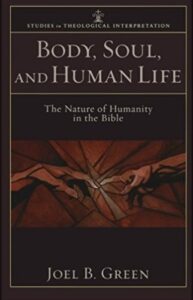
Joel B. Green, Body, Soul, and Human Life: The Nature of Humanity in the Bible, Baker Academic, Grand Rapids, Michigan, USA, 2008:
The term of more immediate interest, repā’îm (“shades,” often brought over into English as rephaim rather than translated), appears only eight times in the Hebrew Bible in the sense of “the dead.” Although the etymology and historical development of this term are both problematic, its usage in the OT is mre straightforward. Rephaim refers to those whose abode is Sheol, the place of the dead. Found in the OT only in poetic texts, the “shades” are portrayed through simple parallelism as “the dead.” In Isaiah 26:14, 19 and Psalms 88:11, the rephaim are associated with “the dead”; in Proverbs 2:18 the term occurs in parallel with “death” (see the similar idea in Prov 21:16); and in Isaiah 14:9 and Proverbs 9:18 they appear in “the grave.” That is, the rephaim are simply the human dead whose place is the grave. For Proverbs, references to the rephaim are used to dramatize the end of a way of life set in opposition to the righteous paths of God. Here the rephaim are associated with the place of the dead, Sheol or, simply, “death” (as “sphere of death”), in a manner characteristic of the teaching of the Two Ways found in the wisdom tradition. In the single usage among the Psalms, the psalmist pleads for divine intervention, realizing that, if he dies, he will not be able to offer praise to God.
– p.155.
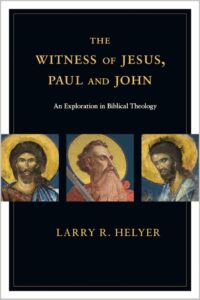
Larry R. Helyer, The Witness of Jesus, Paul and John: An Exploration in Biblical Theology, InterVarsity Press, Illinois, USA, 2008:
The problemmatic text is 2 Corinthians 5:1-10. This text, however, coheres nicely with the first two when we unpack what is actually describe. In order to do this, I lay out in chart form the essential points that Paul makes in this passage:
| This Life | Death | The “Intermediate State” | The “Life to Come” |
| “we groan, longing to be clothed with our heavenly dwelling” (v. 2); “at home in the body” (v. 6); “away from the Lord” (vv. 6, 9) | “if the earthly tent we live in is destroyed” (v. 1); “to be unclothed” (v. 4) | “be found naked” (v. 3); “unclothed” (v. 4); “away from the body and at home with the Lord” (v. 8) | “a building from God, a house not made with hands, eternal in the heavens” (v. 1); “our heavenly dwelling” (v. 2); “to be further clothed” (v. 4); “swallowed up by life” (v. 4); “for all of us must appear before the judgment seat of Christ” (v. 10) |
Paul actually describes four possible states that a believer may experience. The first is life in physical bodies marked by frailty and mortality. The image of a tent effectively portrays this condition. The experience of death, the second possibility, is alluded to under the metaphors of the tent being destroyed or of suddenly being without clothes. The grim reality behind the metaphors is separation of spirit and body at death. What is not so clear, but I think is essencial for grasping Paul’s thought, is a fleeting reference to the third possibility: an intermediate state, a disembodied existence after death and before the parousia. Paul uses the metaphor of nakedness to make the point. Finally, he describes the fourth possibility: the grand consummation of redemptive history, resurrection life in the age to come, where what is mortal is “swallowed up by life.”
In short, Paul does not teach that a believer receives the resurrection body at death. But he is so sure that believers will receive a new body at the parousia that he uses the present tense “we have [echomen]” in 2 Corinthians 5:1. This is futuristic use of the present tense, a usage common to both Greek and English. At death, one is away from the body – that is, in the intermediate state. On the one hand, Paul much prefers this state to being in the body because it is “at home with the Lord” (2 Cor 5:8). To this we compare Philippians 1:23, where he says that “to depart and be with the Christ… is far better.” On the other hand, this is not the final state. Paul most desires to be with Christ in his heavenly house (i. e., possessing a resurrection body). In keeping with Paul’s Hebraic heritage, God’s ultimate purpose for human beings involves corporeal existence. The resurrection body is an imperishable, glorious, powerful, spiritual and heavenly body – an enormous advance over a mere physical body – but it is still a very concrete and real body.
– pp. 299, 300.
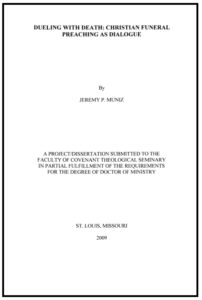
Jeremy P. Muniz, Dueling With Death: Christian Funeral Preaching as Dialogue, (Dissertation for Doctorate Degree), Covenant Theological Seminary, St. Louis, Missouri, USA, 2009.
Resurrection Beyond the Bible
If one defines resurrection as “the reversal of the effects of death” in terms of a physical reanimation of human life, then one is safe to assume that resurrection was not a common thought or belief in the ancient world. Resurrection is not a part of Homer’s understanding of any human existence beyond the grave, and as Wright puts it, if Homer’s writings have anything at all to say about resurrection, it is that “it doesn’t happen.” It was not that the Greeks were unaware of the concept of resurrection. After all, they did have a word for it (ἀναστασις), but their literature reveals that they did not see it as a viable option or source of hope in the face of death. Wright shows that resurrection “was not one way of describing what death consisted of. It was a way of describing something that everyone knew didn’t happen: the idea that death could be reversed, undone, could (as it were) work backwards.” Apart from the resurrection theology that was present in Christianity’s Jewish roots, it was “born into a world where its central claim was known to be false.” Generally speaking, resurrection in the pagan world was an absurdity that did not merit serious inquiry for lovers of truth.
Hints at possible resurrections surface in the pagan literature on rare occasion. For example, some of Nero’s soldiers circulated a rumor that Nero had not really died (the circumstances surrounding Nero’s burial were very secretive), and this gave rise to a myth of “Nero redux” or “Nero redivivus.” This claim of resurrection, however, was not widely accepted, and “no one seems to have thought that resurrection was what happened.” Stories of resurrection surfaced in ancient pagan literature from time to time, but the consensus seems to have been that this was all perfect fiction and that death was a “one way street” where “would-be traffic-violators (Sisyphus, Eurydice and the like) were turned back or punished.” Resurrection was little more than a literary device in the ancient pagan world.
The only culture outside of Judaism or Christianity that had a religious or philosophical hope in resurrection was the Zoroastrians of Persia. Zoroastrianism taught that there was a “good or evil consciousness after death, the passing over a bridge, and the ultimate resurrection of the flesh and the kingdom of righteousness.” It is possible that Zoroastrian belief did influence Jewish thought concerning resurrection. However, it is just as likely that the presence of Hebrew people in Persia during the diaspora served to influence Zoroastrianism. Other possible connections between the Bible’s doctrine of resurrection and resurrection in the ancient world are the agrarian myths of the ancient world. Wright comments that these were not presented as facts of life after death, but were “metaphors” that helped describe the rejuvenation of plant and animal life as the warmer months replaced the coldness of winter. Overall, the evidence suggest that the authors of the Bible did not borrow the concept of resurrection from their neighbors. The development of resurrection hope (in particular, resurrection hope for all who would believe in a resurrected Savior) as the answer to death’s pain is a uniquely Judeao-Christian doctrine.
– pp. 60-63.
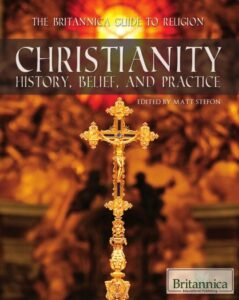
Christianity: History, Belief, and Practice, The Britannica Guide to Religion, Matt Stefon (ed.), Britannica Educational Publishing in association with Rosen Educational Services (New York, NY, USA), 2012:
THE IMMORTALITY OF THE SOUL
Human beings seem always to have had some notion of a shadowy double that survives the death of the body. But the idea of the soul as a mental entity, with intellectual and moral qualities, interacting with a physical organism but capable of continuing after its dissolution, derives in Western thought from Plato and entered into Judaism during approximately the last century before the Common Era and thence into Christianity. In Jewish and Christian thinking it has existed in tension with the idea of the resurrection of the person conceived as an indissoluble psychophysical unity. Christian thought gradually settled into a pattern that required both of these apparently divergent ideas. At death the soul is separated from the body and exists in a conscious or unconscious disembodied state. But on the future Day of Judgment souls will be re-embodied (whether in their former but now transfigured earthly bodies or in new resurrection bodies) and will live eternally in the heavenly kingdom.
Within this framework philosophical discussion has centred mainly on the idea of the immaterial soul and its capacity to survive bodily death. Plato, in the Phaedo, argued that the soul isinherently indestructible. To destroy something, including the body, is to disintegrate it into its constituent elements; but the soul, as a mental entity, is not composed of parts and is thus an indissoluble unity. Although Thomas Aquinas’ concept of the soul, as the “form” of the body, was derived from Aristotle rather than Plato, he too argued for its indestructibility (Summa theologiae, I, Q. 76, art. 6). The French philosopher Jacques Maritain (1882–1973), a modern Thomist, summarized the conclusion as follows: “A spiritual soul cannot be corrupted, since it possesses no matter; it cannot be disintegrated, since it has no substantial parts; it cannot lose its individual unity, since it is self-subsisting, nor its internal energy since it contains withinitself all the sources of its energies”. But though it is possible to define the soul in such a way that it is incorruptible, indissoluble, and self-subsisting, critics have asked whether there is any good reason to think that souls as thus defined exist. If, on the other hand, the soul means the conscious mind or personality —something whose immortality would be of great interest to human beings — this does not seem to be an indissoluble unity. On the contrary, it seems to have a kind of organic unity that can vary in degree but that is also capable of fragmentation and dissolution.
Much modern philosophical analysis of the concept of mind is inhospitable to the idea of immortality, for it equates mental lifewith the functioning of the physical brain. Impressed by evidence of the dependence of mind on brain, some Christian thinkers have been willing to accept the view — corresponding to the ancient Hebrew understanding — of the human being as an indissoluble psychophysical unity, but these thinkers have still maintained a belief in immortality, not as the mind surviving the body, but as a divine resurrection or re-creation of the living body-mind totality. Such resurrection persons would presumably be located in a space different from that which they now inhabit and would presumably undergo a development from the condition of a dying person to that of a viable inhabitant of the resurrection world. But all theories in this area carry with them their own difficulties, and alternative theories emerged.
– pp. 177, 178.
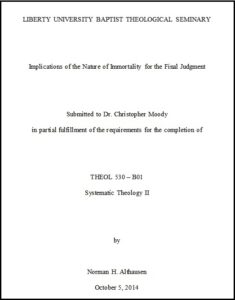
Norman H. Althausen, Implications of the Nature of Immortality for the Final Judgment (thesis), Liberty University Baptist Theological Seminary, Lynchburg, Virginia, USA, 2014:
Immortality
One of the foundations for the traditionalist‘s doctrine of conscious, eternal torment for the wicked is the belief that the human soul is immortal and thus, after judgment, must go somewhere. This is occasionally denied, and the scriptures are appealed to as the only basis for the doctrine. Nevertheless, this section will show that the immortality of the soul is indeed an important piece of the foundation. The scriptural evidence for conscious eternal torment will be examined in a later section. Apart from a few possible references, the Old Testament does not have any well-developed teaching about life after death. The Hebrew view of death centered around the nature of Sheol:
What, then, has the Old Testament to say concerning life after death? The Hebrews of Old Testament times had no positive ideas about Sheol. Everything was negative rather than positive. If Sheol is to be thought of as evidence of the persistence of anything, it is better to think of it as the persistence of death rather than of life.
Snaith summarizes by saying, “There is no reference to life after death in the Old Testament apart from two instances only, Isaiah 26:19 and Daniel 12:2.” The intertestamental period saw a development of a belief in a resurrection of the dead, so that by the time of the New Testament, there is a diversity of opinions as represented by the Pharisees and Sadducees. The Greek philosopher Plato (429-347 BC) developed the idea of the immortality of soul based on the concept that the soul was simple and indivisible:
Ungenerated and eternal, it existed before the body did that it inhabited, and it would survive the body as well. To be apart from the body was the soul‘s natural and proper state; to be imprisoned in the body was its punishment for faults committed during a previous incarnation.
The Apologists of the second and third centuries, like Ignatius, Irenaeus, and Tertullian, borrowed certain aspects of Plato‘s immortal soul, with modifications, as they attempted to demonstrate the rationality of the Christian faith to the pagan culture they lived in. According to Jaeger:
The Christian fathers rejected the story of the transmigration of the soul, but they accepted the immortality of the individual soul, since they found it reconcilable with Paul’s notion of the resurrection and with Jewish-Christian angelology, i.e., the existence of a world of immaterial beings.
Through these developments, the idea of the inherent immortality of the soul became incorporated to eschatological theology.
As logical as this idea may seem, the important factor is whether Scripture teaches the inherent immortality of the soul. The first point to make is that God is the only one who possesses inherent immortality. 1 Timothy 1:17 states: “Now to the King eternal, immortal, invisible, the only God, be honor and glory for ever and ever. Amen.” 1 Timothy 6:15-16 is even more emphatic: “God, the blessed and only Ruler, the King of kings and Lord of lords, who alone is immortal and who lives in unapproachable light, whom no one has seen or can see. To him be honor and might forever. Amen.” Immortality belongs to God alone, but he will share it with the redeemed in Christ: “To those who by persistence in doing good seek glory, honor and immortality, he will give eternal life (Rom 2:7). To the Christian is given the promise of immortality: “When the perishable has been clothed with the imperishable, and the mortal with immortality, then the saying that is written will come true: “Death has been swallowed up in victory” (1 Cor 15:54). Nowhere in Scripture is immortality given to unbelievers. As Snaith observes, “Neither here nor anywhere else in the Bible is there any suggestion of an immortal soul which survives death. Nothing survives unless it be raised up by God, and the condition is that the man must be “in Christ” and so “born of the spirit.” Immortality is not inherent, but is conditioned on faith in Christ.
Despite the clear scriptural teaching, traditionalists continue to insist on this belief even if not found in the Bible because it is necessary to establish the doctrine of hell being conscious eternal torment. W. G. T. Shedd stated in the late nineteenth century:
But irrepressible and universal as it is, the doctrine of man‘s immortality is an astonishing one, and difficult to entertain. For it means that every frail finite man is to be as long-enduring as the infinite and eternal God; that there will no more be an end to the existence of the man who died today than there will be of the Deity who made him… Yes, man must exist. He has no option. Necessity is laid upon him. He cannot extinguish himself. He cannot cease to be.”
The following quotes prove that this position is based more on assumption than demonstration from Scripture. Lehman Strauss asserts, “The Word of God assumes the eternal existence of every soul regardless of its destiny. Every man‘s soul is immortal and can never be annihilated (emphasis added).” Shedd has emphasized that the immortality of the soul “is nowhere formally demonstrated, because it is everywhere assumed”, Goulburn insists that it “seems to be graven on man‘s heart almost as indelibly as the doctrine of God‘s existence,” and Herman Bavinck insists that immortality of the soul is a biblical doctrine, but it is better demonstrated by reason than by revelation. Clearly, the doctrine of the immortality of the soul lacks biblical support, but since it is a necessary component of the traditionalist position, it must be retained. Before moving to a consideration of the scriptural data both for and against annihilationism, it is necessary to examine the meaning of the Greek word αιωνιος (aionios), most commonly translated as eternal.
Aionios
Aionios is an adjective derived from the noun aion, which means age or eternity. It is most often translated as eternal or everlasting. According to the TDTNT (Kittel, ed.), aionios is used in the sense of eternal in three ways: 1) as a predicate of God in which case it “contains not merely the concept of unlimited time without beginning or end, but also of the eternity which transcends time;” 2) “it is also used of divine possessions and gifts;” and 3) “as a term for the object of eschatological expectation,” and its meaning “extends beyond the purely temporal meaning.”
The question is, does aionios always mean temporal eternity, or everlasting time, or can it also have a qualitative aspect, such as pertaining to the age to come? Fudge cites Emmanuel Petavel as stating that at “at least seventy times in the Bible, this word qualifies ‘objects of a temporary and limited nature,’ so that it signifies only ‘an indeterminate duration of which the maximum is fixed by the intrinsic nature of the person or things.’” He then cites a number of things in which aionios (and its Hebrew equivalent, olam) refers to things which have come to an end:
the sprinkling of the blood at the Passover was an “everlasting” ordinance (Exodus12:24); 2) the Aaronic priesthood (Lev 3:17) ; 3) Caleb‘s inheritance (Josh 5:17); 4) Solomon‘s temple (1 Kings 8:12-13); 5) The period of a slave‘s life (Deut 15:17) ; 6) Gehazi‘s leprosy (2 Kings 5:27). These things did not last “forever” in the sense of “time extended without limitation.” They did last beyond the vision of those who first heard them called “everlasting.” And no time limit was then set at all.
According to Fudge, aionios clearly means everlasting in its temporal sense, but also can have a qualitative sense. This is related to the “Jewish attitude about history and last things, in which time is divided into two ages – the present age and the age to come.” Bruce Milne, a traditionalist, observes, “The word commonly rendered ‘eternal’ in our New Testament translations is in fact literally ‘of the age (to come)’ Thus it refers in the first instance to a particular quality of life, rather than to its durational quantity.” This does not negate the temporal aspect. Thus eternal life can mean, the life characteristic of the age to come, which will also be everlasting. Eternal judgment and eternal punishment can mean the judgment and punishment pertaining to the age to come. J. C. Davis, in his analysis of the use of “eternal life” in the writings of John, examines the question of whether eternal life is something for the future or something the believer possesses now. He concludes that this is another example of the “now, but not yet” aspect of the Christian life, and that eternal life comes in two stages: the future, when Christ returns, and the right now, where we already have eternal life. John 17:3 emphasizes the qualitative aspect of eternal life: “Now this is eternal life: that they know you, the only true God, and Jesus Christ, whom you have sent.”
A final aspect of the use of eternal, is when the adjective modifies a noun that names the result of an action (usually with the suffix –ment or –tion). There are five uses of this kind in the New Testament: eternal salvation (Heb 5:9); eternal redemption (Heb 9:12); eternal judgment (Heb 6:2); eternal punishment (Matt 25:46); and eternal destruction (2 Thess 1:9). Fudge comments:
Here we see again the other-age quality of the “eternal.” There is something transcendent, eschatological, divine about this judgment, this sin, this punishment and destruction, this redemption and salvation. They are not merely human, this-age matters, but are of an entirely different nature. Yet the contexts and contents of Scripture passages in which aionios modifies the words judgment, sin, punishment, destruction, redemption, and salvation justify the conclusion that something about each of these will never come to an end.
In all of these cases eternal modifies a noun that is the result of an action, not an action itself. Thus eternal salvation does not mean that God is forever saving his people, but that the result of this salvation will have no end. Similarly, eternal redemption does not mean redeeming forever, but that the results last forever. Likewise, eternal judgment, punishment, and destruction do not mean that God will be judging, punishing, and destroying forever, but that the results of these actions will last forever.
– pp. 5-10.
Source:
http://www.academia.edu/9203308/Implications_of_the_Nature_of_Immortality…
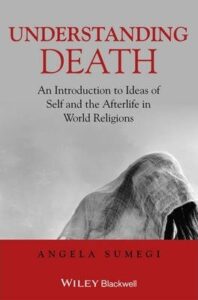
Angela Sumegi, Understanding Death: An Introduction to Ideas of Self and the Afterlife in World Religions, Wiley-Blackwell, West Sussex, England, 2014.
There are a number of words in Hebrew that relate to the animating element that is the mark of a living being: nefesh, neshamah, ruah. They all have slightly different nuances but all relate to concepts of inhalation breath, or wind. Nefesh is often translated “soul” in the sense of the personality, the quality of an individual that can become noble or debased, and neshamah or ruah are used to refer more explicitly to the life principle or life-breath (Segal, 1989, p. 144). Still, however we describe it – whether as animating principle, life-force, breath of life – that which makes living creatures alive is understood to come from God and upon death the life-breath departs the body. The main point here, however, is that in the Biblical creation story, human beings are not a duality of mortal body and immortal soul; God’s breath animated the body made from the dust and the body became a living being. As Segal remarks: “In short the problem is that we use the term differently from the Hebrews: We think we have a soul; the Hebrews thought they were a soul” (Segal, 1989, p. 144). Upon death, the body returns to the dust from which it was formed and the life-breath returns to God from where it came. Personal identity, however, is no annihilated; the word nefesh is also used to refer to the shade or ghost of the person that remain after death, when the person is no longer a living soul but a dead soul. We will investigate this further below…
The breath of life is God’s breath, but it is difficult to establish exact meanings for the terms used to describe that which makes the difference between life and death. Gillman explains that they can be used quite interchangeably in the Bible.
Death is understood as the “going out” of the ruah [Psa. 146:4], or of the similar “going out” of the nephesh (as in Genesis 35:18), or of God’s “taking away” the nefesh (as 1 Kings 19:4) or the neshamah (as in Job 34:14). (Gillman, 1997, p. 76)
Although the notion of something “going out” of the body might suggest ideas of a separate and immortal soul entity that survives and continues without the body, this is not the view expressed in the books of Genesis or Psalms or Job. In those texts that date prior to the Hellenist period, a human being is regarded as a holistic combination of body and animating breath; the person does not possess a soul but is as soul, a being, living when the breath of life is present, dead when it is not. At that time also, it would seem that the beliefs of the Israelites regarding the afterlife, and Sheol as the place of the dead, were similar to those of the surrounding cultural environments of Mesopotamia and Canaan.
The idea that a dead person became a shade or ghost or spirit of some kind that dwelled in the land of the dead was common to Mesopotamian and Canaanite peoples. In Canaan, the Lord of Death was called Mot, who ruled over the underworld. Upon death, the vital element, equated with the “shade” or “soul” (nps – also related to breath, like the Hebrew nefesh) (Segal, 1989, p. 113), left the person and went to live in Mot’s kingdom of death. It is important to note here that the shadowy figures that populated the Mesopotamian and Canaanite underworlds, those who, through necromantic rites, could be raised to communicate with the living, should not be understood to be disembodied souls, in the sense of an immortal immaterial essence that enjoys bliss or misery. They were ghosts, shadows of theirs former selves, cut off from life, devoid of the vitality of life. The Mesopotamian and Canaanite underworlds were places of neither punishment nor reward but simply the final destination of all the dead, regardless of their achievements or status in life. In all these ways, they resemble the Biblical concept of Sheol as the place of the dead – a place that the Book of Job calls “the land of gloom and deep darkness” (Job 10:21). Biblical references to Sheol are linked with the finality and the tragic nature of death…
Besides the notion of Sheol, the Bible refers to another abode of the dead called in Greek Gehenna. This was originally a large ravine beside Jerusalem which was apparently used as a city garbage dump and was also associated with a cult that practiced child sacrifice, those who “passed children through fire” (Segal, 1989, p. 135). During the Hellenistic period (333-63 BCE) and especially in the Christian New Testament, Gehenna becomes the metaphoric basis for ideas of hell as a place where the wicked dead are condemned to burn for all eternity, but in the Biblical records that date prior to the destruction of the First Temple in 586 BCE, there is no sense of the dead attaining either t the joys of heaven or the fires of hell. Sheol is described as a place of gloom and is associated with unwanted or untimely death (Segal, 1989, p. 139). The Bible, however, also speaks of death as a peaceful rest belonging to the natural order of things. At the end of a long and fruitful life, the dead one is “gathered to his people” (Gen. 25:8) or “sleeps with his ancestors” (1 Kings 1:21). Exactly what these phrases mean is not entirely clear, but what is clear is that in the First Temple Period of Israelite history, life was perceived as God’s gift and all God’s blessings and rewards were to be had in life, not after death. As the famous story of Job recounts, after he had suffered through all the trials laid upon him to test his faith, God rewards Job in life with great wealth, the love of friends and family, beautiful children, a long life, and a peaceful death: “After this Job live one hundred and forty years, and saw his children, and his children’s children, four generations. And Job died, old and full of days” (Job 42:16, 17)…
In the fourth century BCE, the armies of Alexander the Great defeated the Persians and Palestine came under the rule of the Greeks. This was the beginning of the Hellenistic period in Jewish history and it marked another shift in the way Jewish thinkers approached the question of death and afterlife. Ideas of bodily resurrection, as we have seen, developed as a natural extension of faith in God’s justice, to provide hope for those who gave up life rather than renounce their beliefs. The notion, however, that each material, mortal body houses an immaterial, immortal soul that continues after death and experiences a beatific afterlife can be traced to the influence of Greek thinkers and philosophers, most particularly Plato (c. fifth century BCE). For Plato, the soul was the essence of the human faculty of thought and reason, the essence of the individual self, and its departure signified death. Death was a welcome liberation of the soul from its bodily prison. To develop the soul was to develop one’s intellect, reason, and appreciation of the Beautiful and the Good. Plato taught that the soul pre-existed the body and after many reincarnations was destined for its own divine life in a realm of perfect essences or Forms. In popular Greek mythology, the dwelling place of the immortal soul came to be identified with the Elysian Fields, the Isles of the Blessed located in the sky among the stars.
– pp. 80, 81, 83, 87.
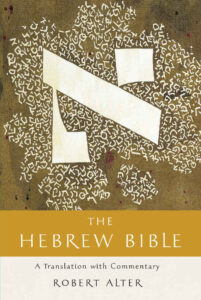
Robert Alter, The Hebrew Bible: A Translation with Commentary, Three Volumes, W. W. Norton and Company, New York and London, 2019.
Alter told me about his decision to reject one of the oldest traditions in English translation and remove the word “soul” from the text. That word, which translates the Hebrew word nefesh, has been a favorite in English-language Bibles since the 1611 King James Version. But consider the Book of Jonah 2:6 in which Jonah, caught in the depths of a giant fish’s gut, sings about the terror of near-death by water. According to the King James Version, Jonah says that the Mediterranean waters “compassed me about, even to the soul” — or nefesh. The problem with this “soul,” for Alter, is its Christian connotations of an incorporeal and immortal being, the dualism of the soul apart from the body. Nefesh, to the contrary, suggests the material, mortal parts, the things that make us alive on this earth. The body.
“Well,” Alter said, speaking in the unrushed, amused tone of a veteran footnoter. “That Hebrew word, nefesh, can mean many things. It can be ‘breath’ or ‘life-breath.’ It can mean ‘throat’ or ‘neck’ or ‘gullet.’ Sometimes it can suggest ‘blood.’ It can mean ‘person’ or even a ‘dead person,’ ‘corpse.’ Or it can be ‘appetite’ or something more general: ‘life’ or even ‘the essential self.’ But it’s not quite ‘soul.’ ”
But, I asked Alter, doesn’t “soul” help dramatize the scene’s intense emotion? I mentioned another instance of the word nefesh, the terrifyingly evocative line from the King James’ translation of Psalm 69: “For the waters are come in unto my soul.”
“Oh, yes,” Alter said, with a smile. “That one does have a certain emotional resonance to it. But it’s not what the poet had in mind. And, I would add that the line ‘for the waters have come up to my neck’ … is also rather dramatic.”
Later I looked up the Jonah verse and saw that Alter’s translation was true to the poem’s formal structure. The verse starts with Jonah’s declaring that water had reached his nefesh — his “neck,” as Alter had it — and ends with his exclaiming that his head had been covered with seaweed. Biblical poetry is often made up of line pairings composed of analogous images, and Alter had chosen an anatomical noun, “neck,” that logically matched “head” in the parallel clause. You don’t need to know Hebrew etymology to see that “soul” doesn’t fit the analogy. The poetic structure dictates its own logic.
Tracing these kinds of formal structures in the ancient Hebrew text, exploring their significance and arguing for their relevance has been Alter’s lifelong mission as a literary critic. As a translator, he has tracked verse by verse through the Hebrew Bible to make these structures visible in English, in some cases for the first time. Over the course of his career, he has also helped establish the University of California, Berkeley, where he has been a professor since the 1960s, as one of the world’s premier centers of Hebrew literary study. Selections of his Bible translation, which have been published every few years since the 1990s, have sold robustly and received praise from literary critics like James Wood, who wrote that Alter’s 2004 volume, “The Five Books of Moses,” “greatly refreshes, sometimes productively estranges, words that may now be too familiar to those who grew up with the King James Bible.” Now we finally have the complete translation.
– Avi Steinberg, The New York Times Magazine, Dec. 20, 2018. See here the full interview.

